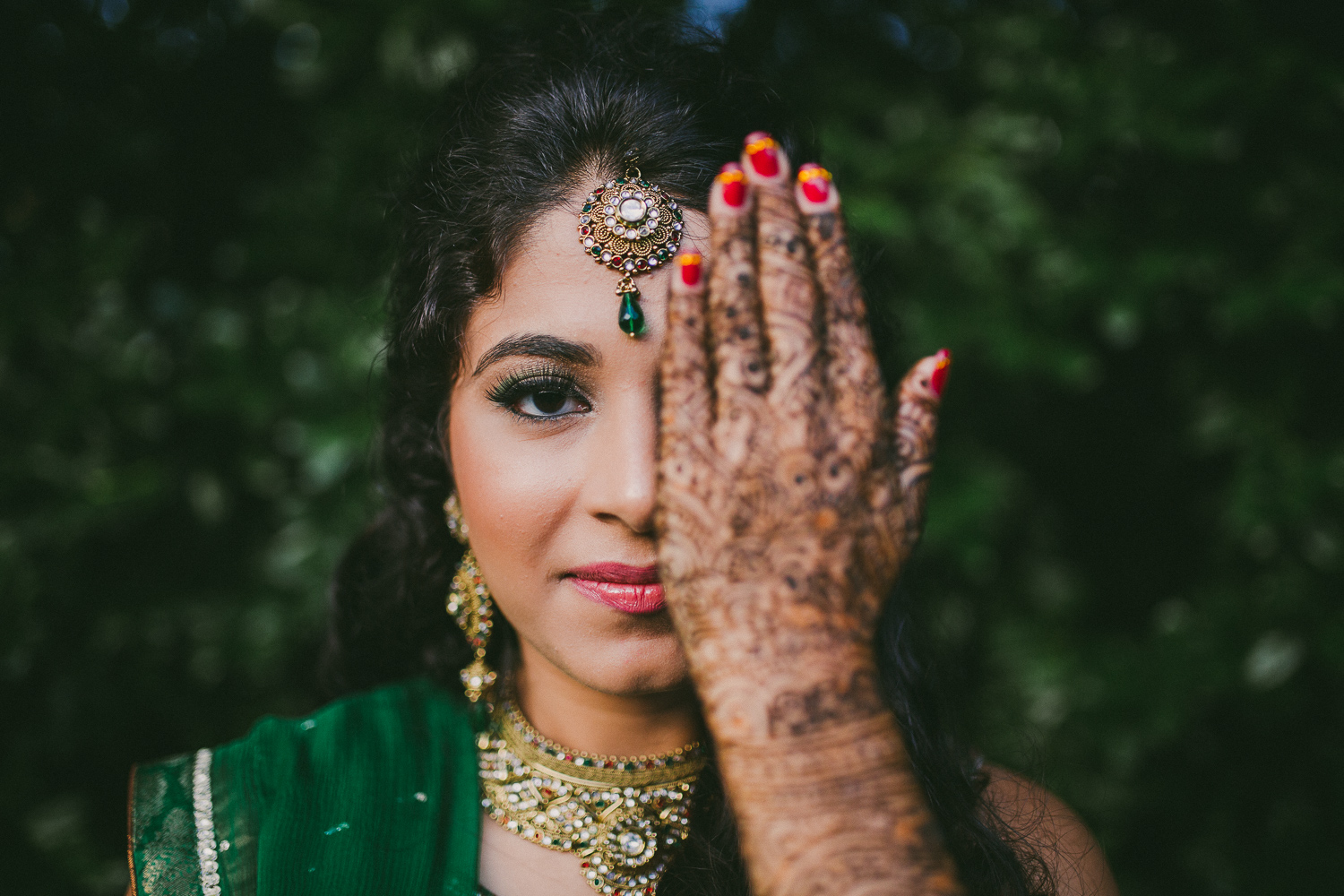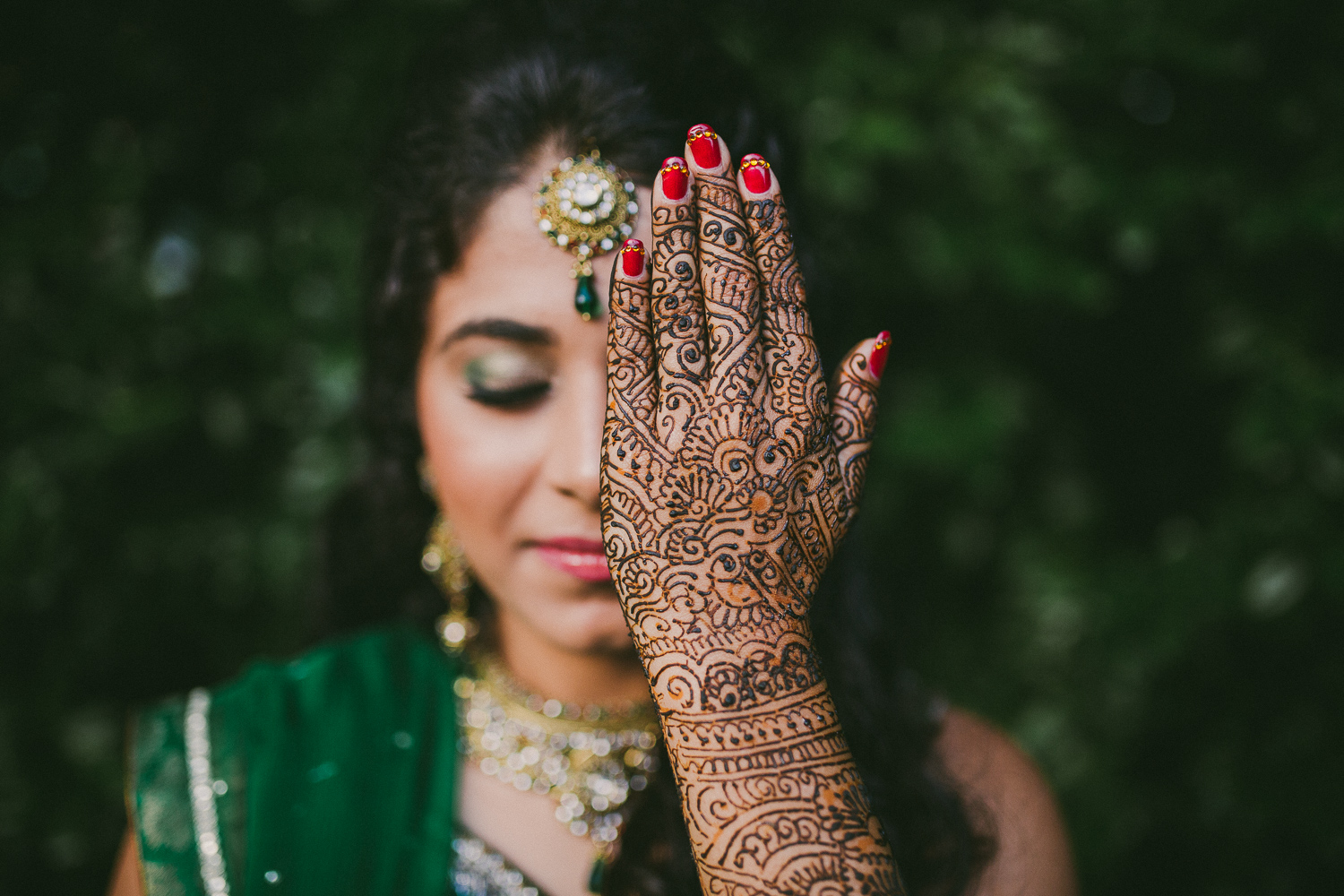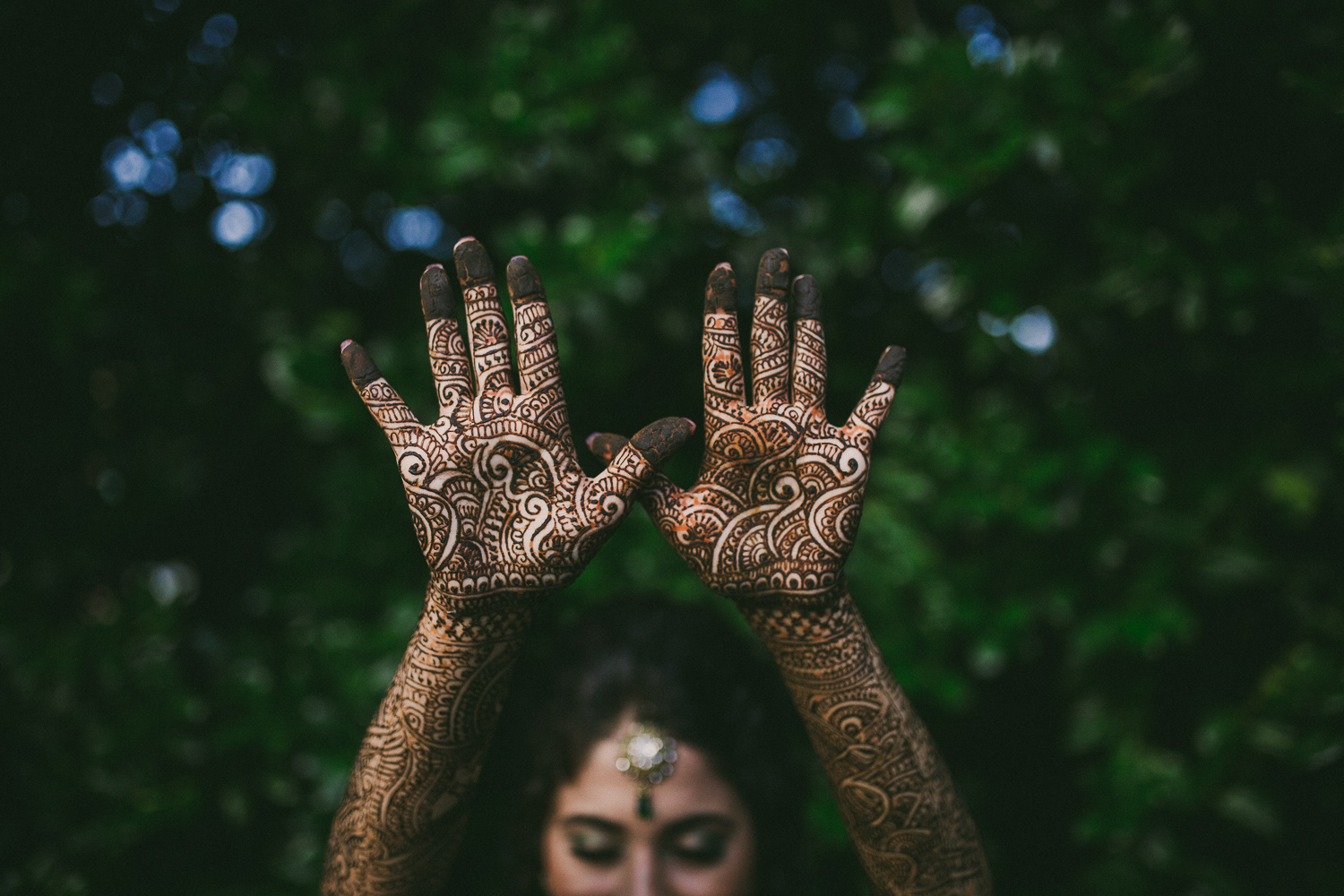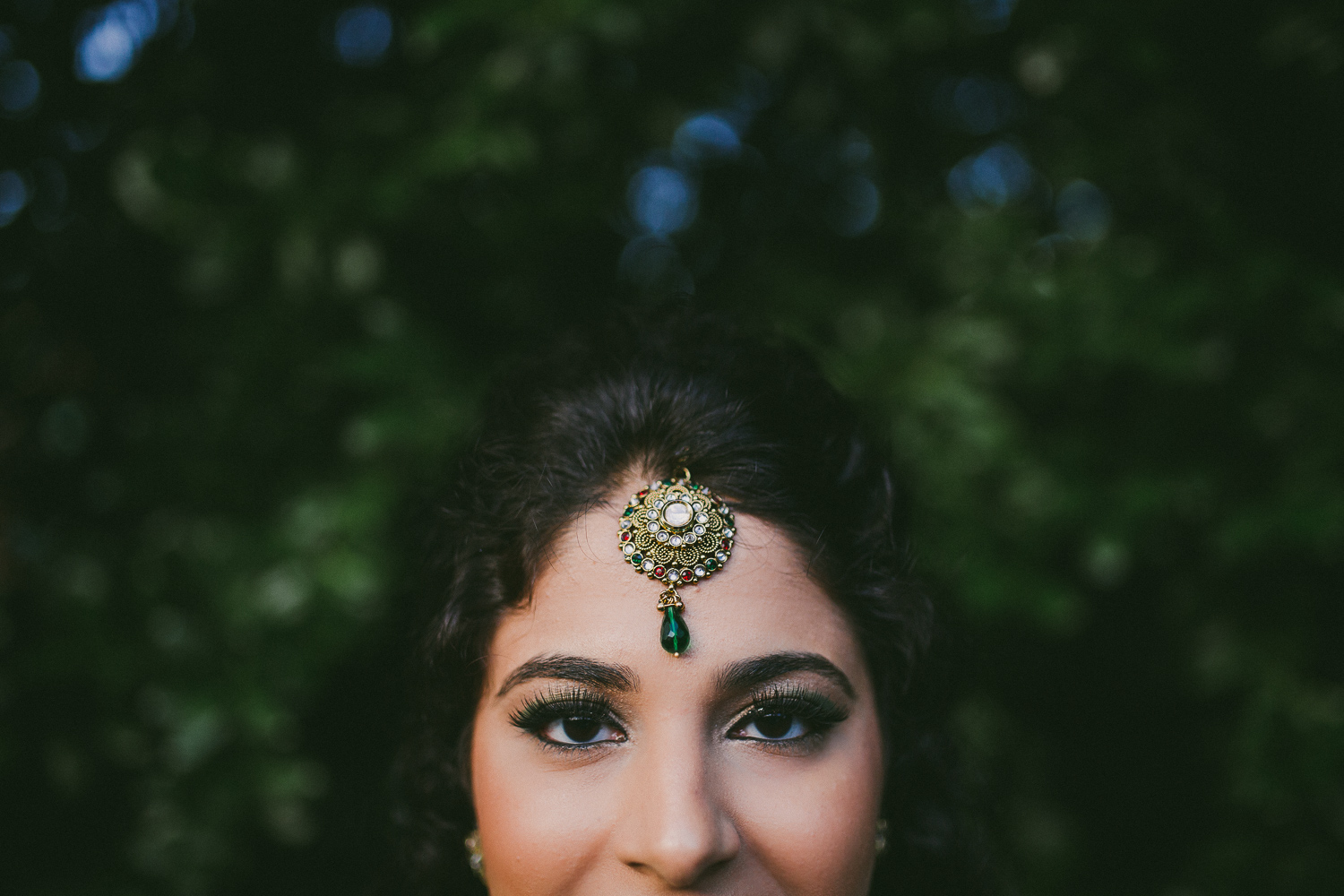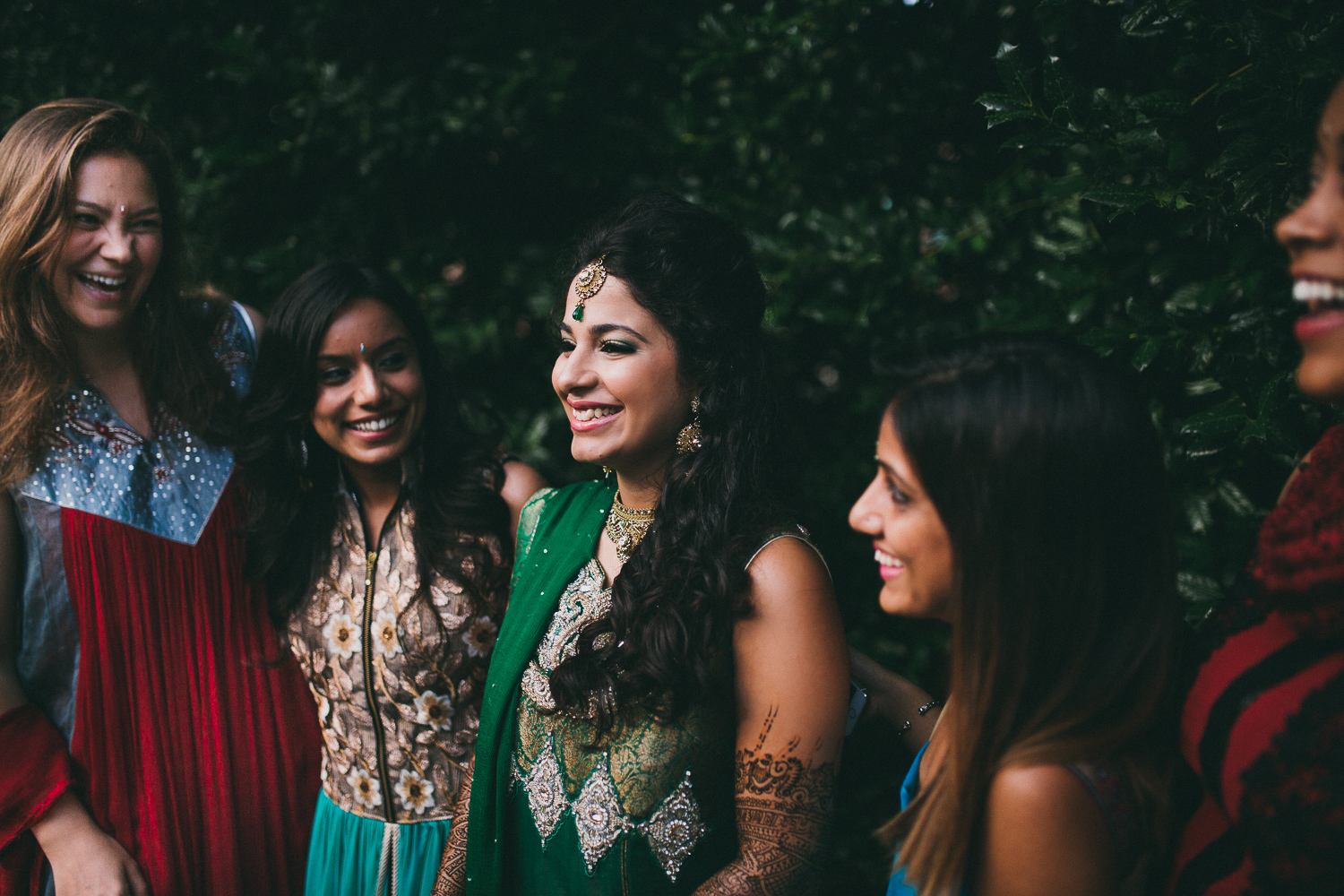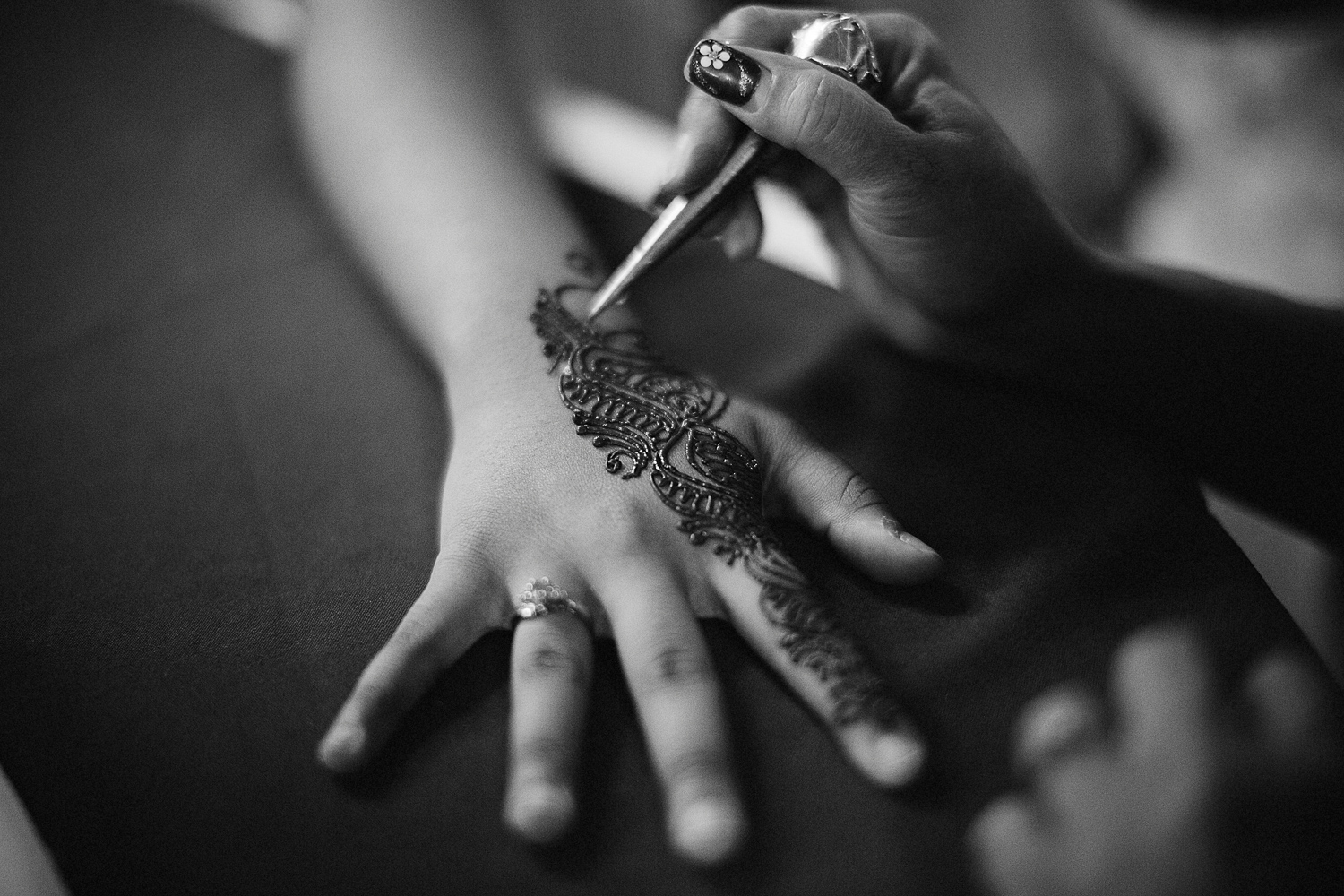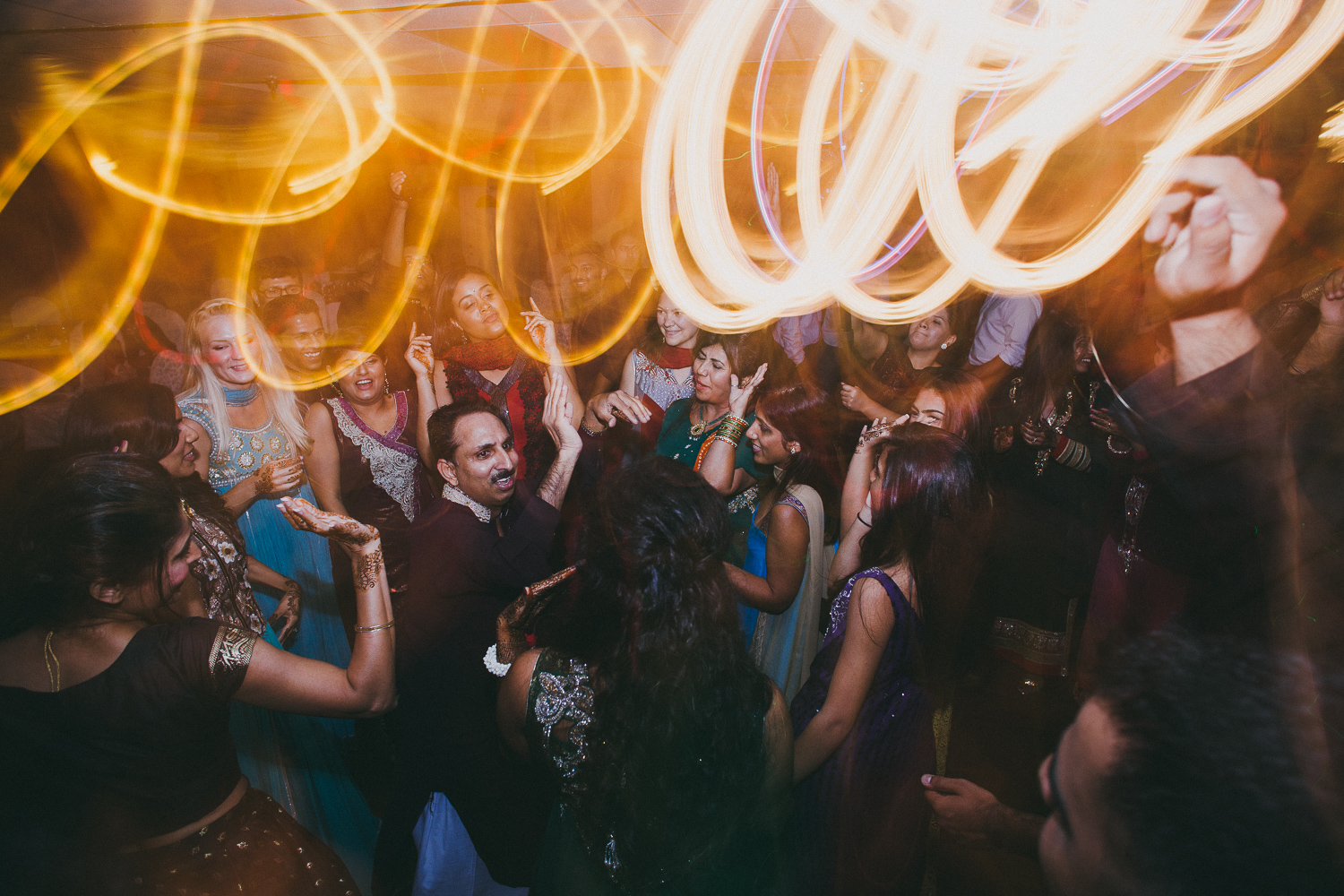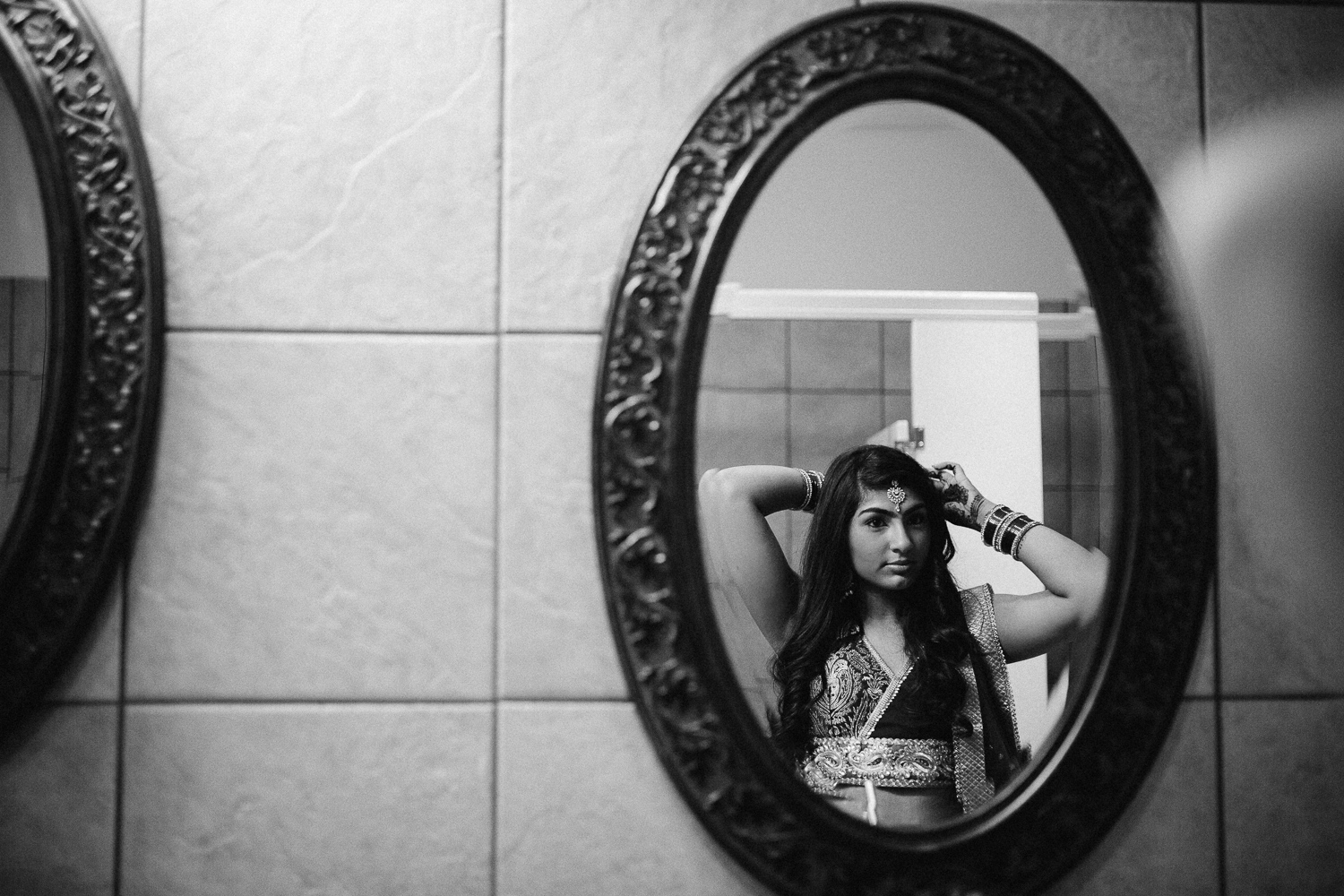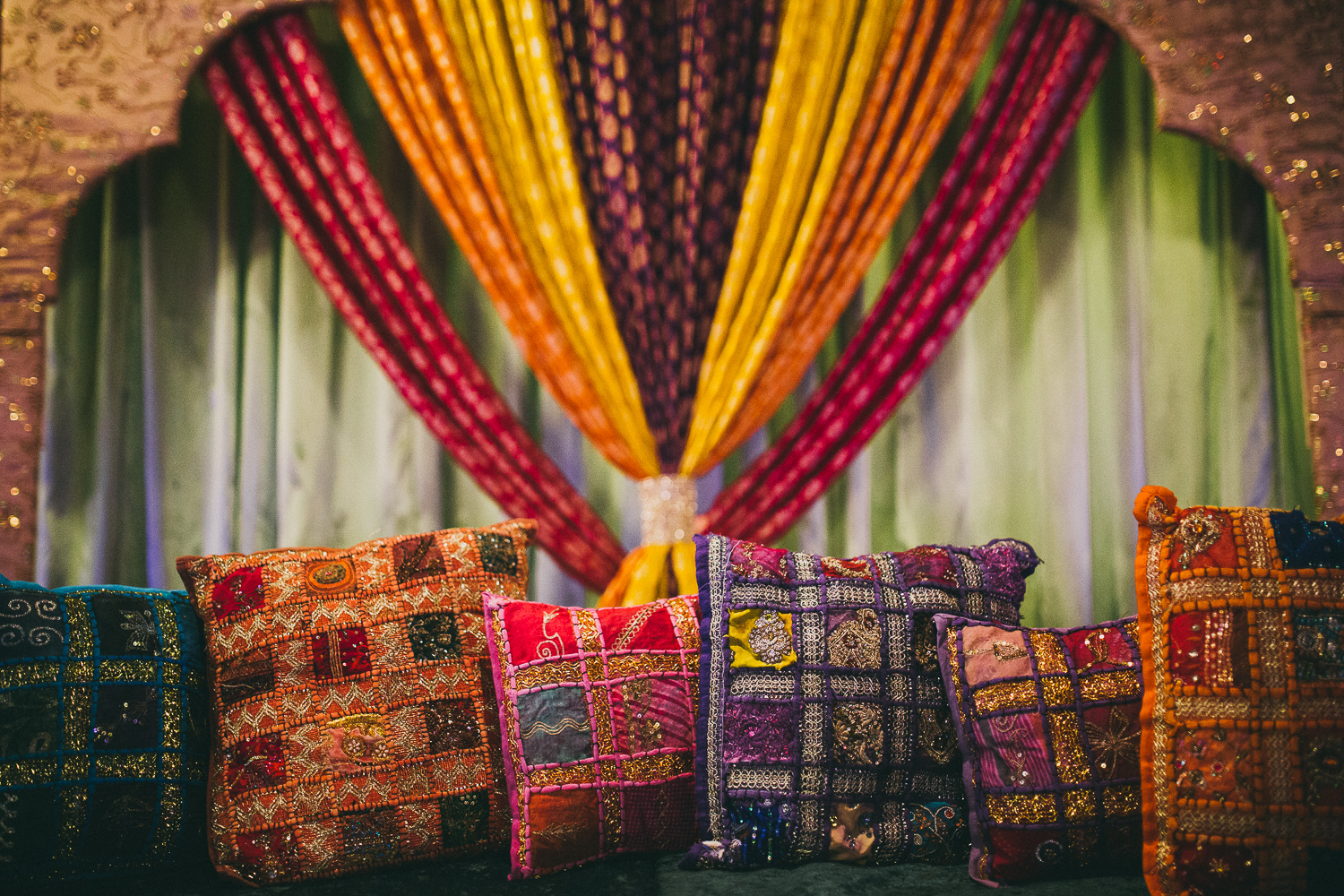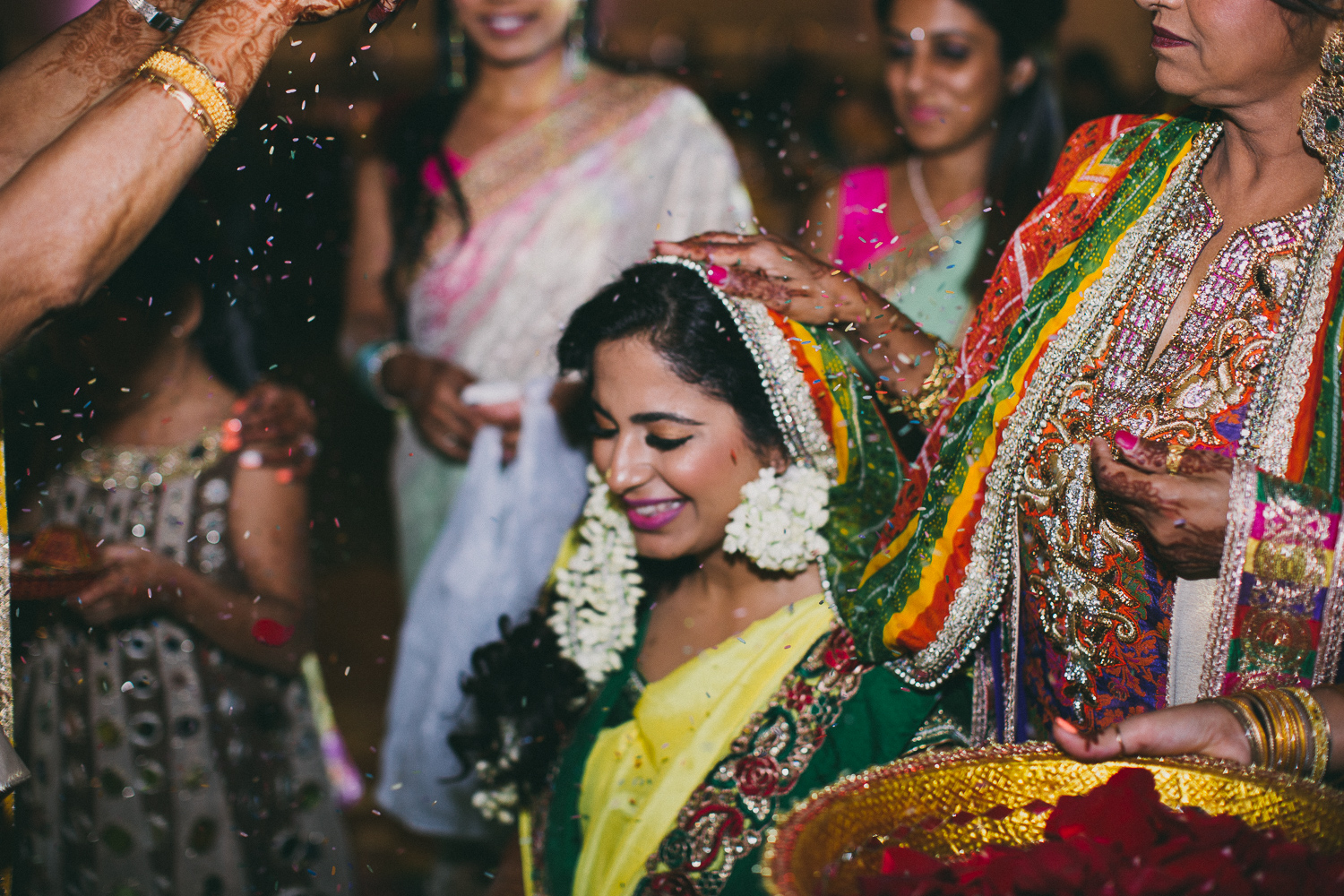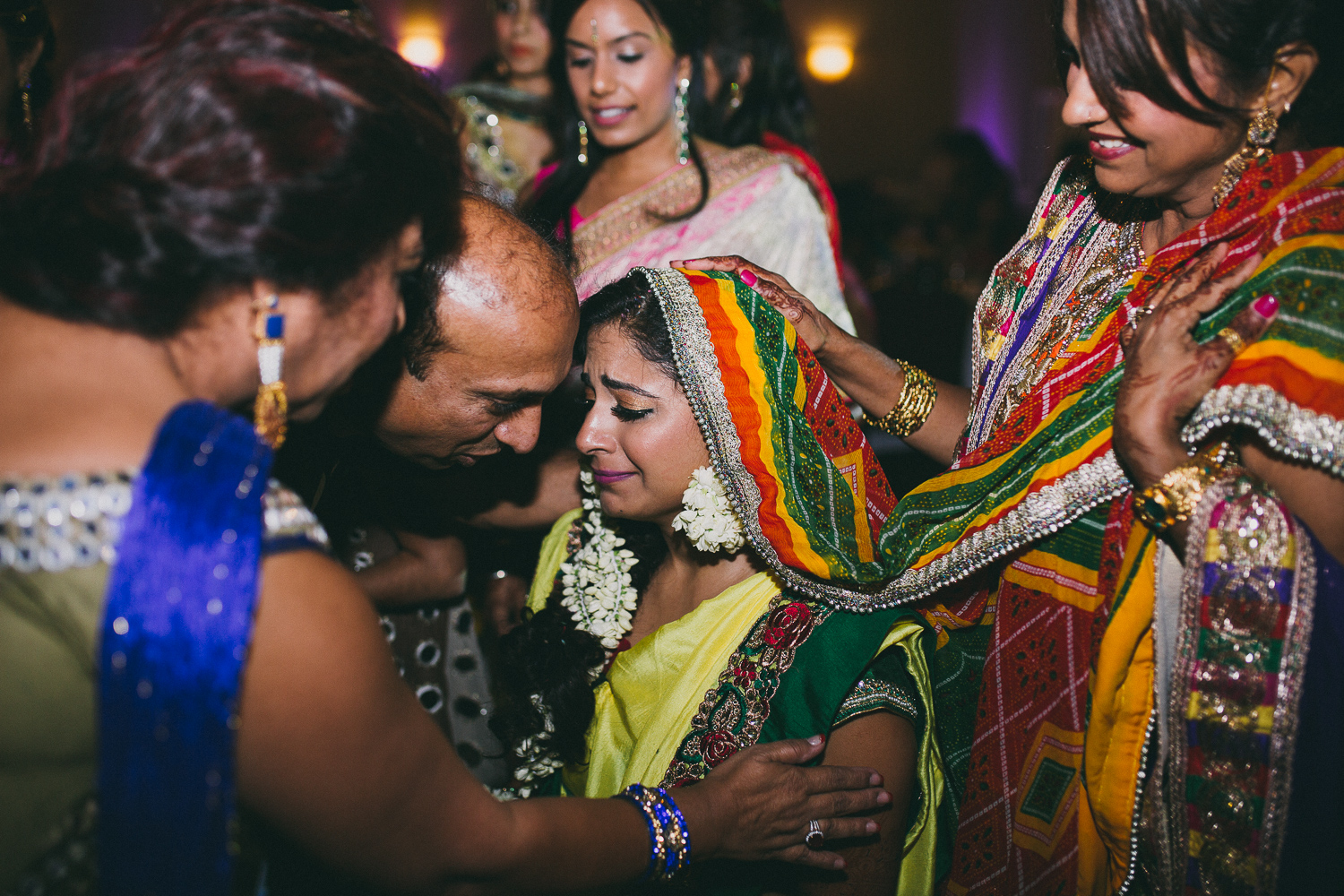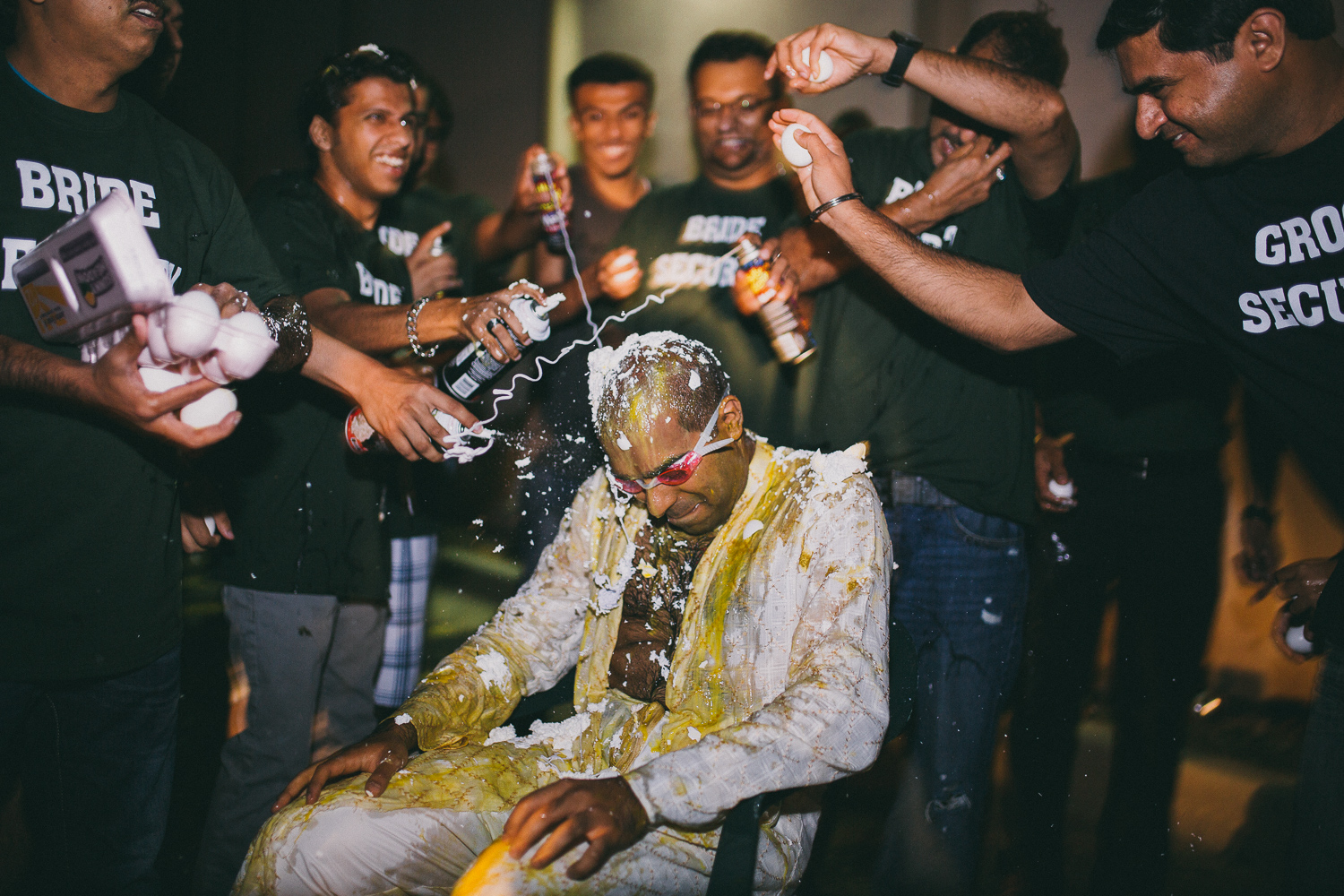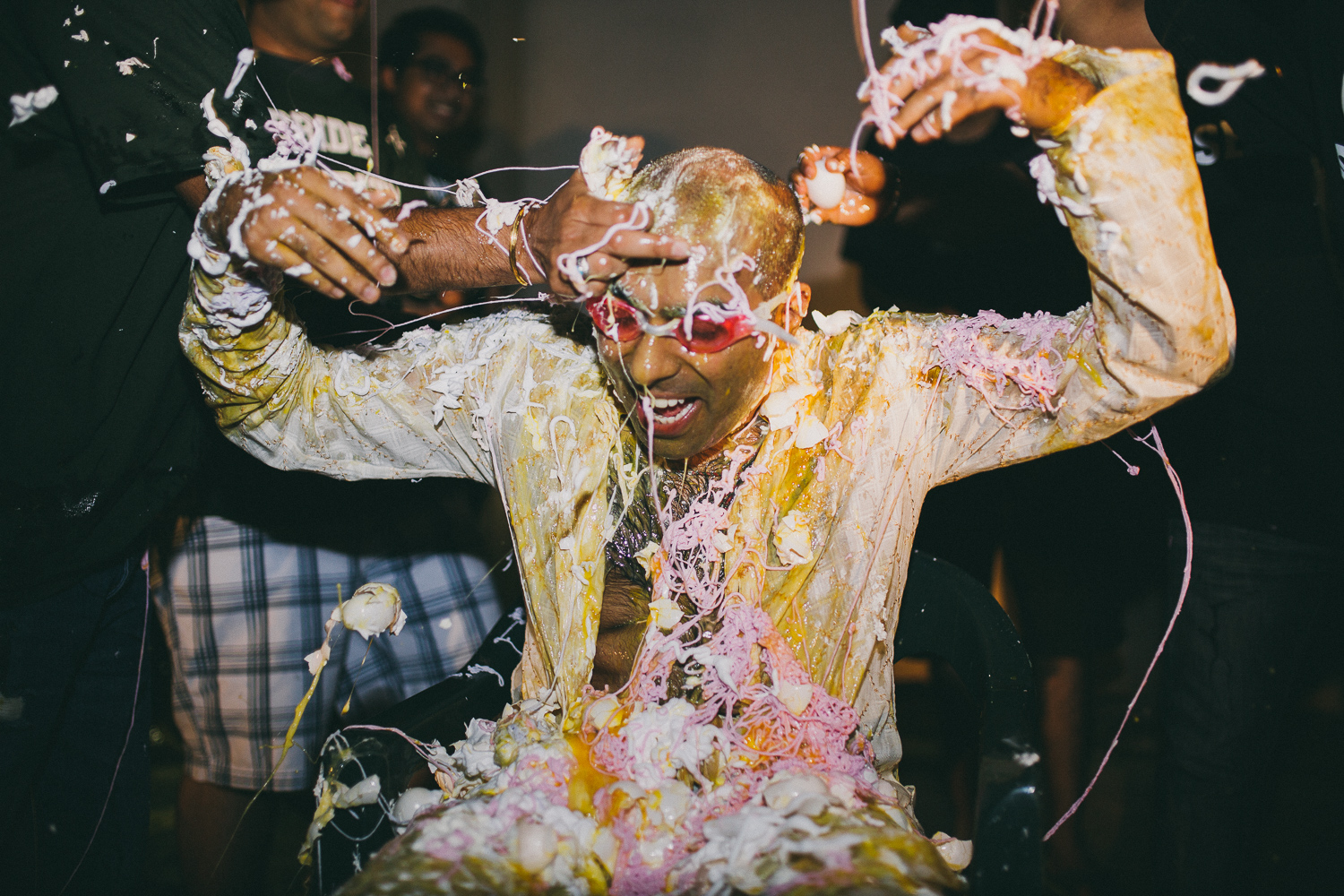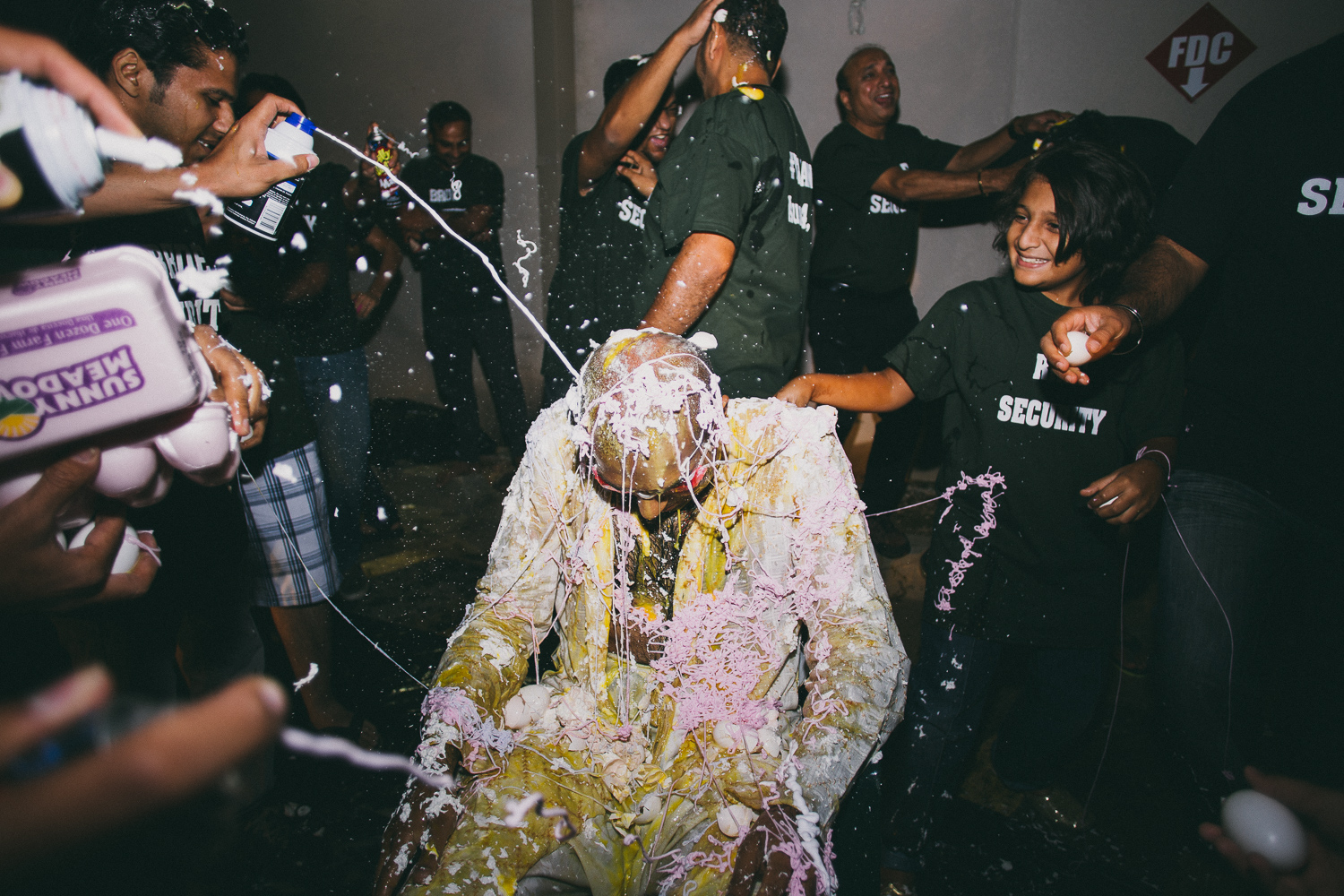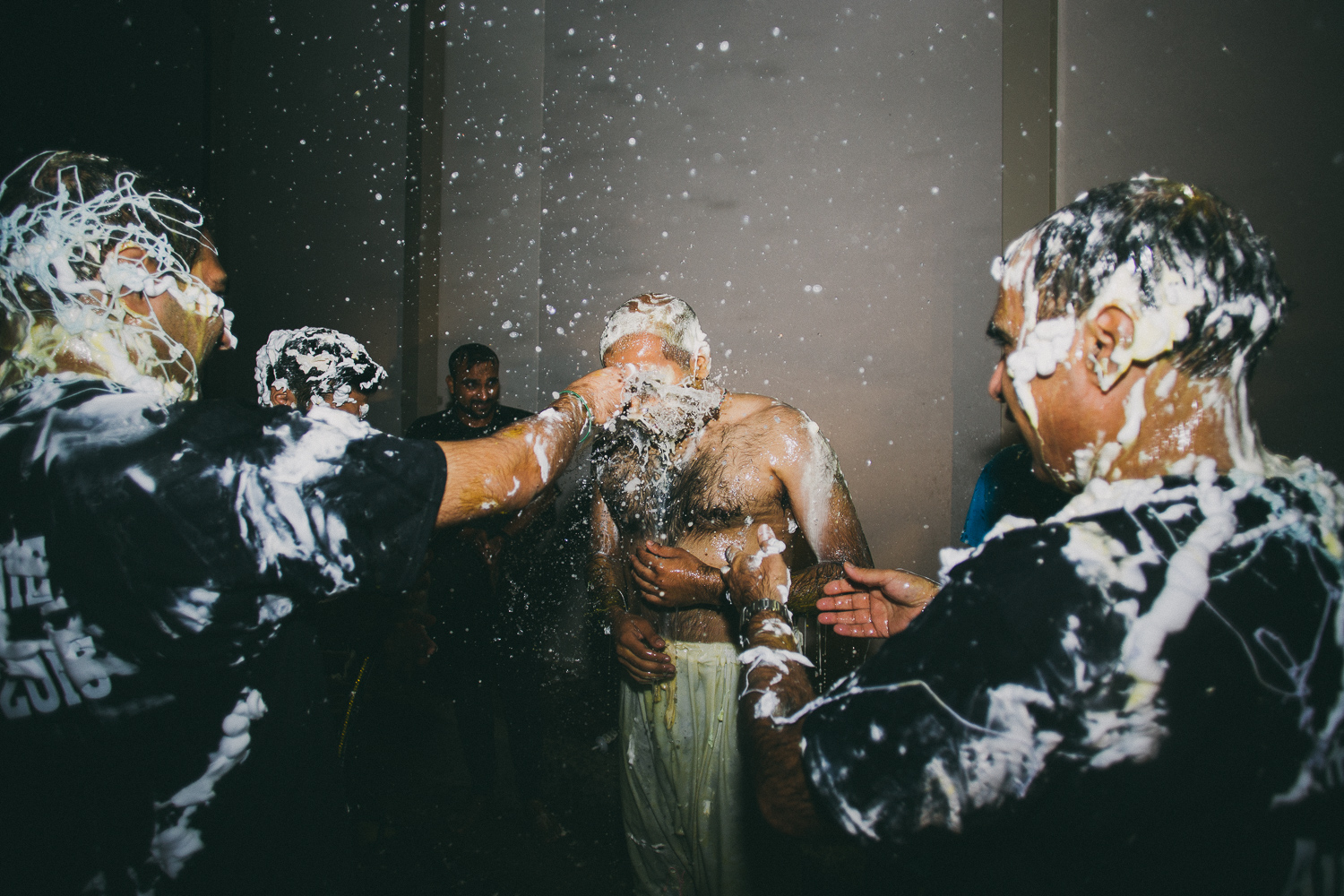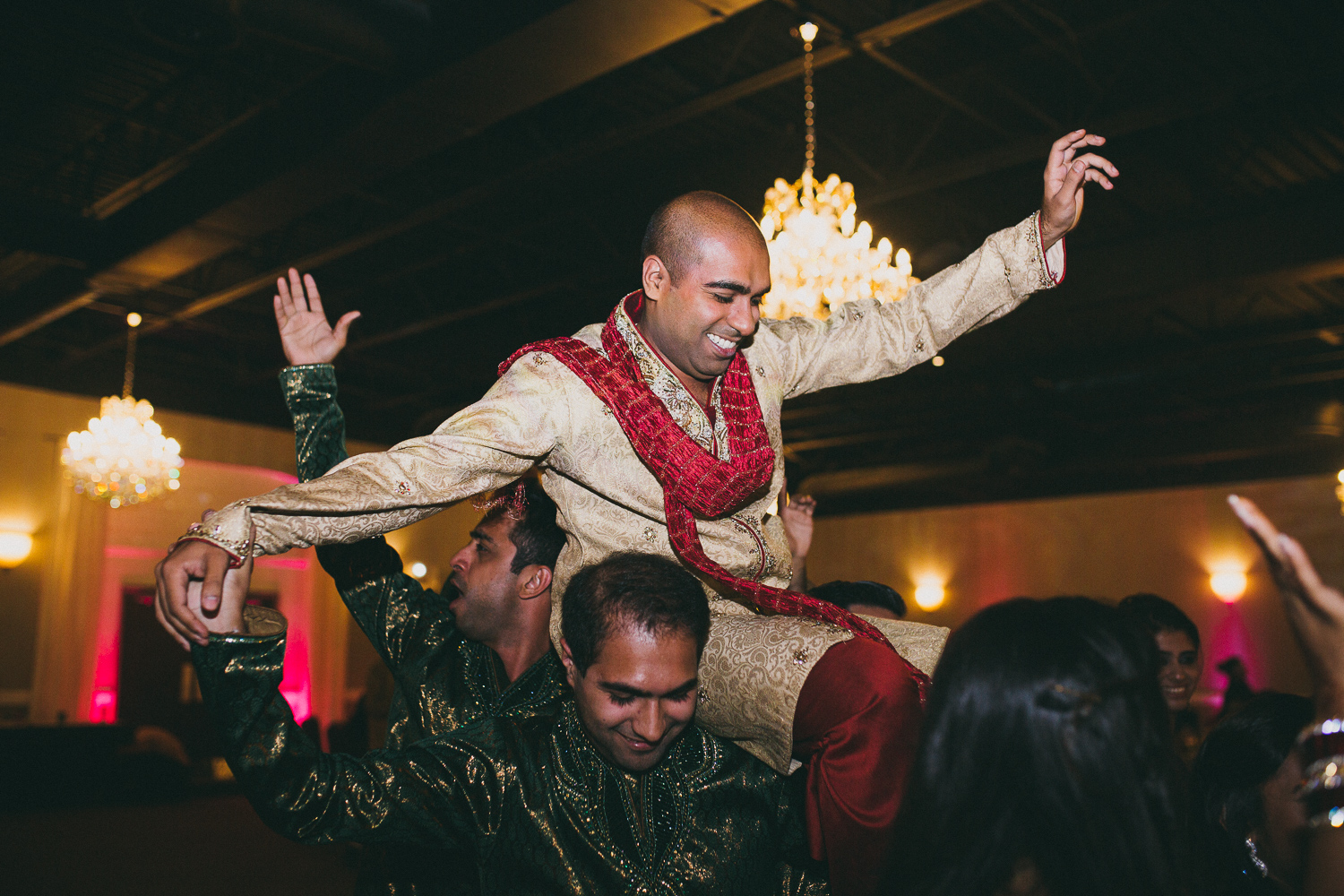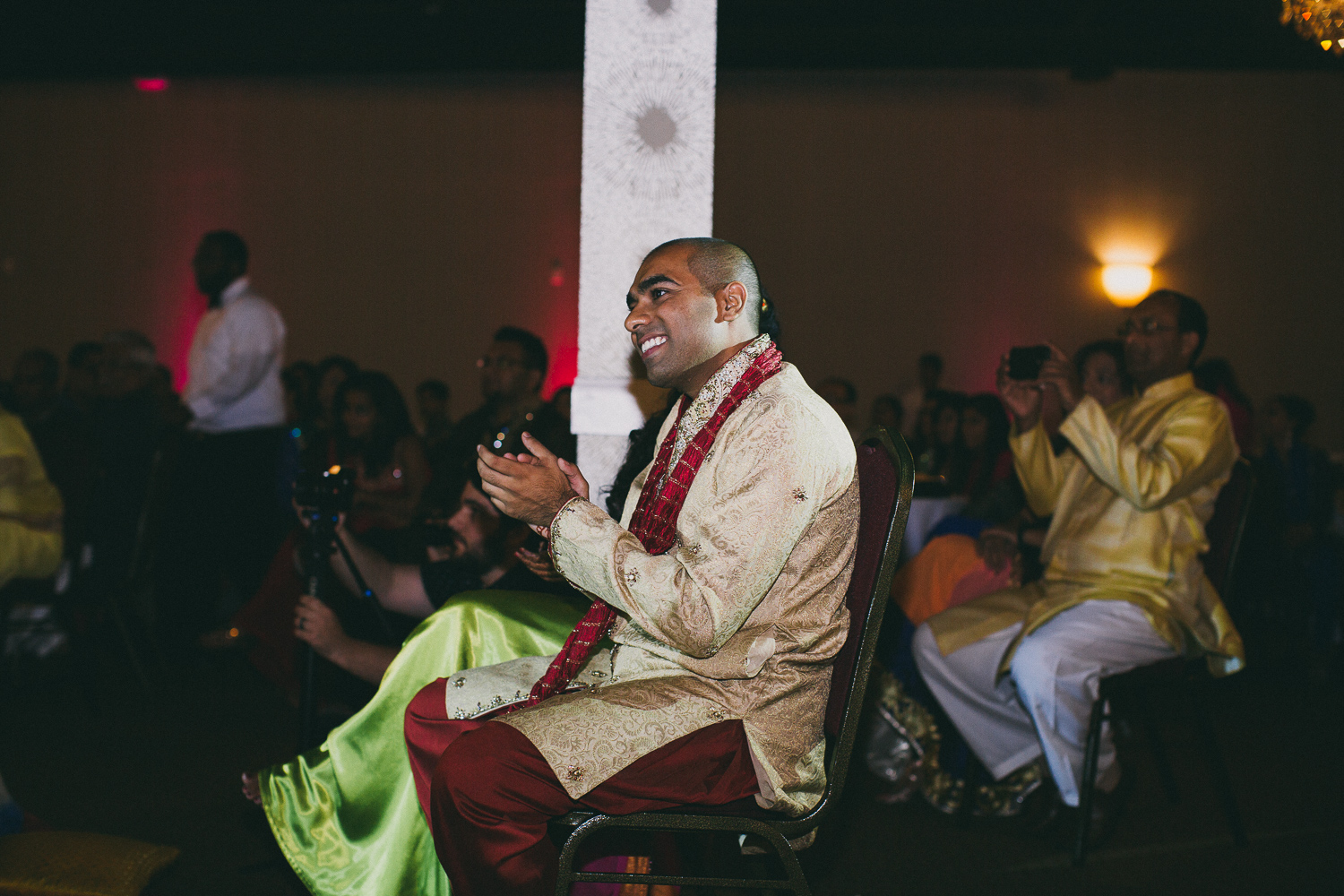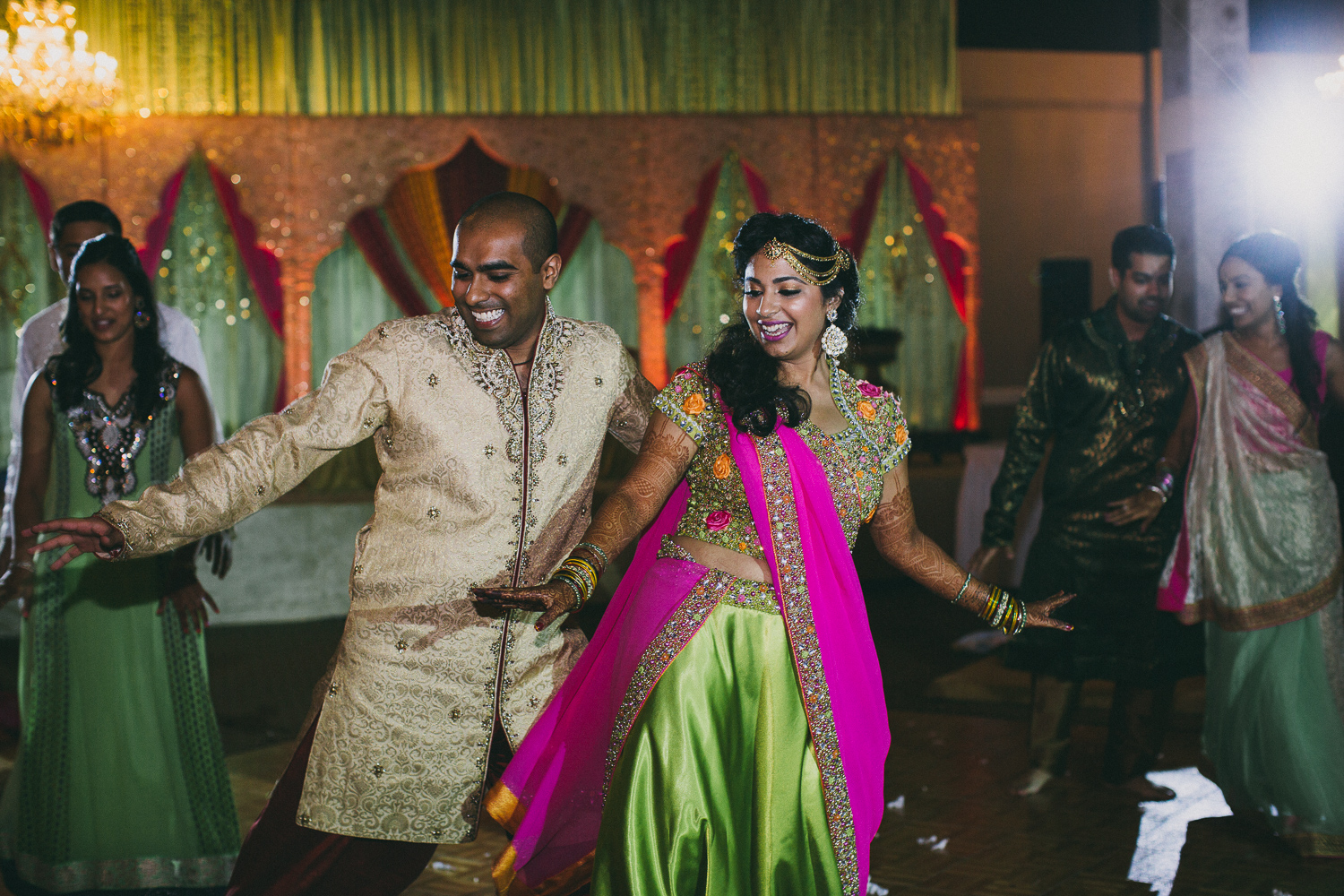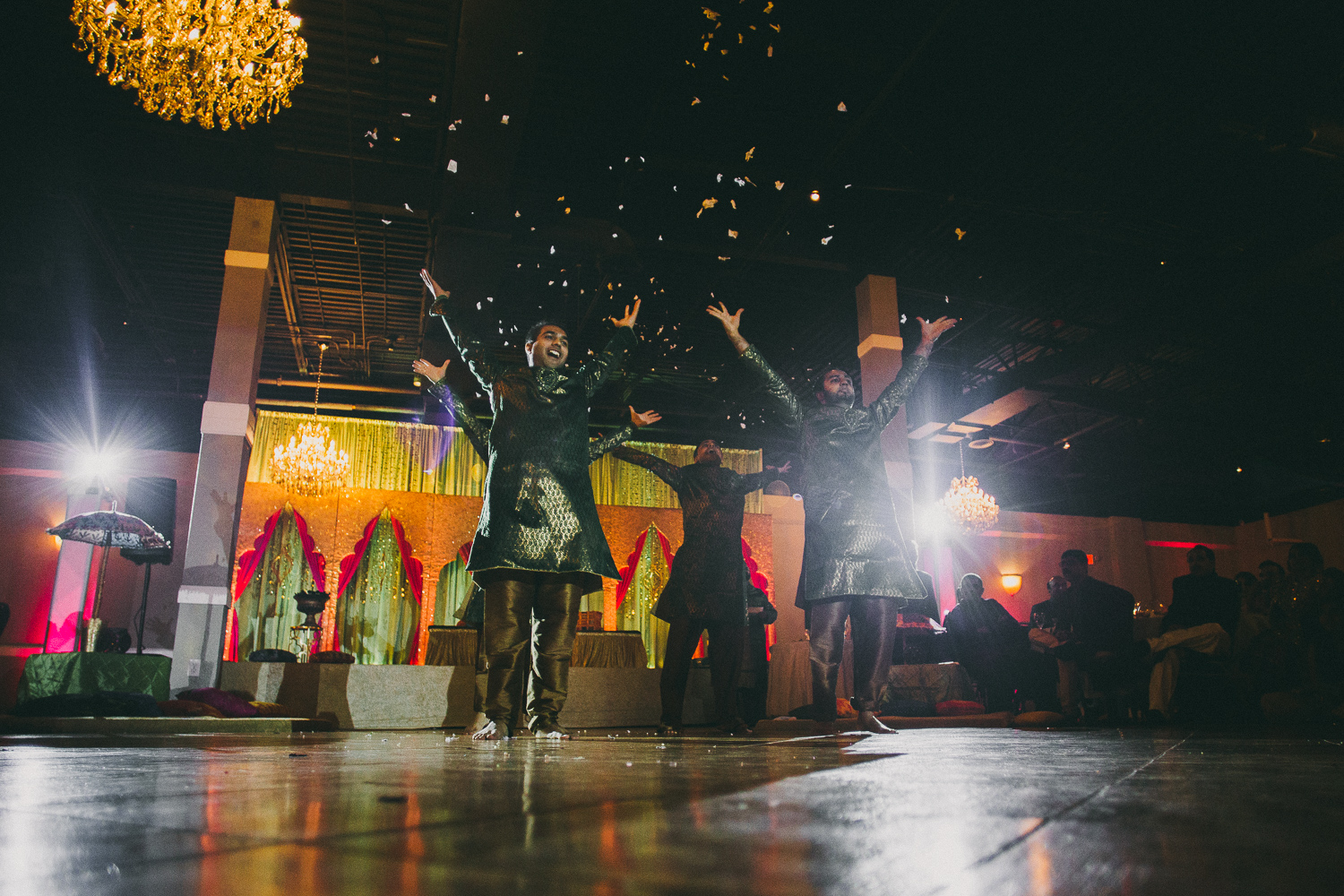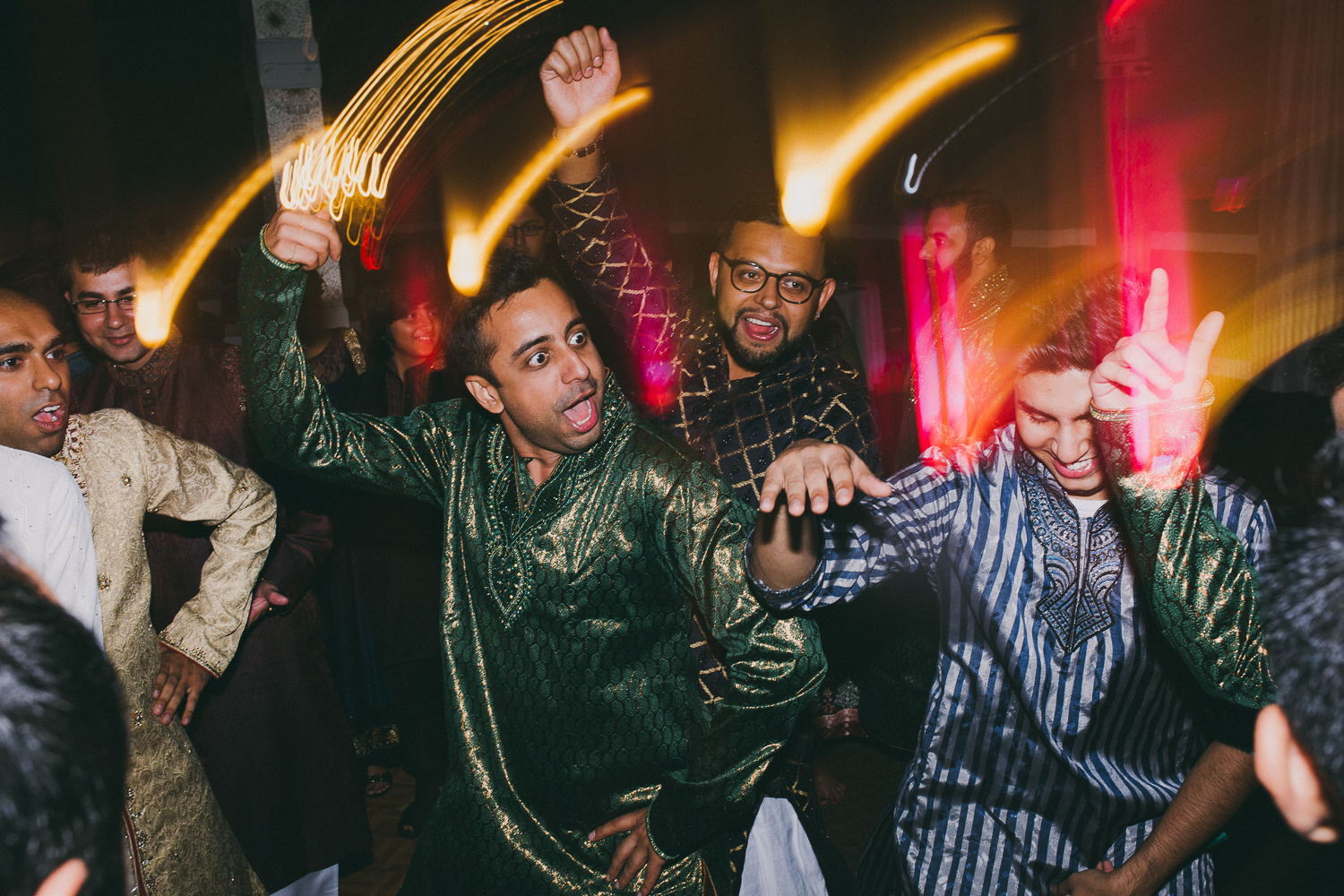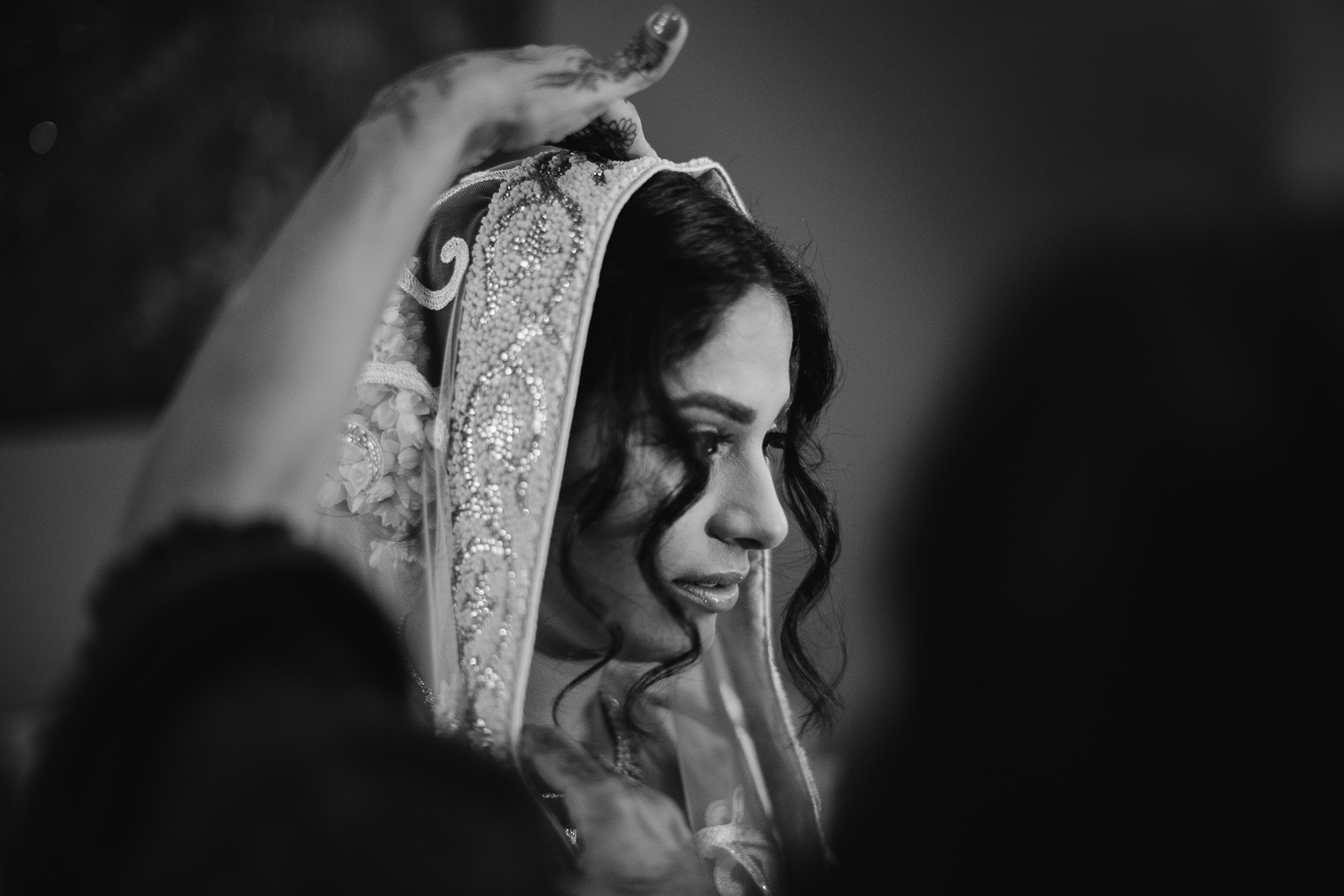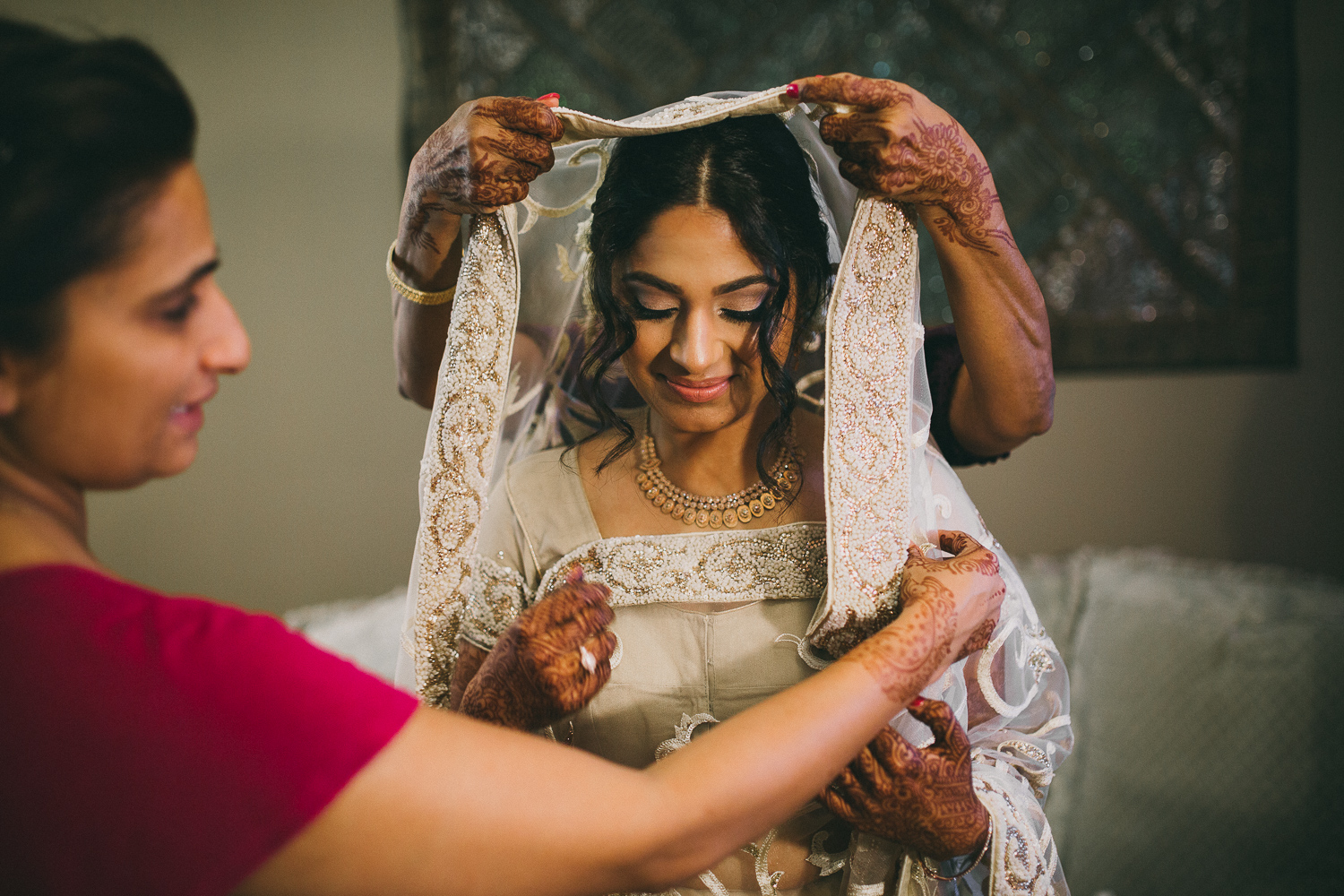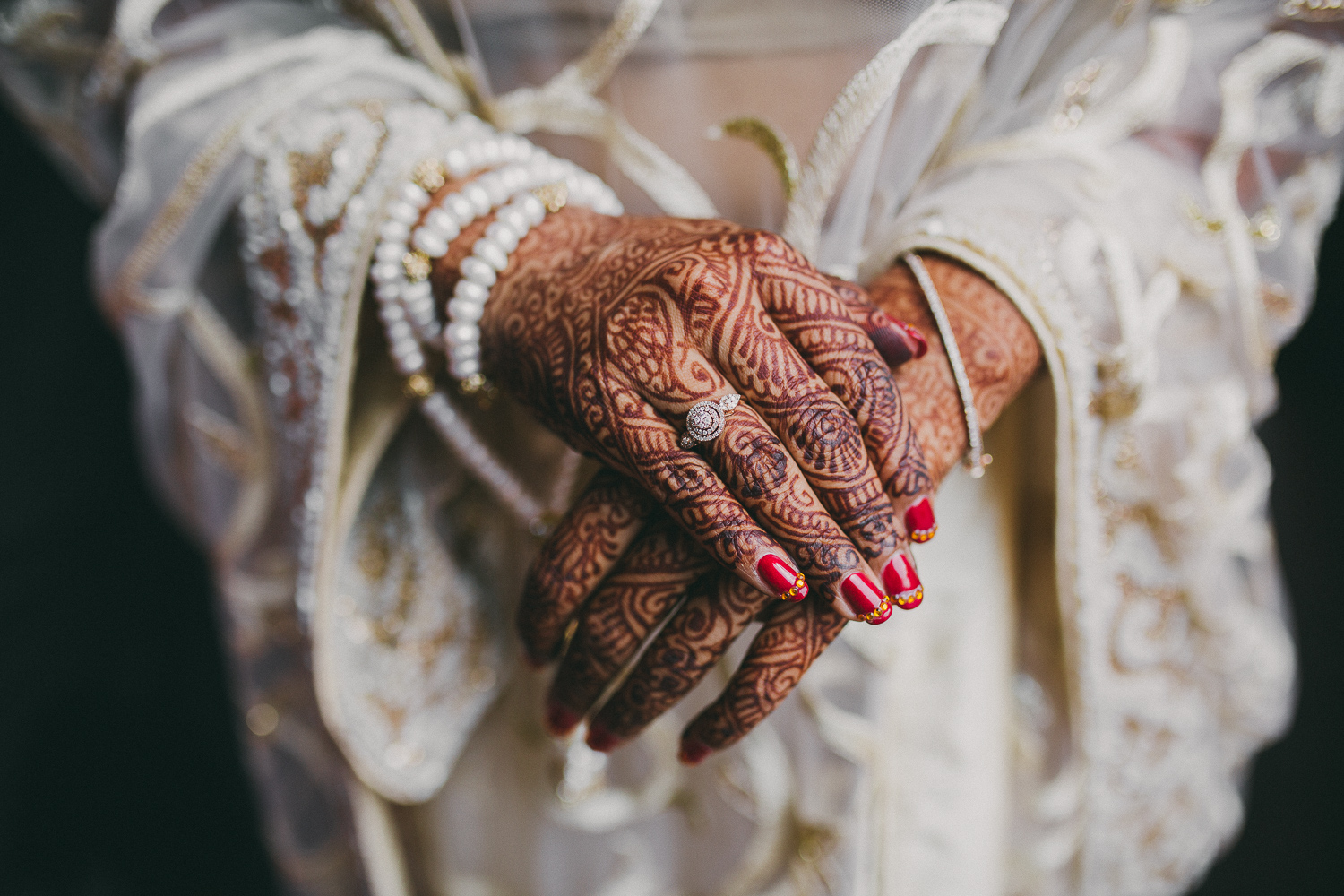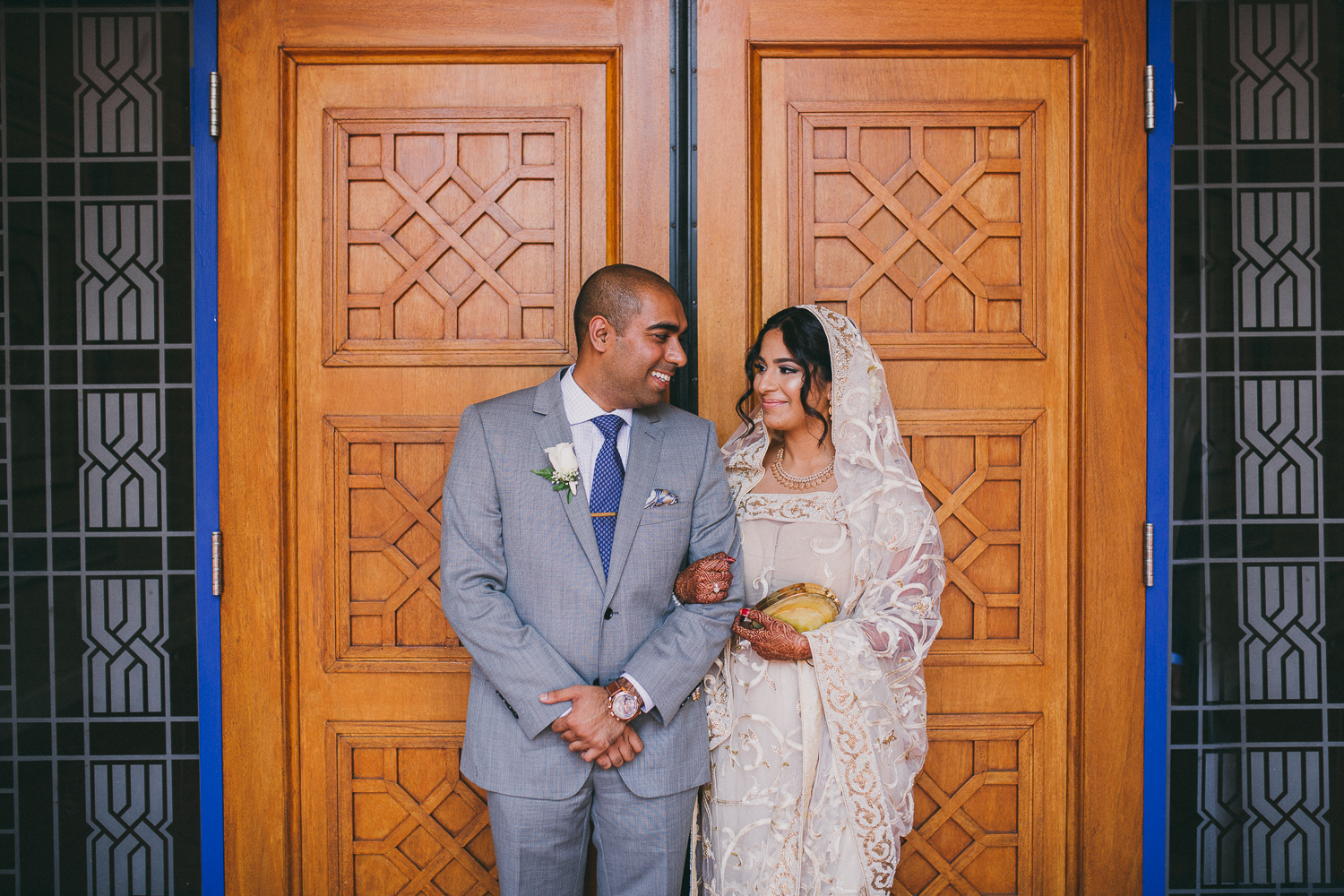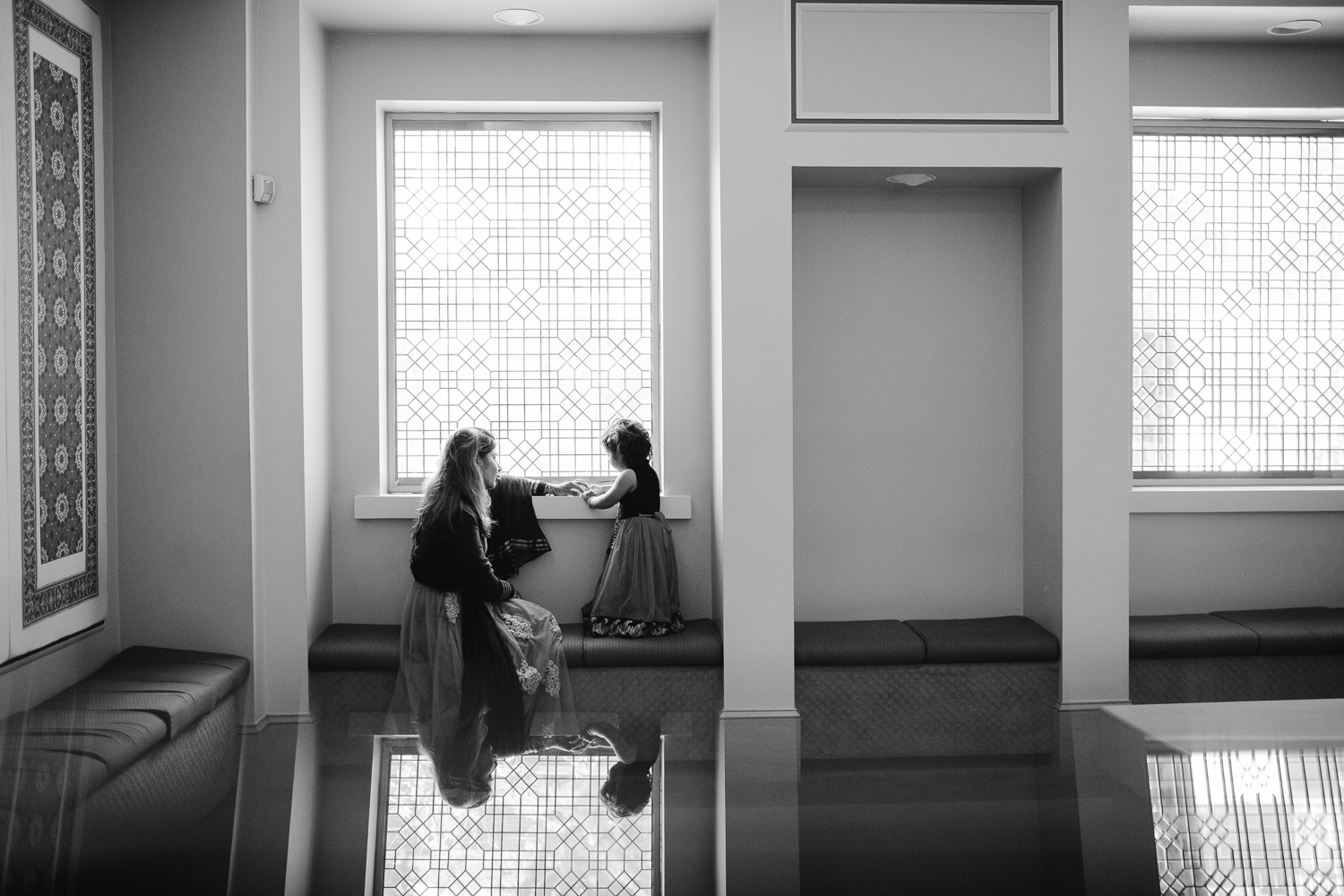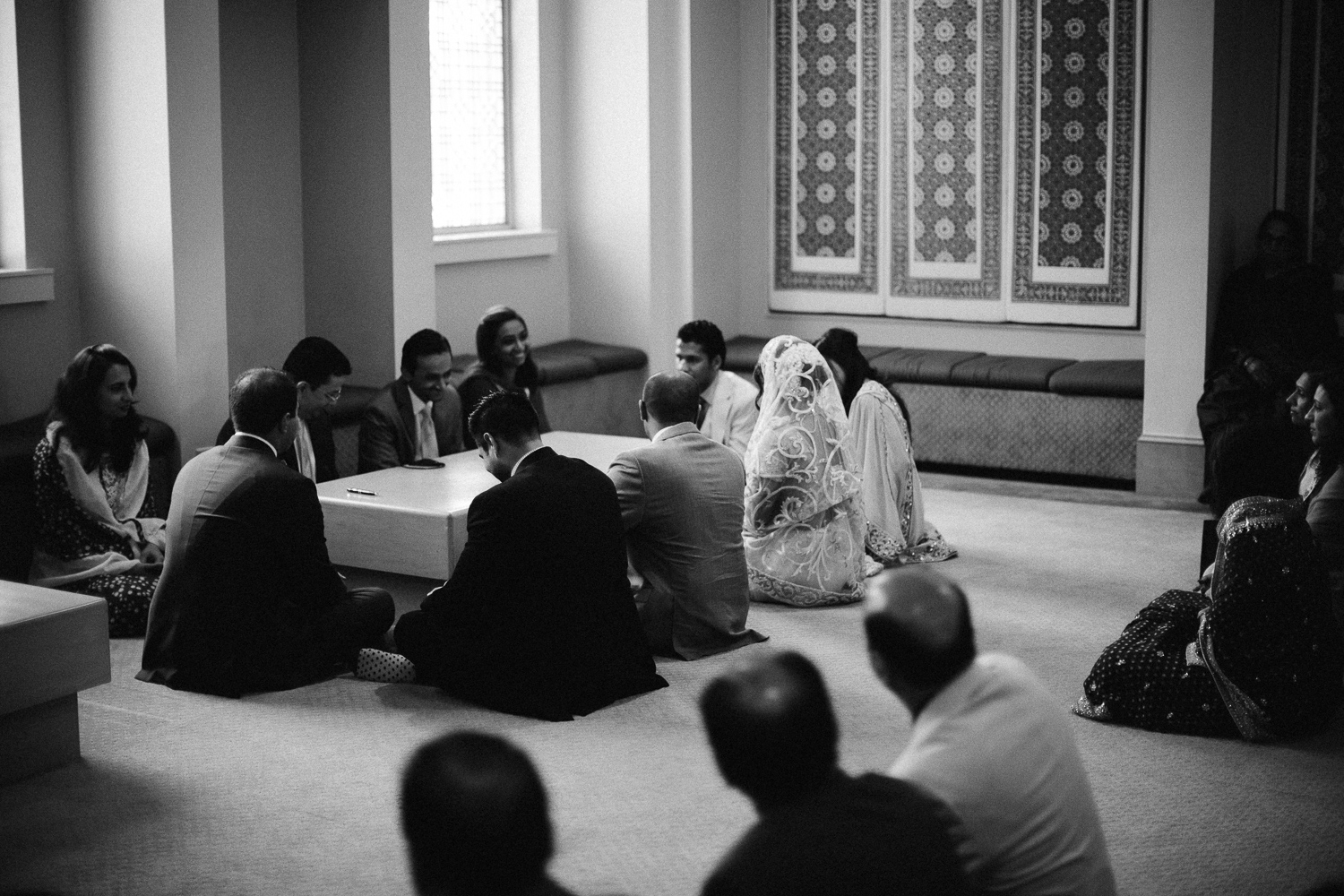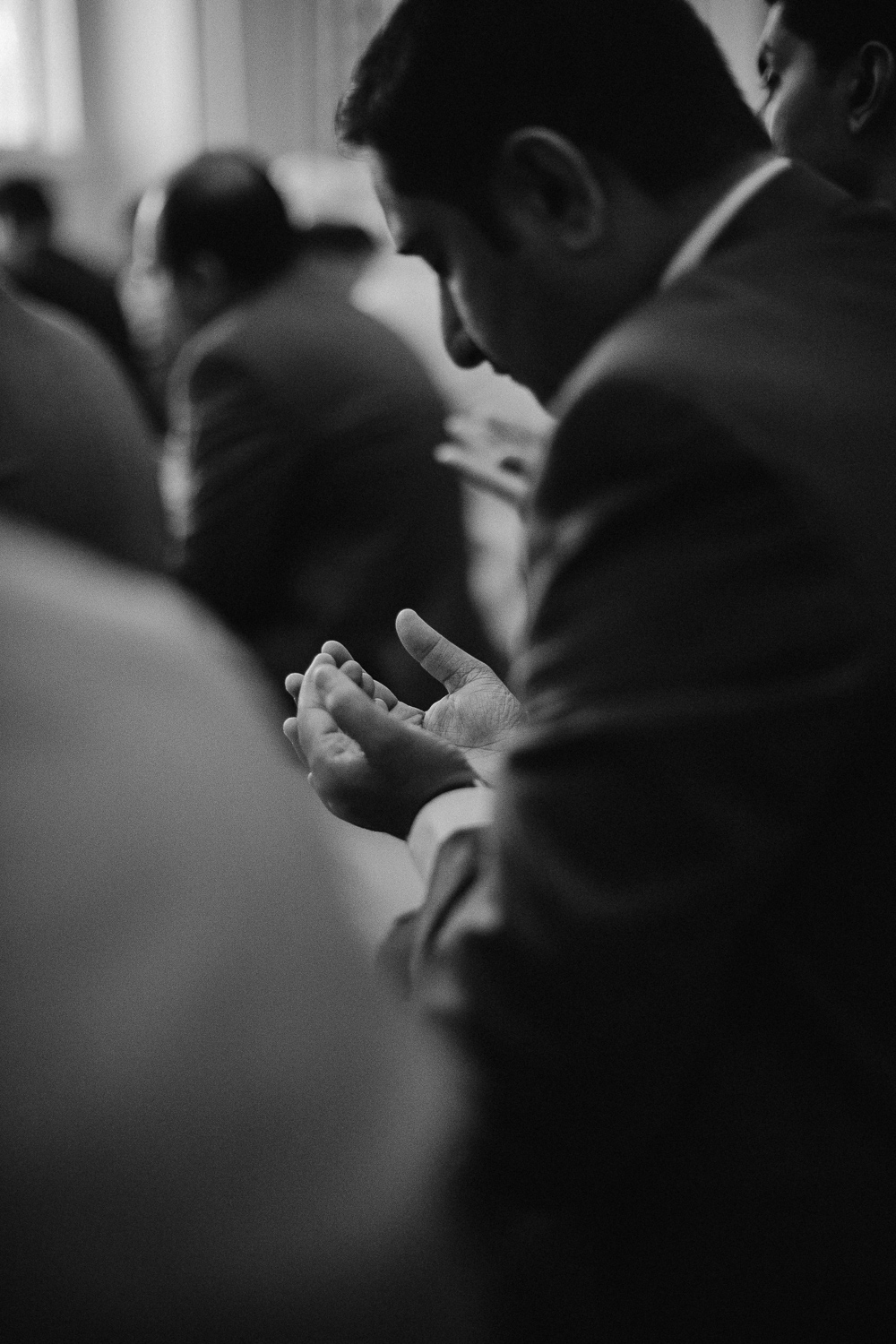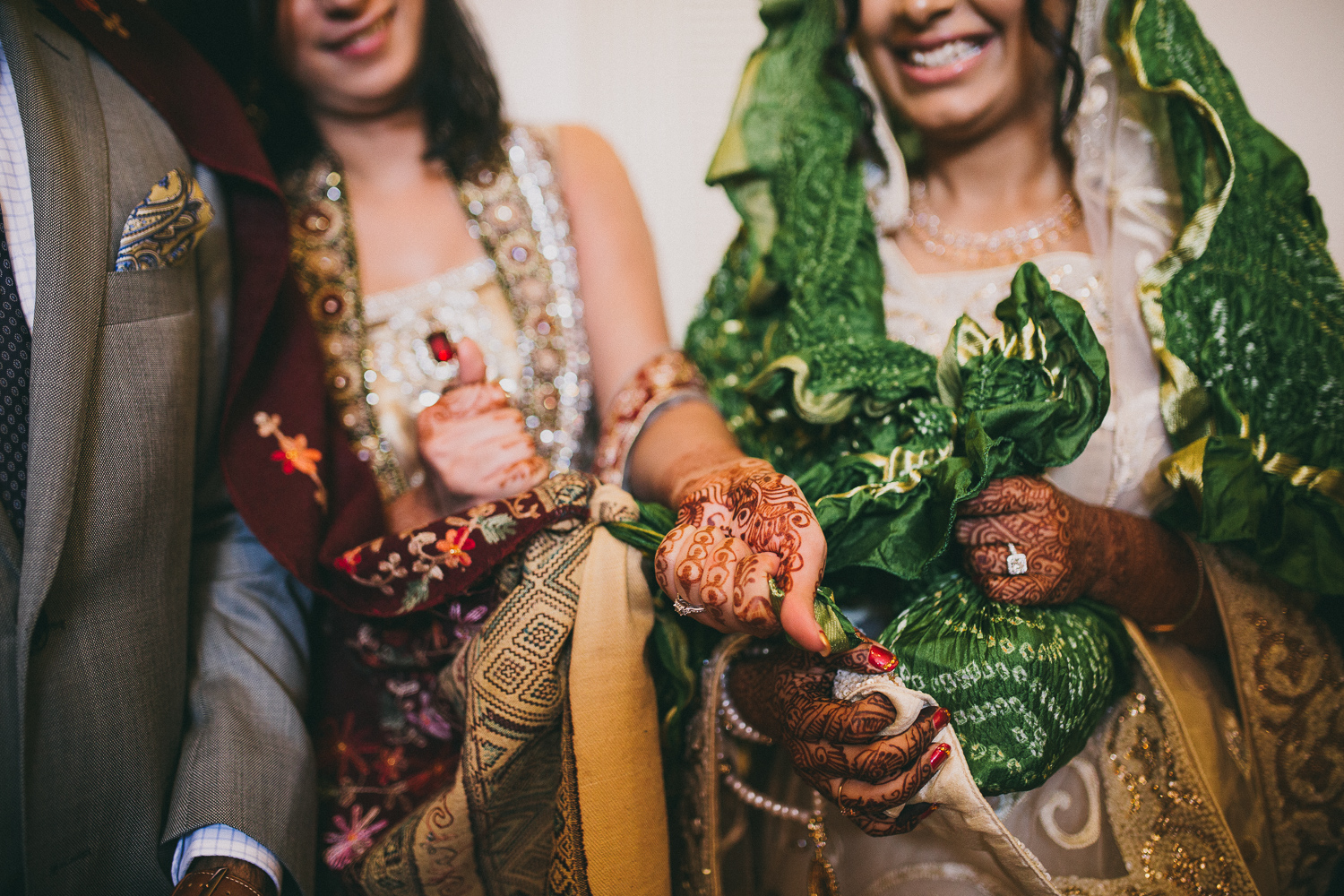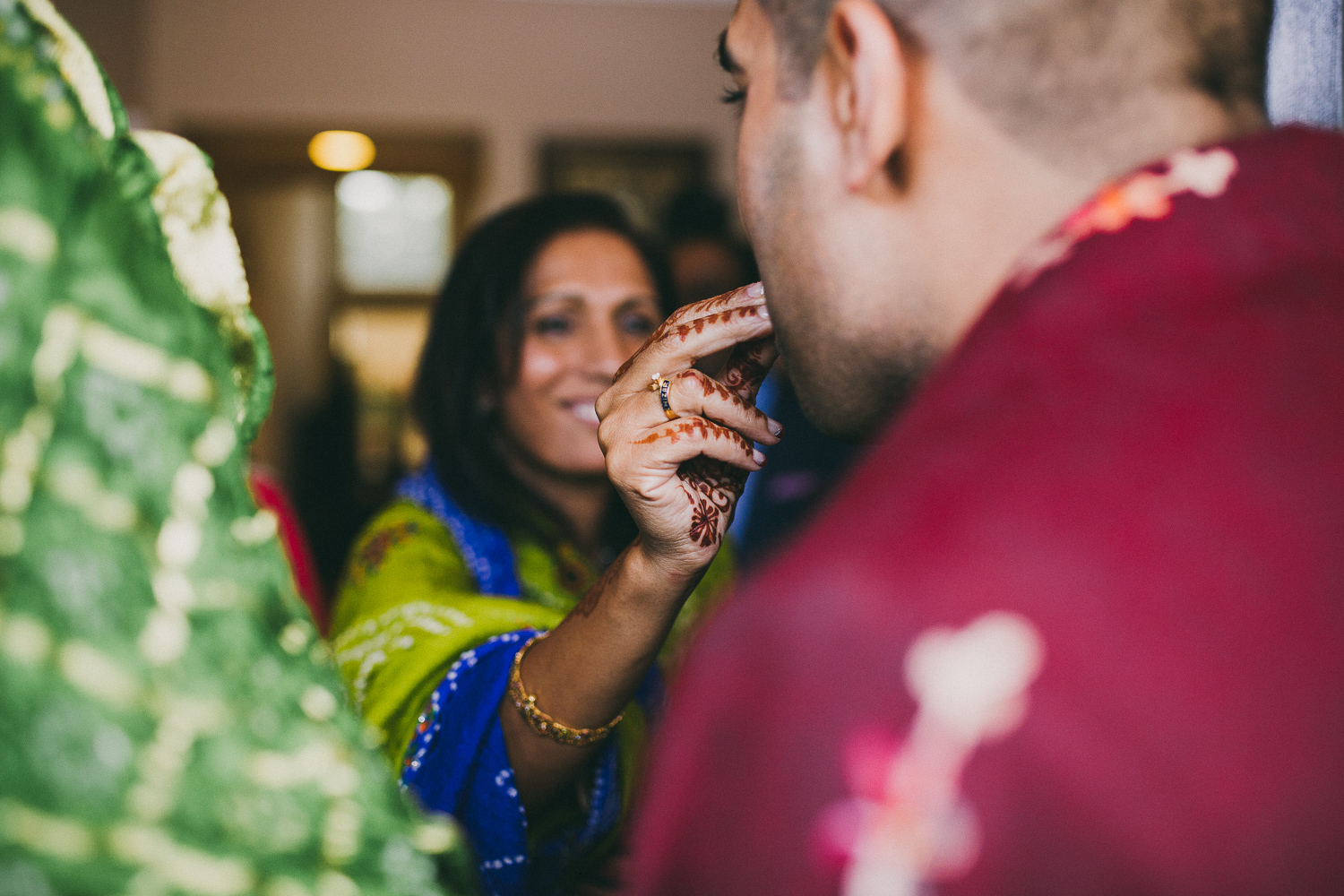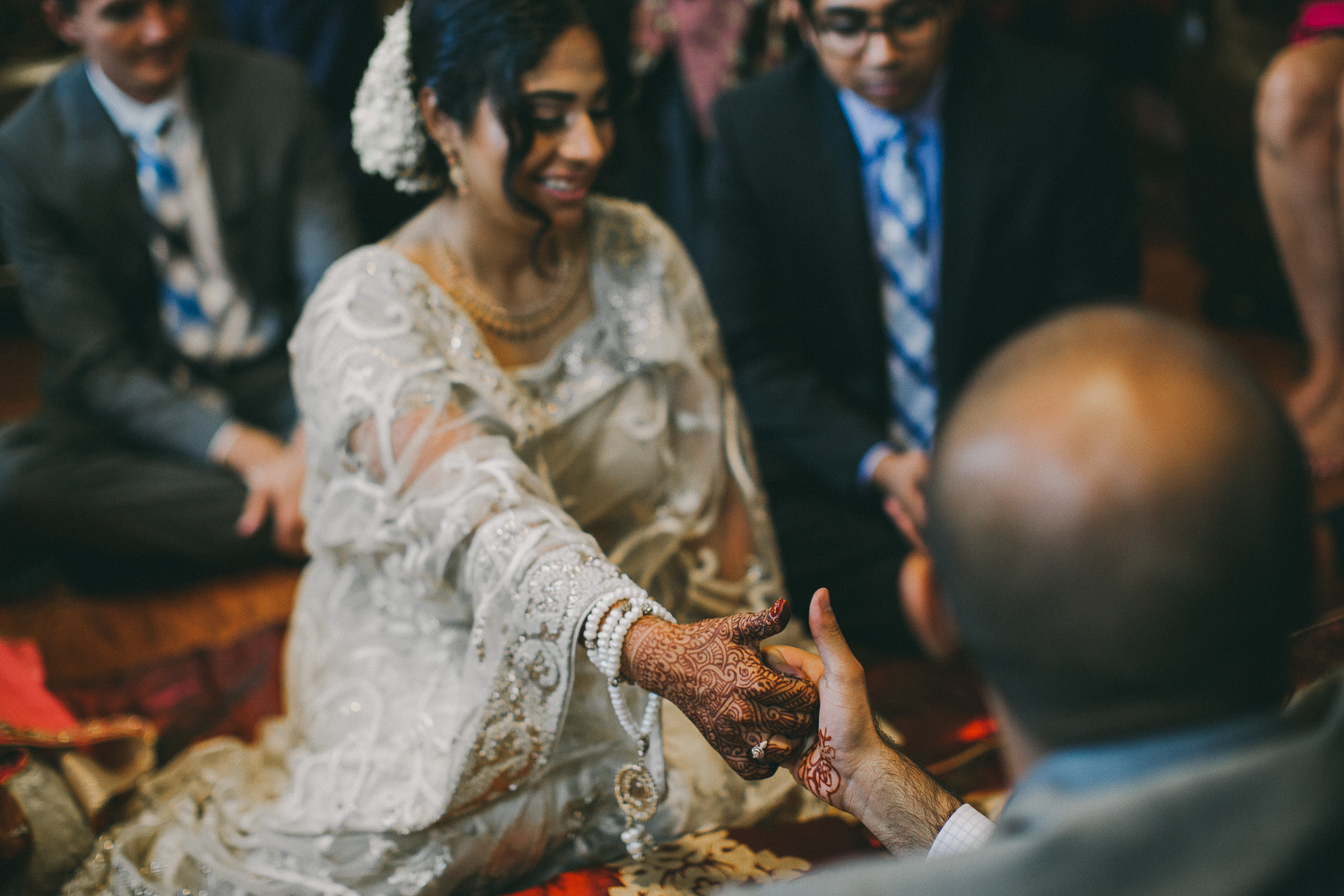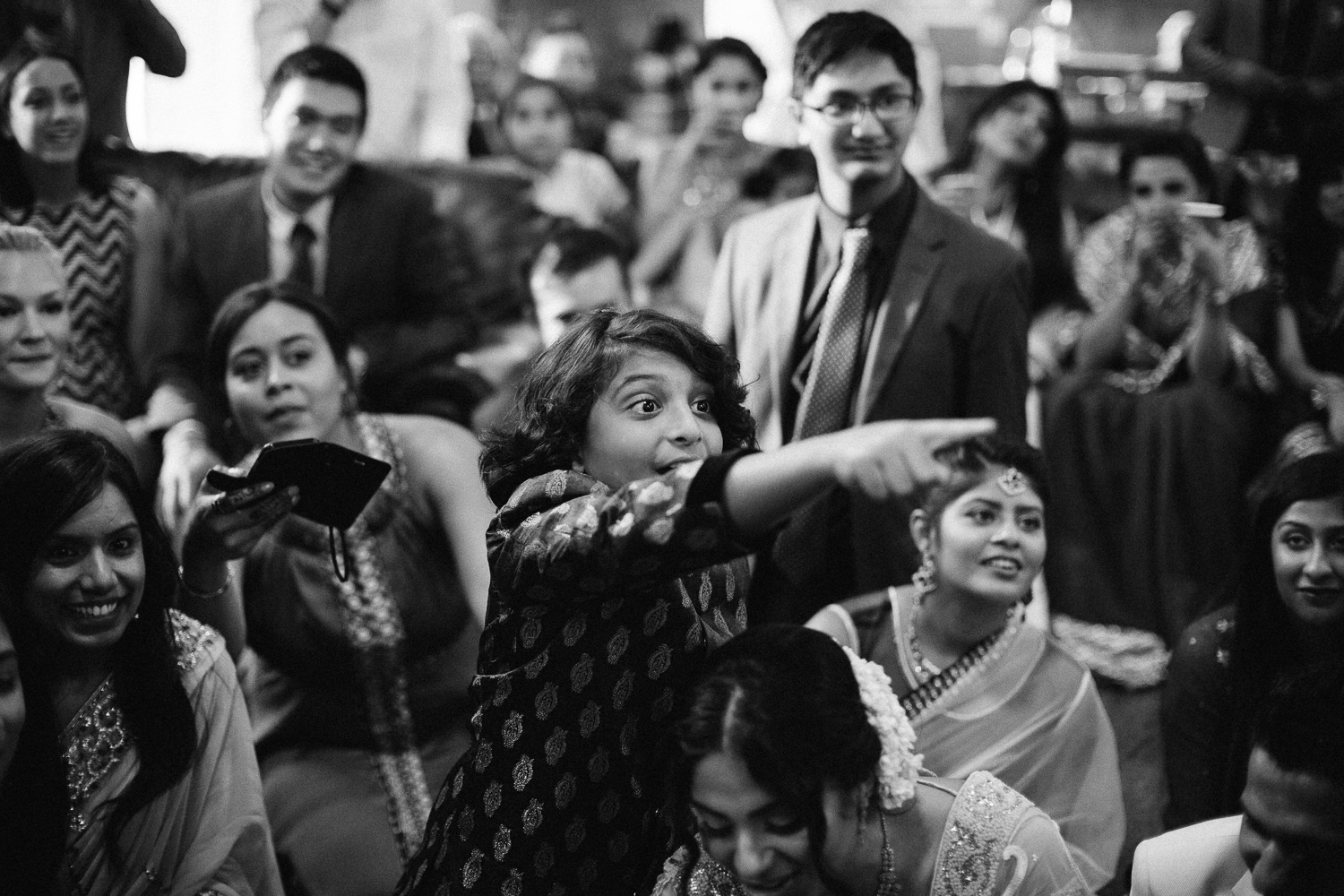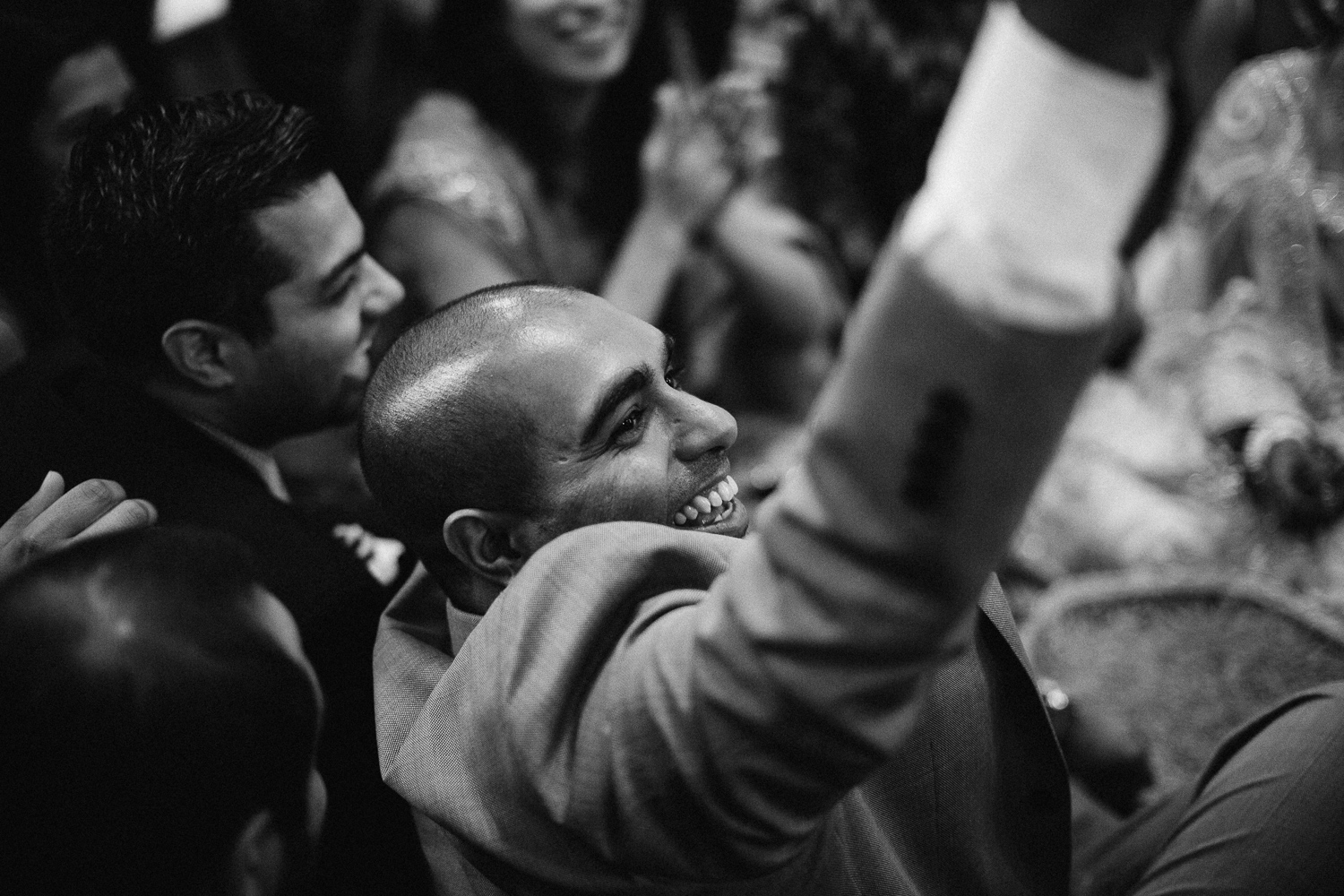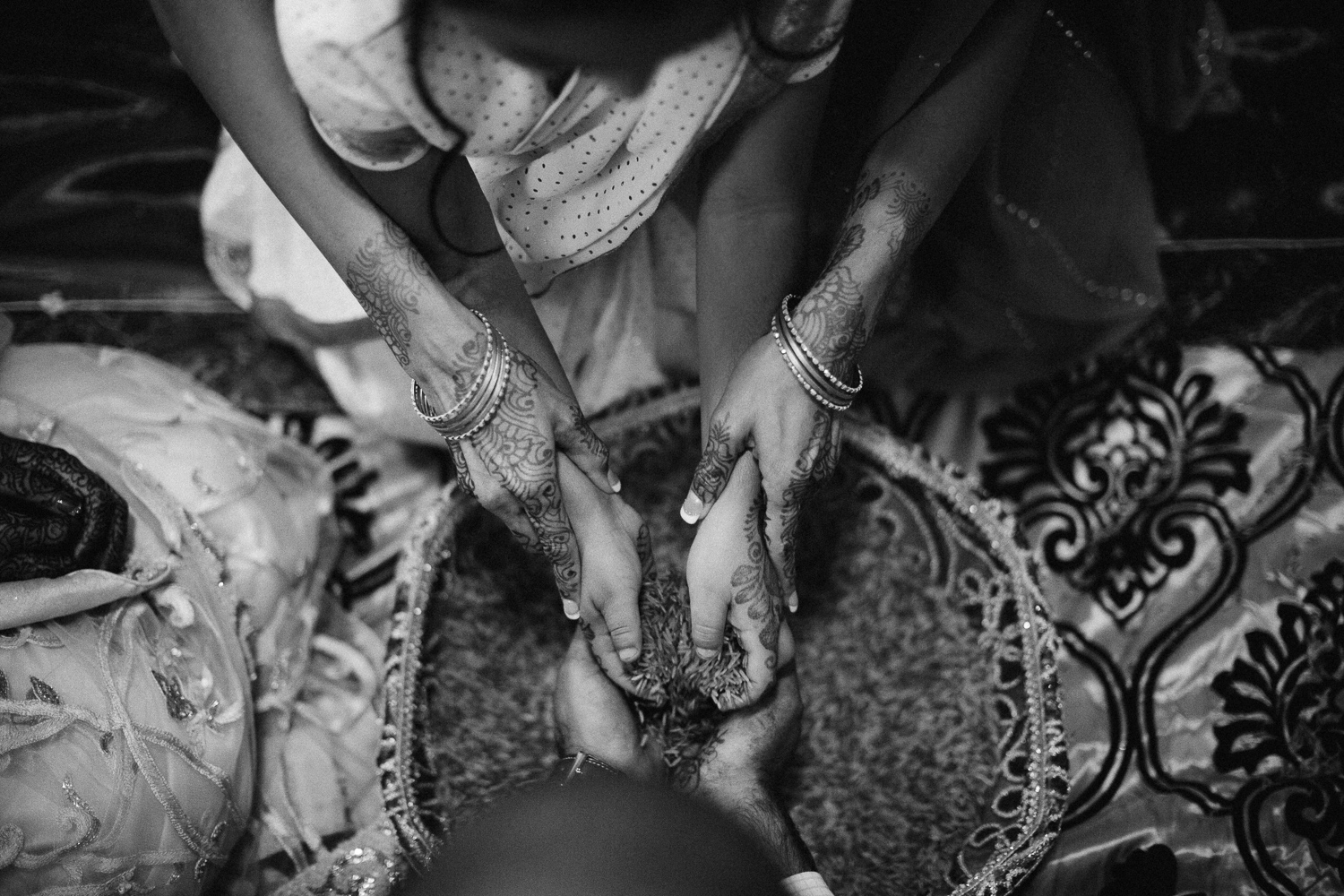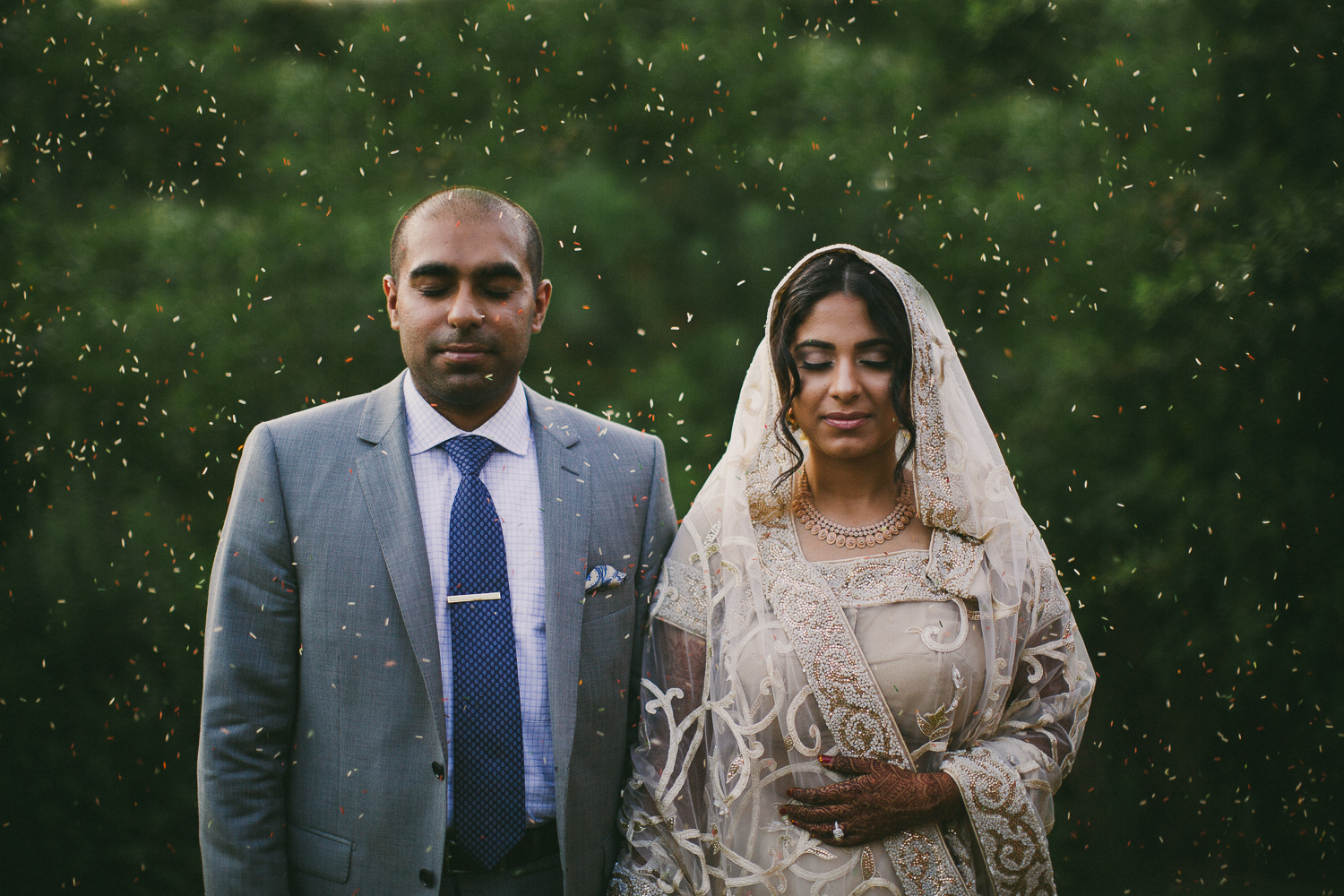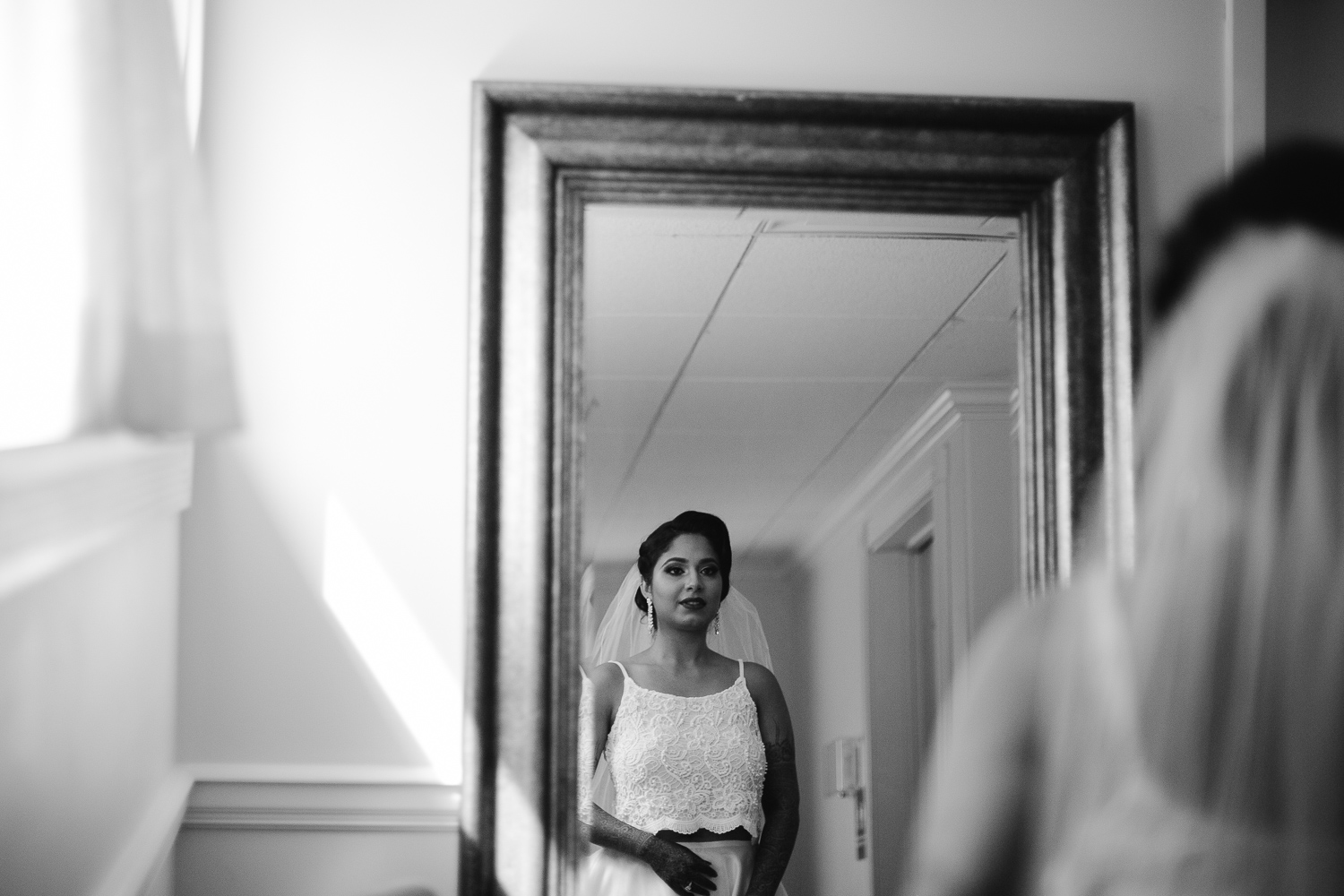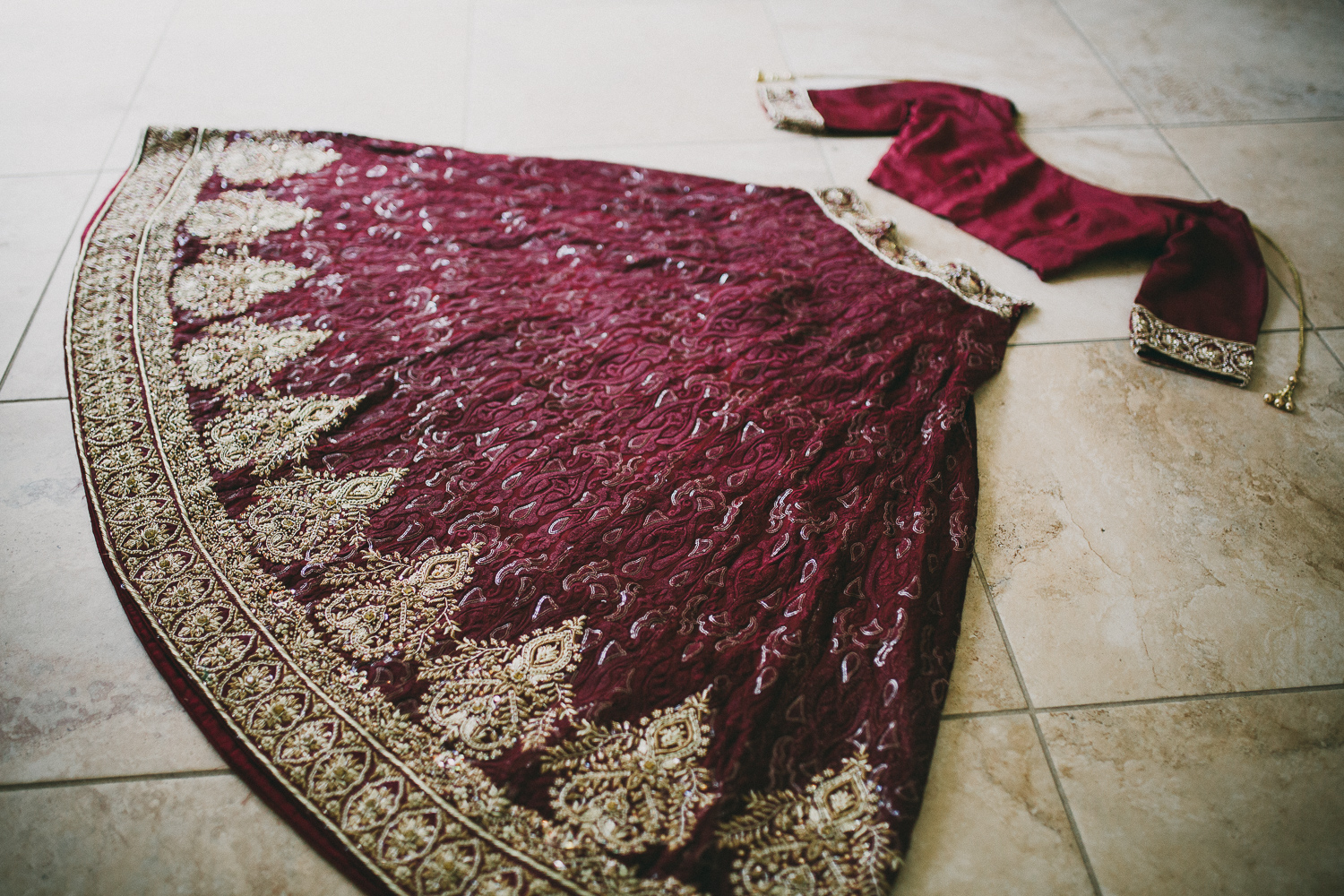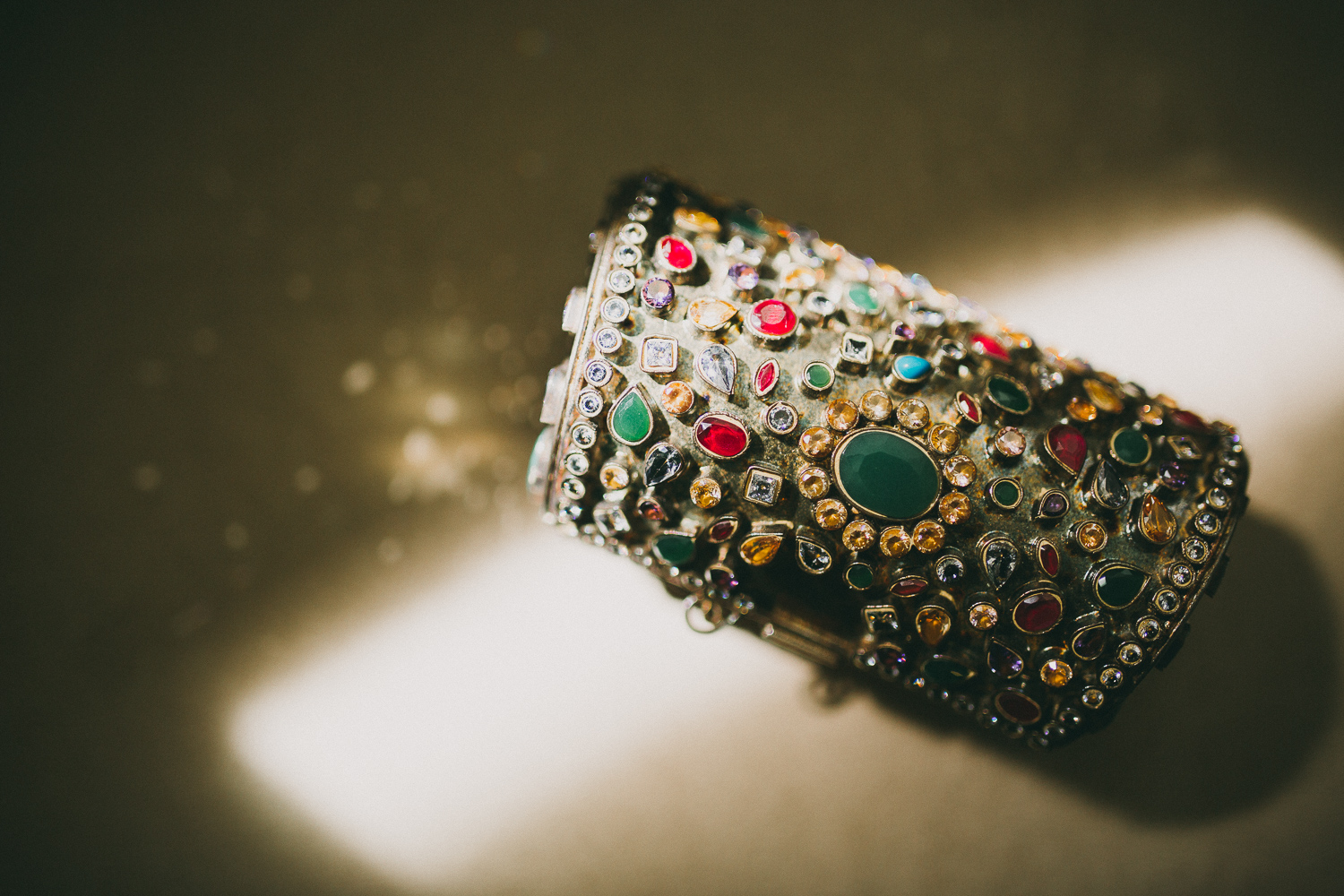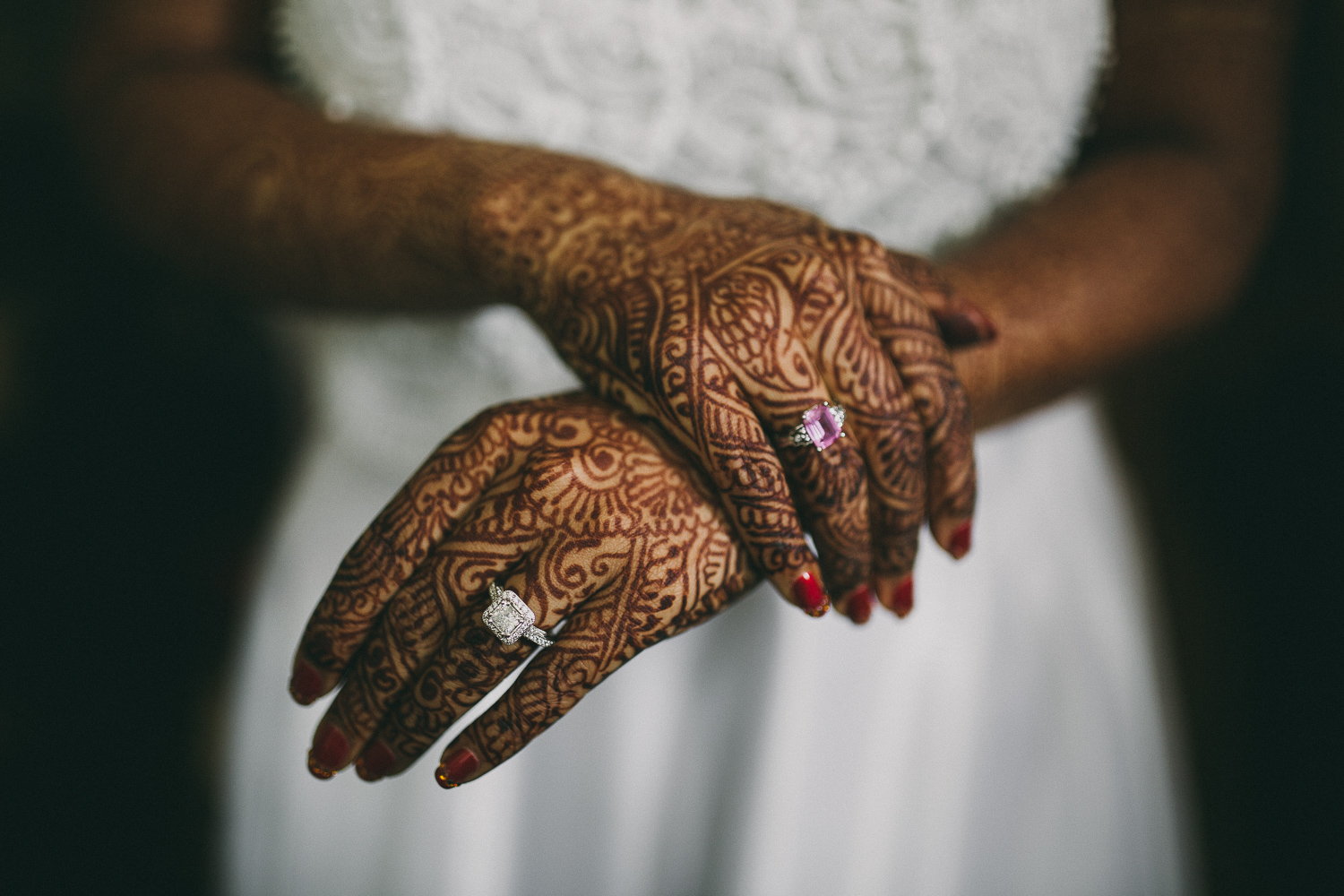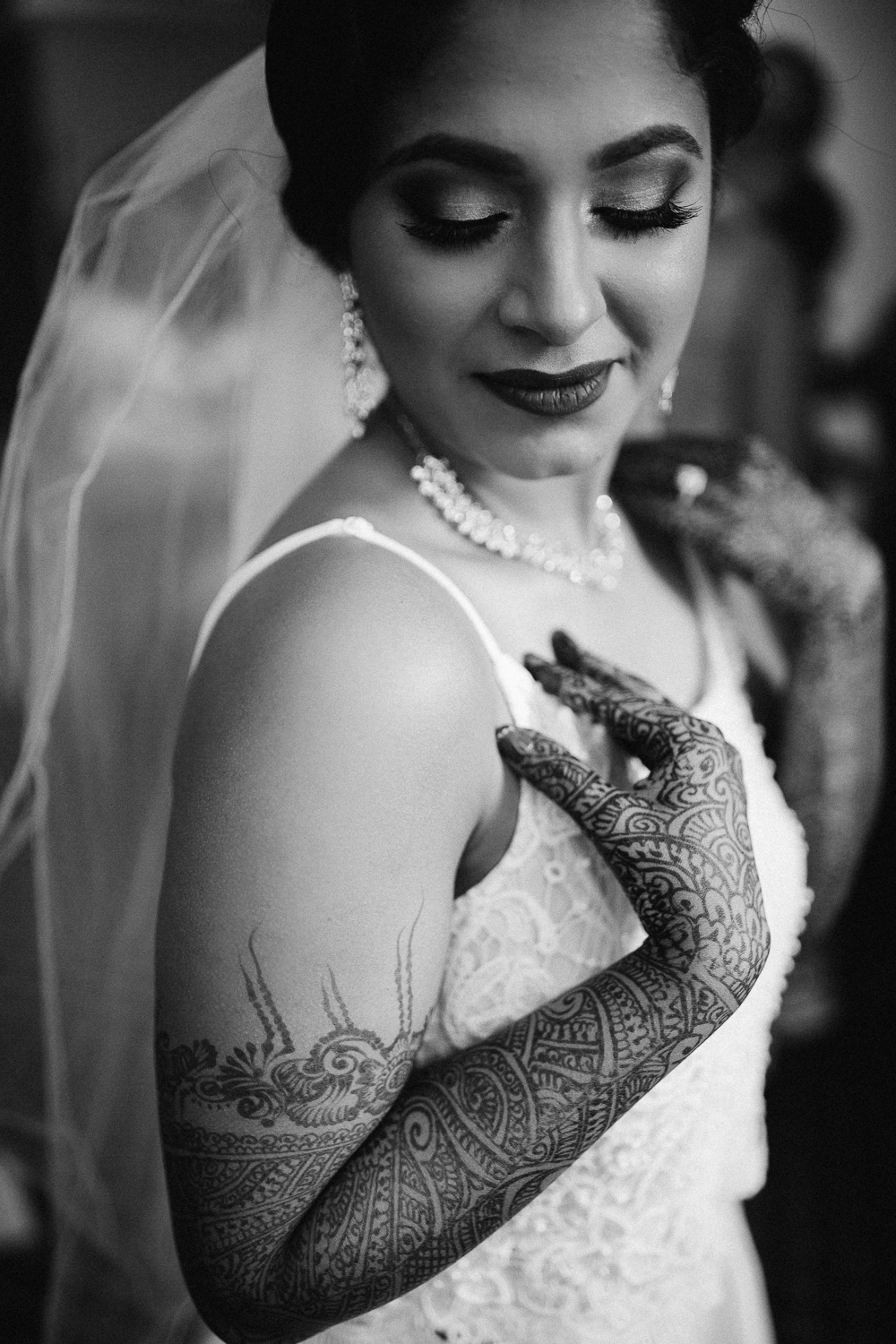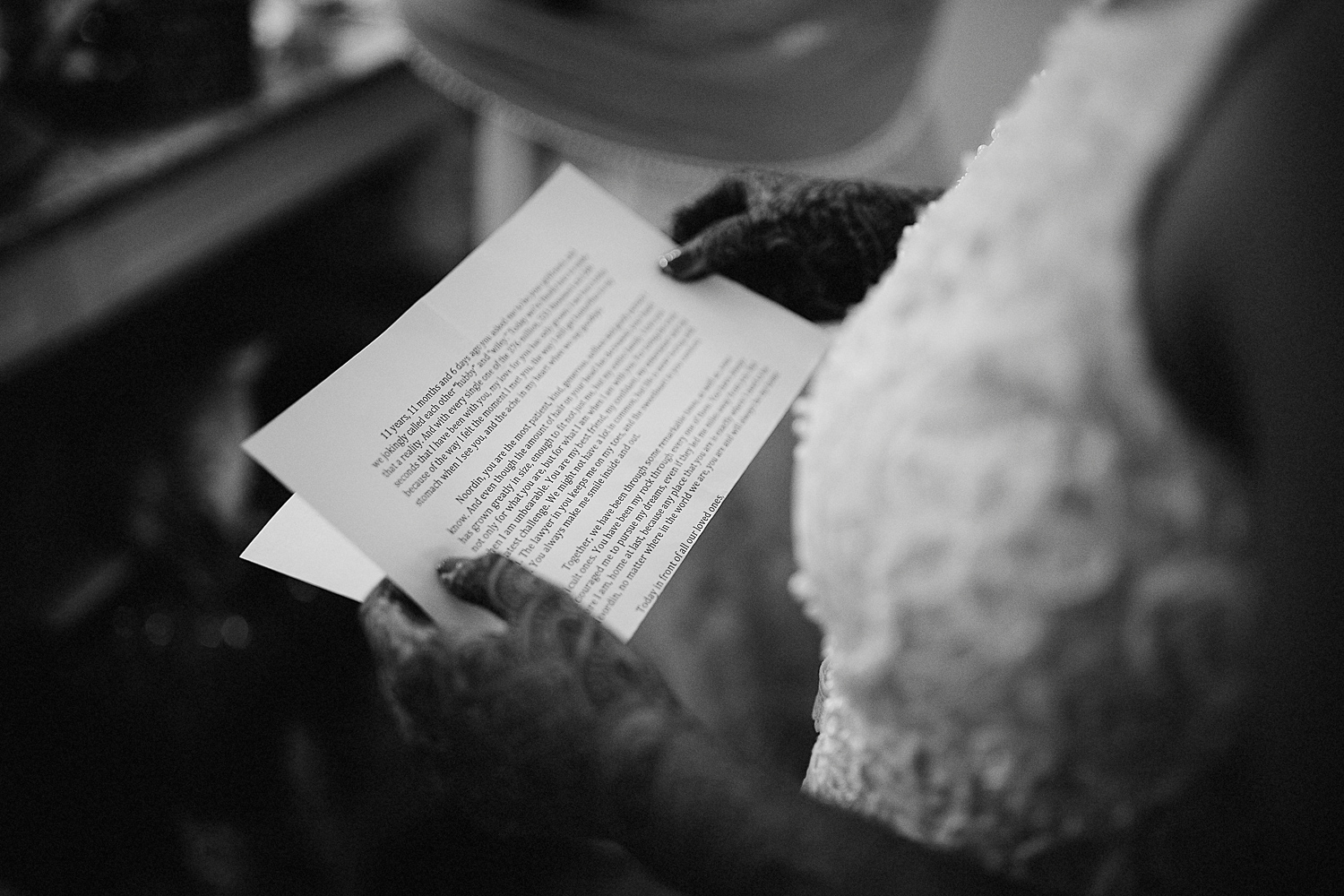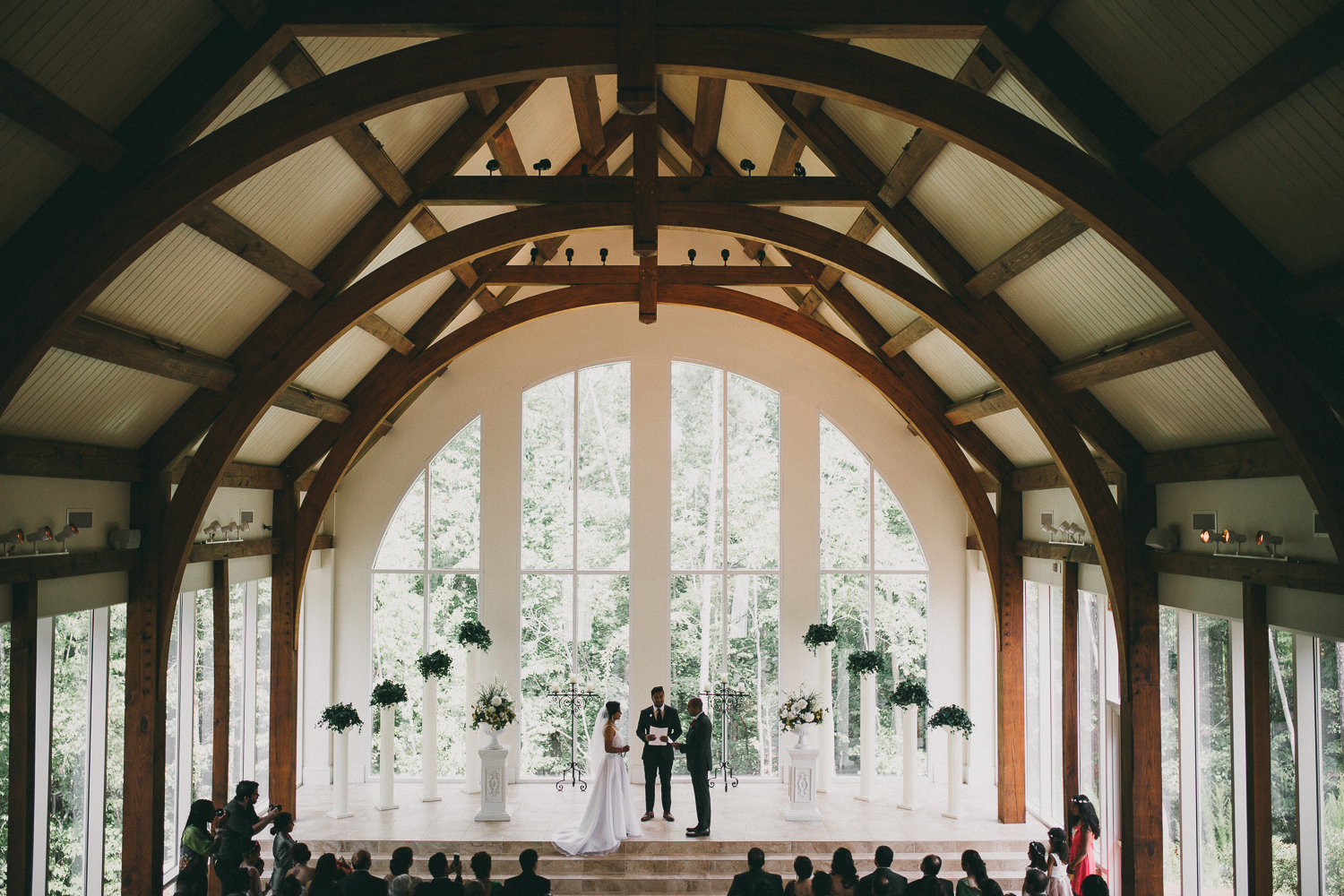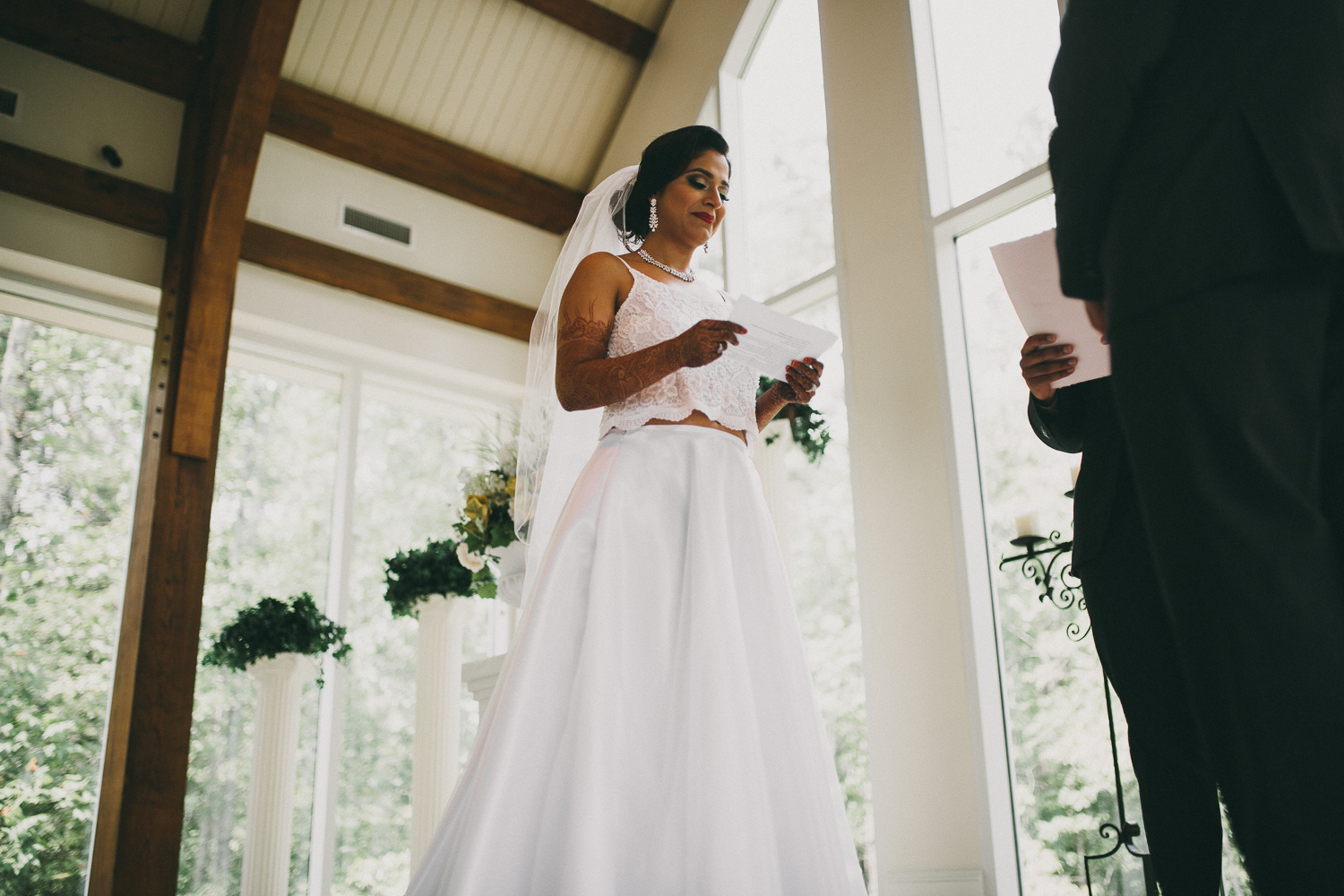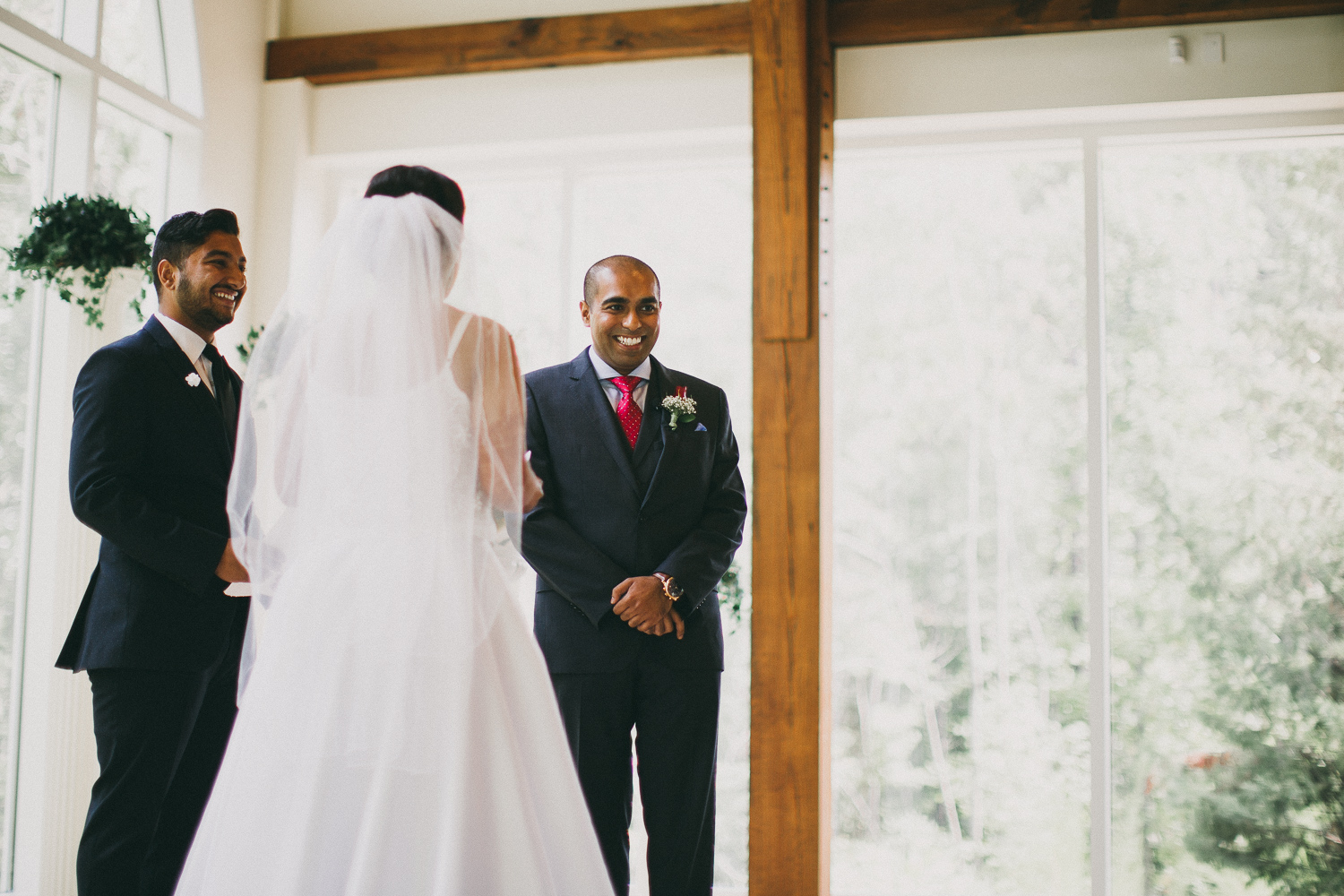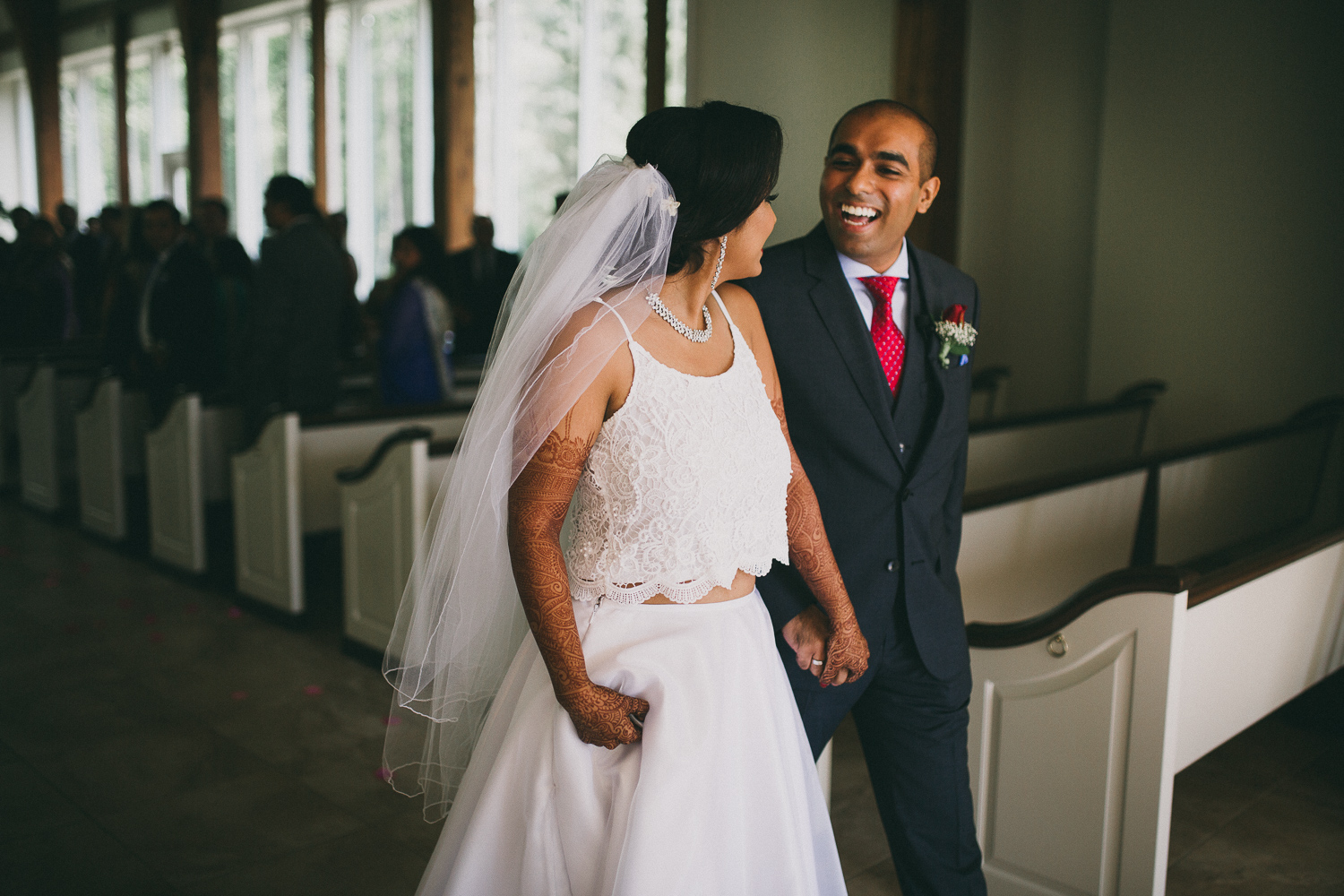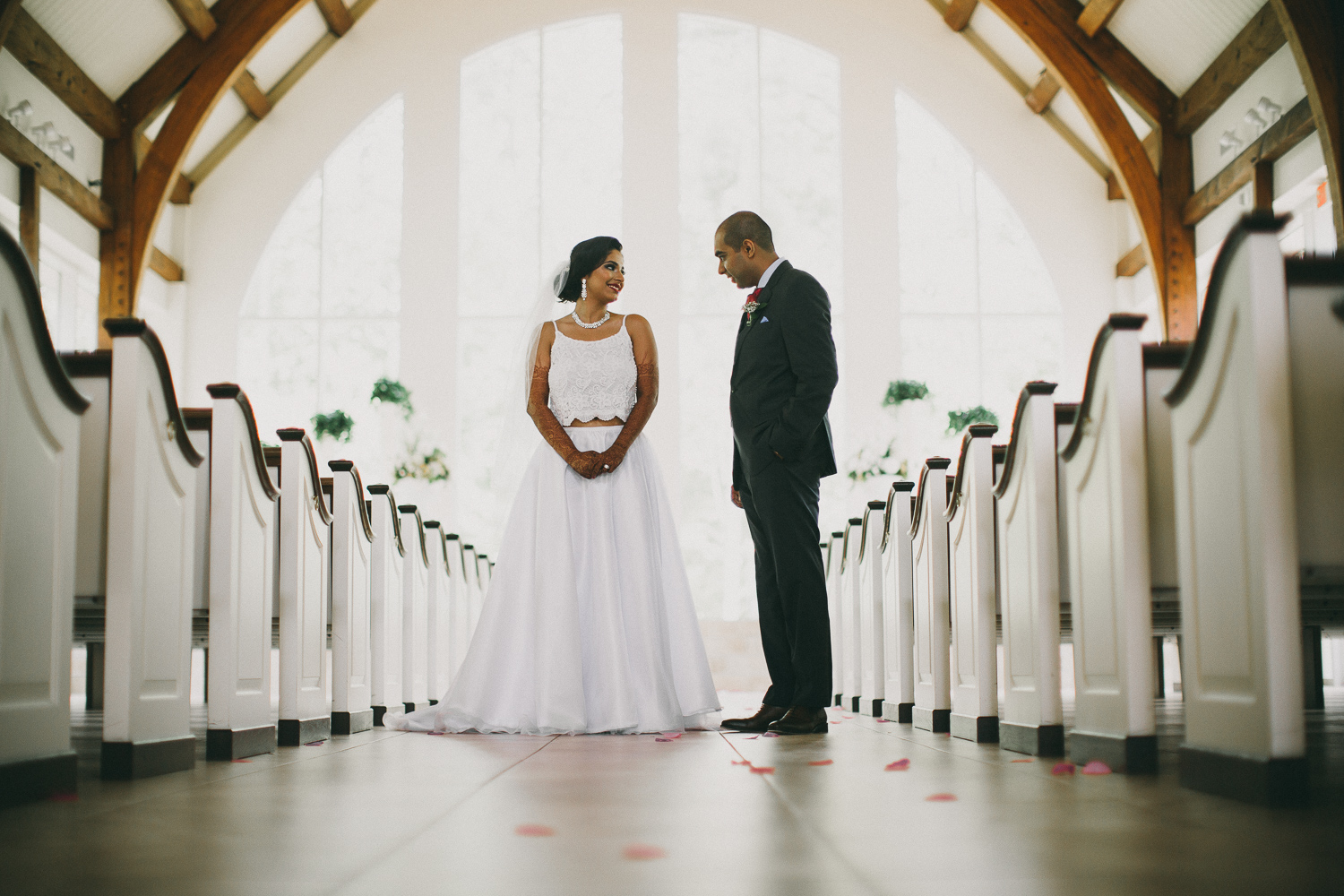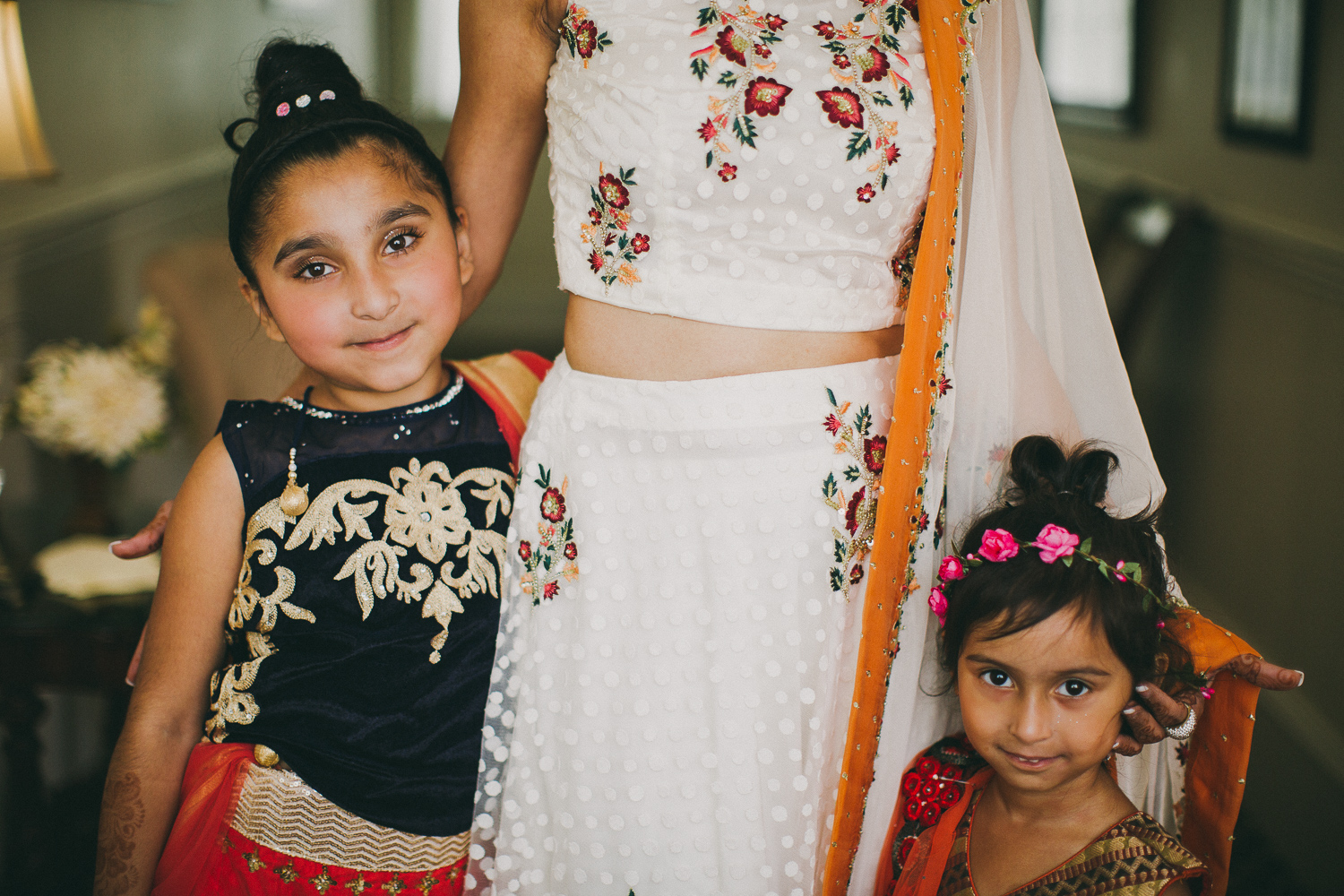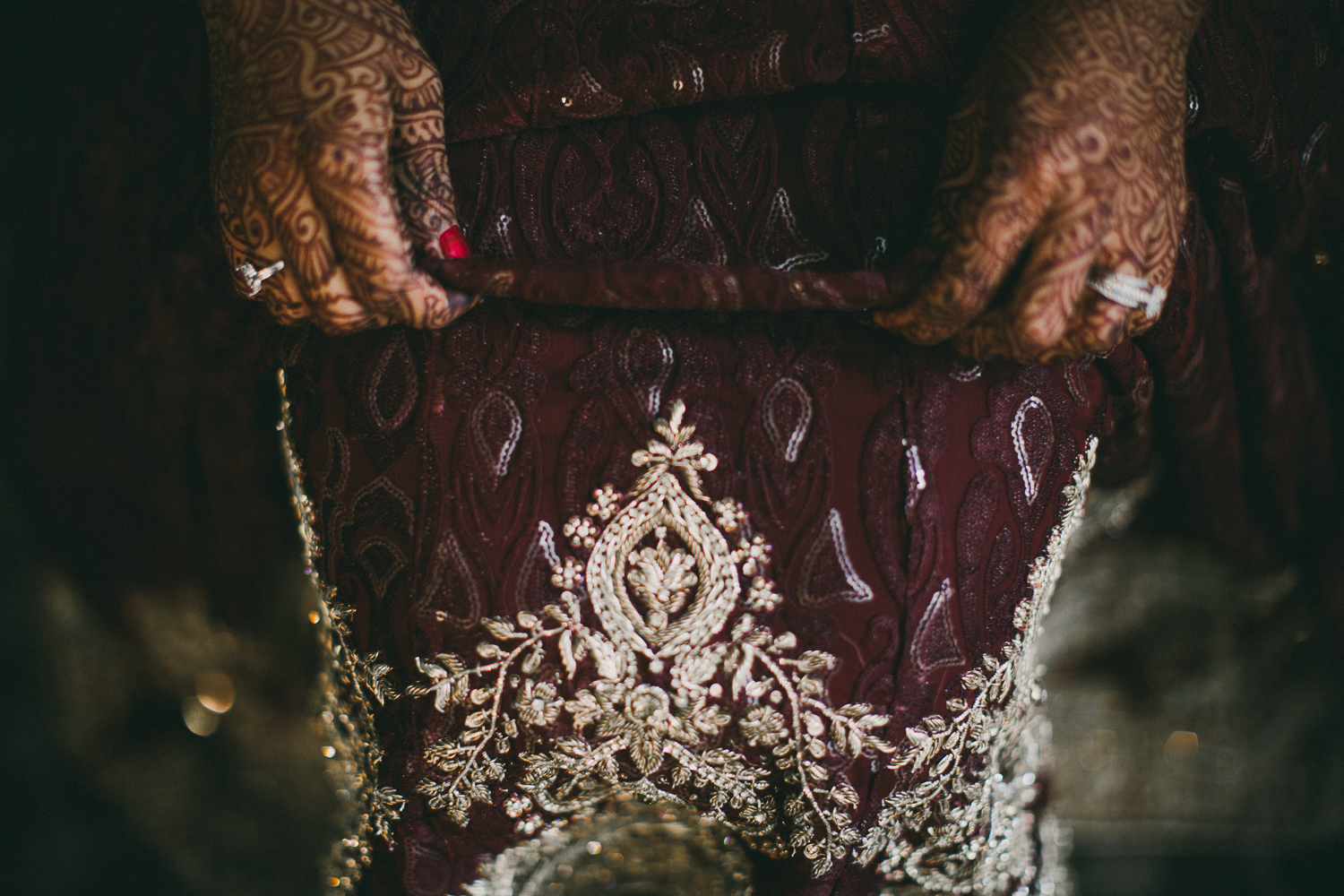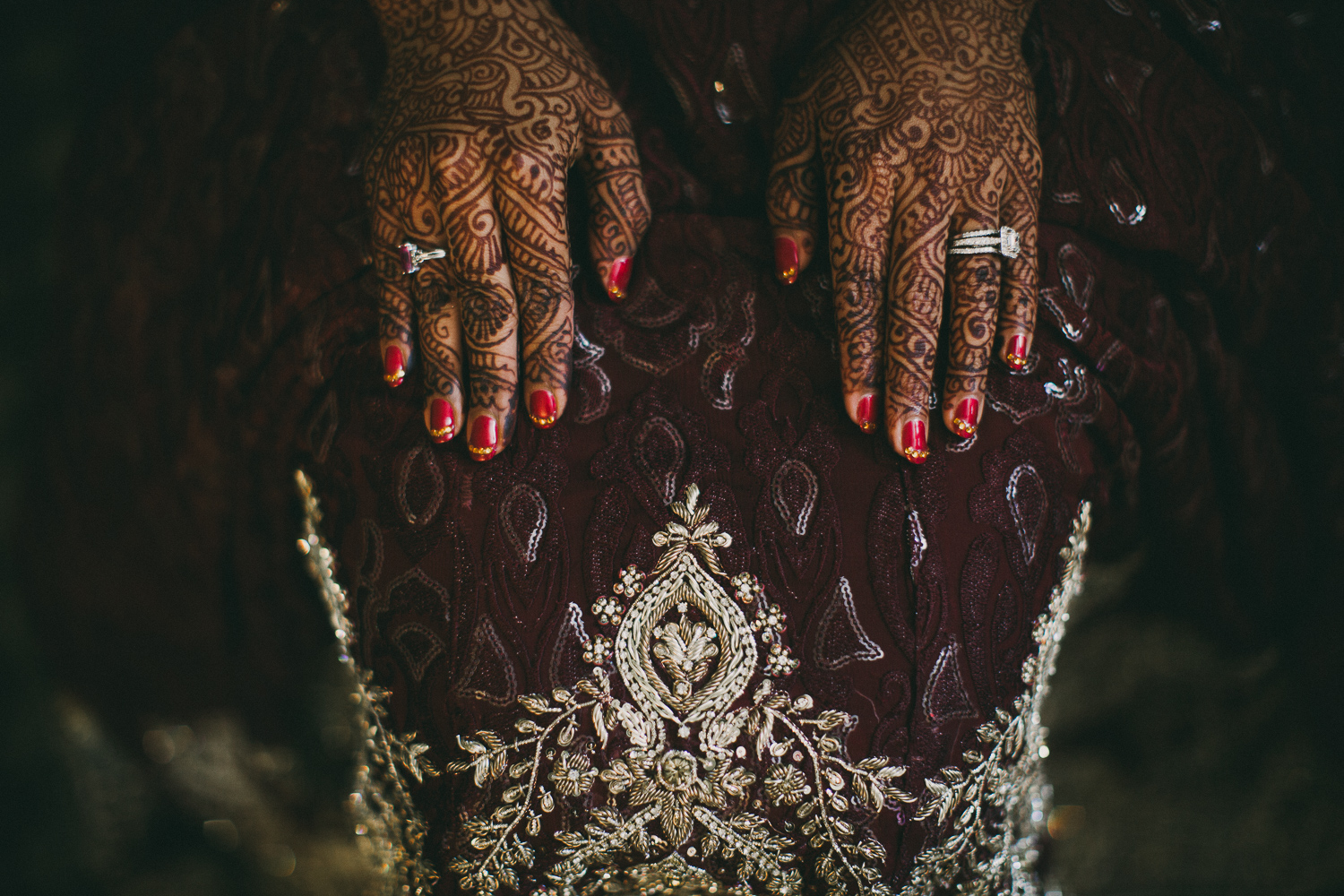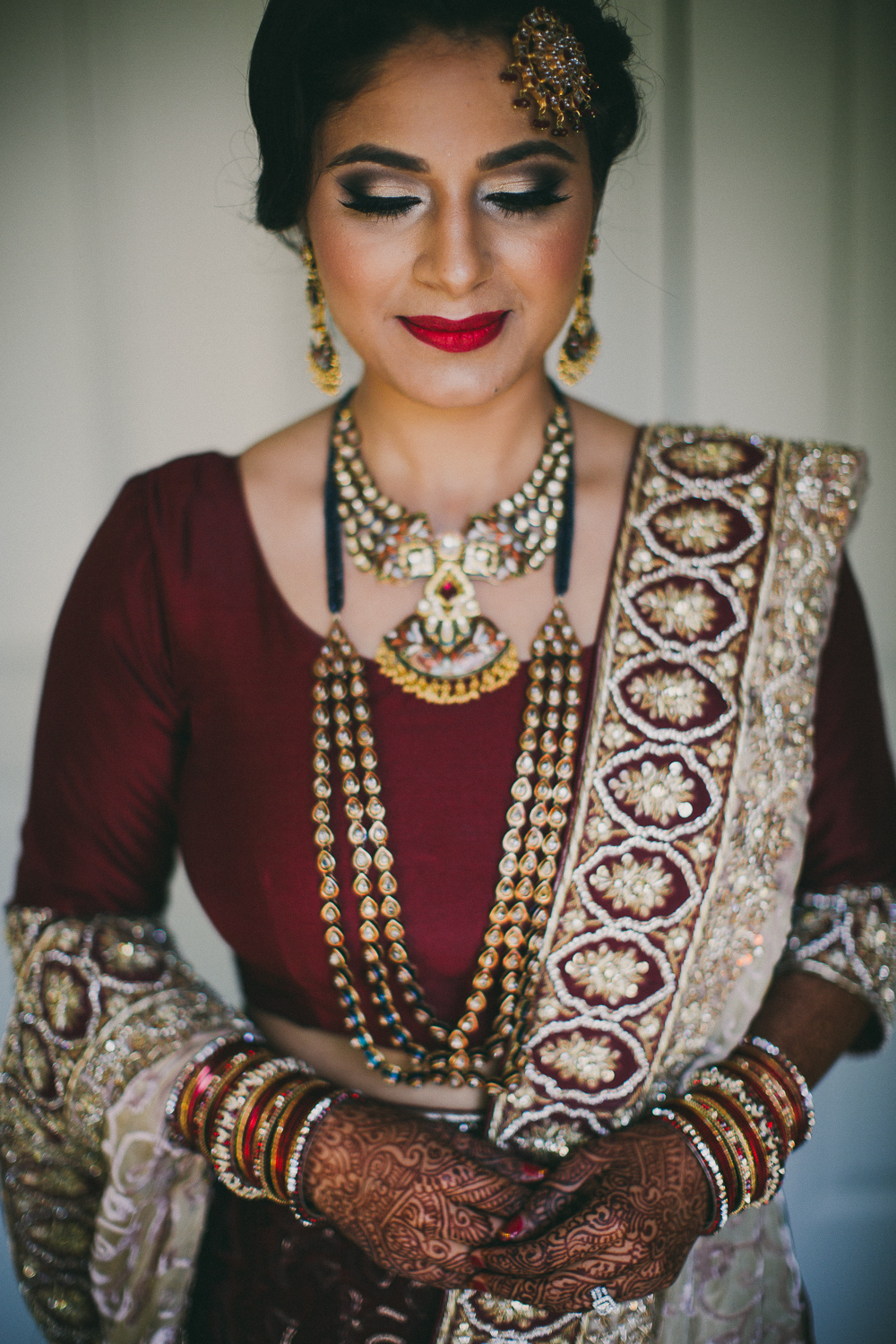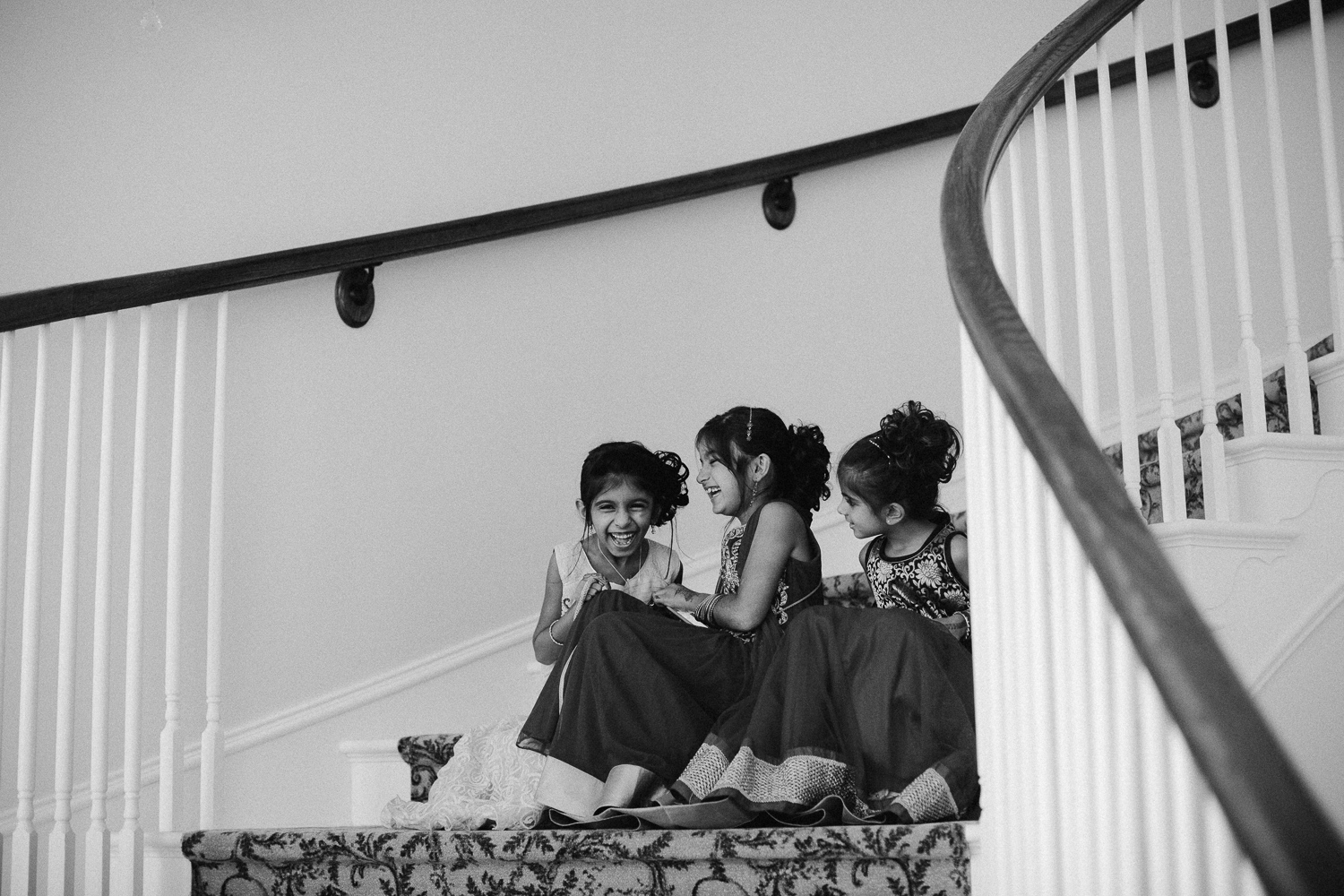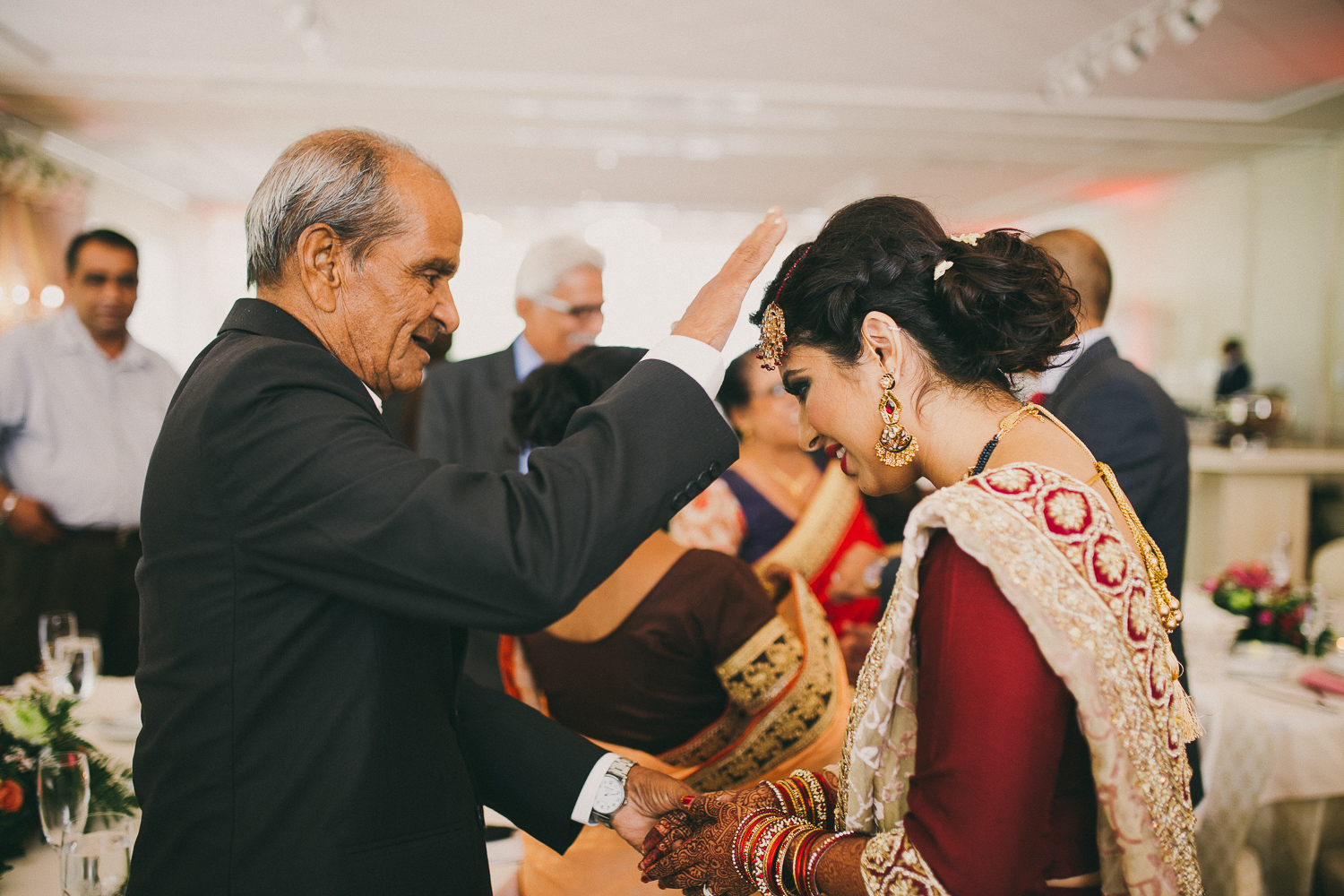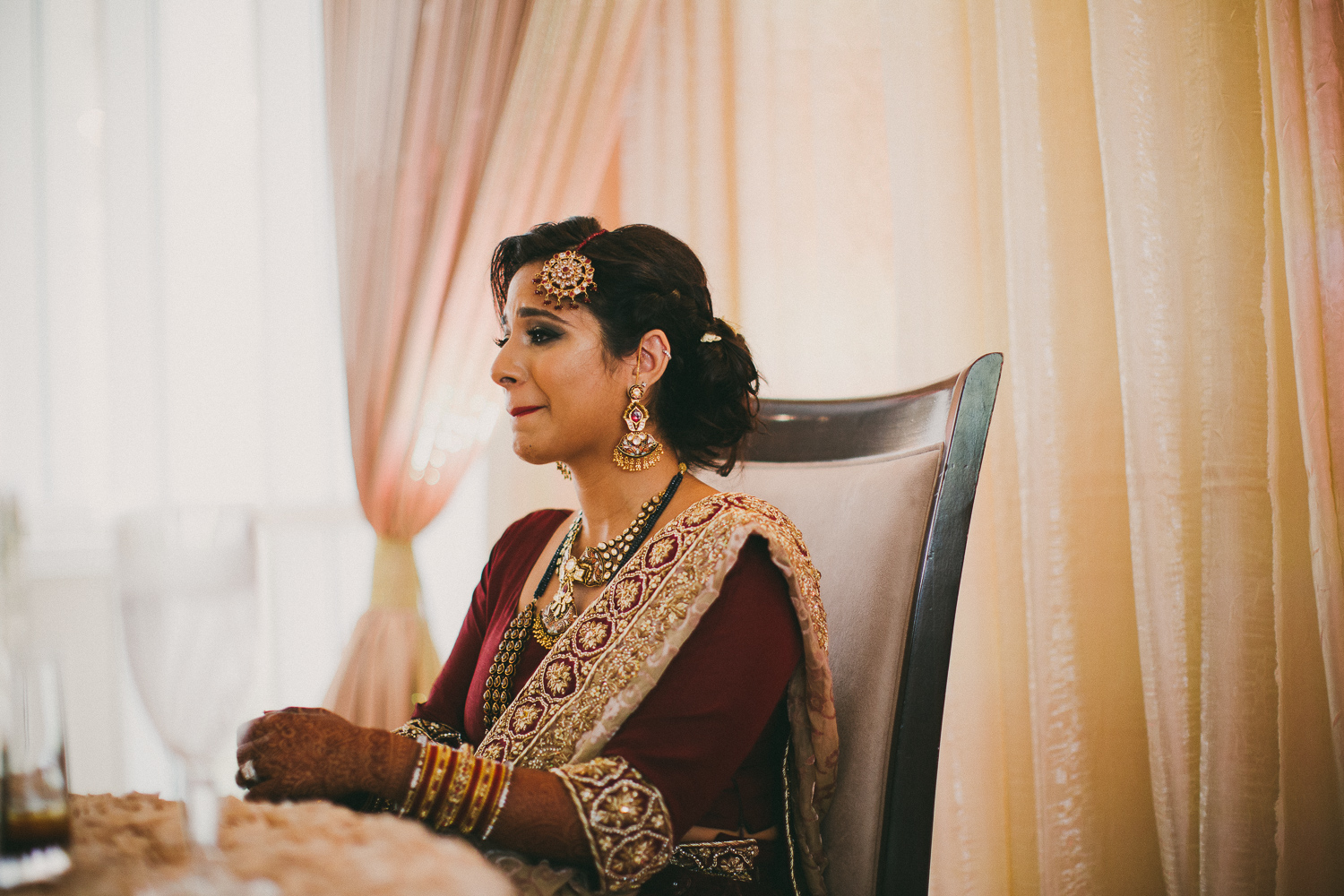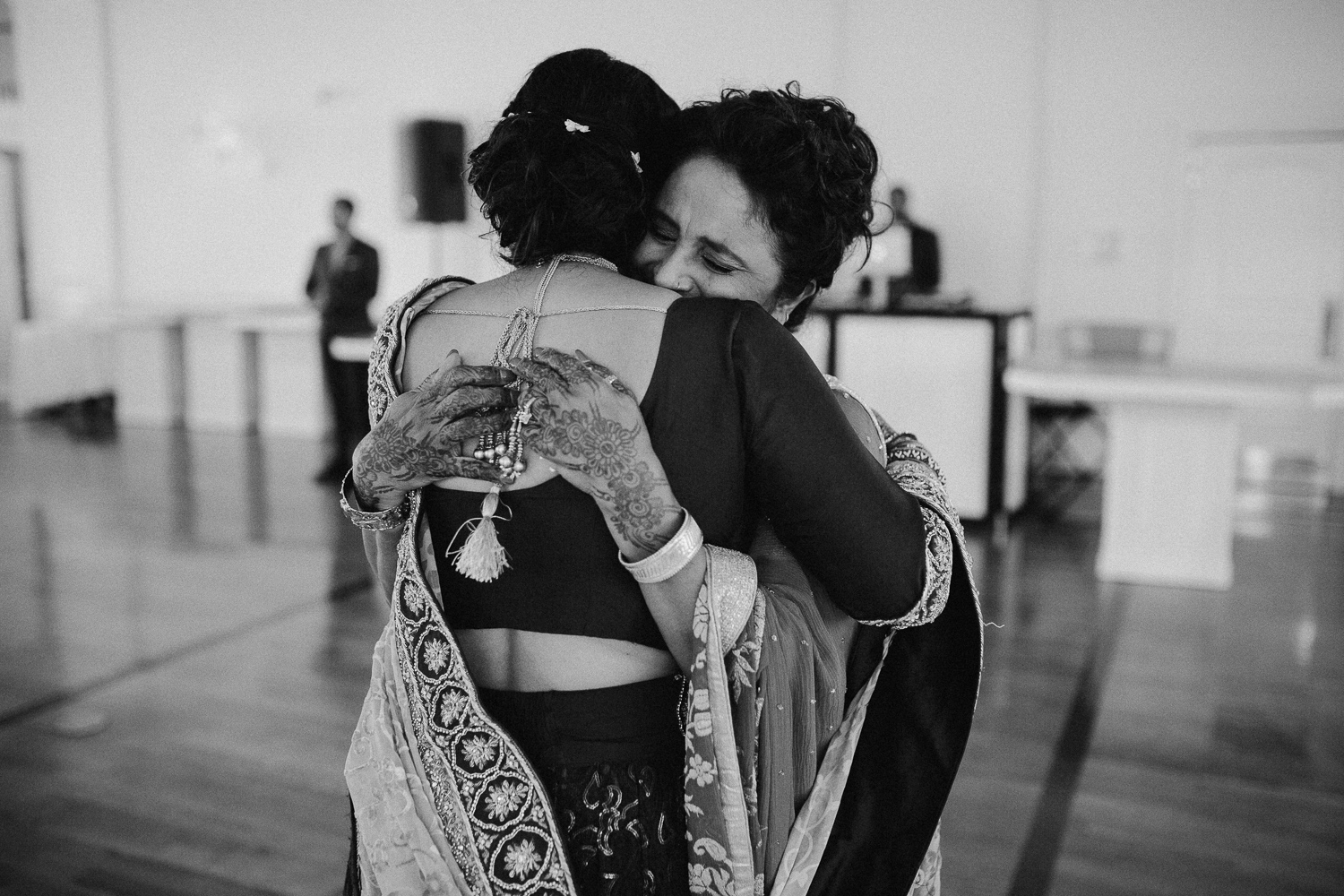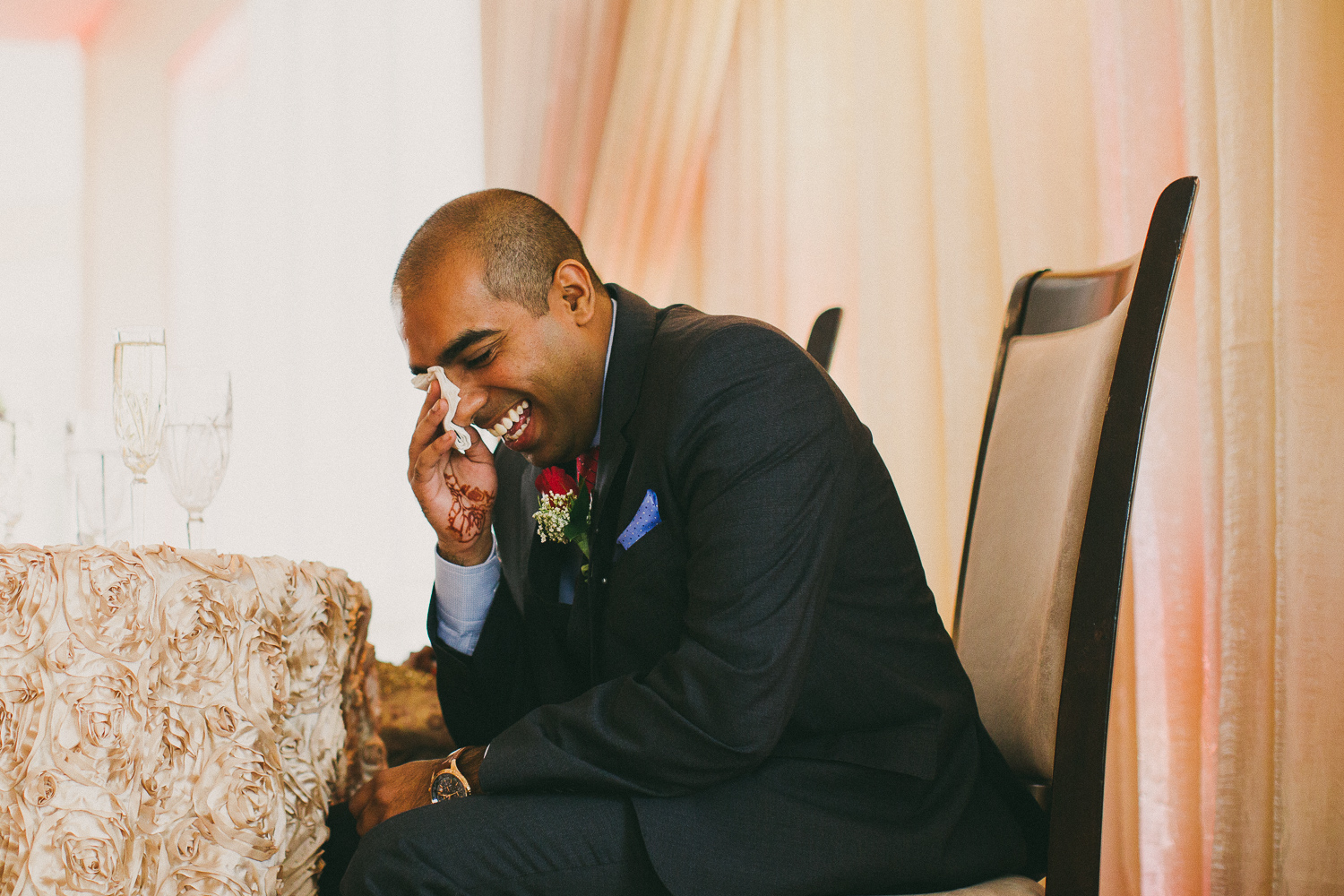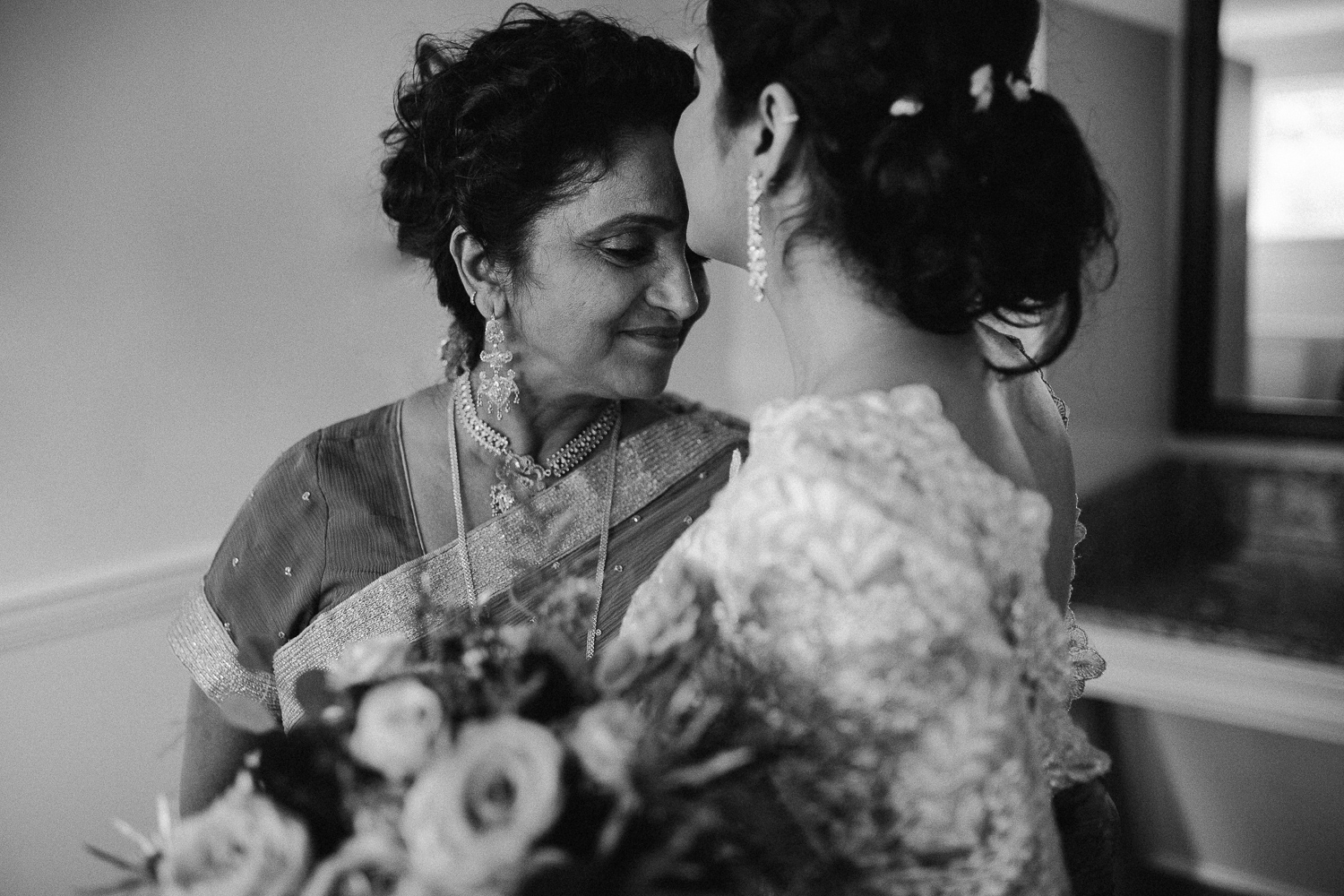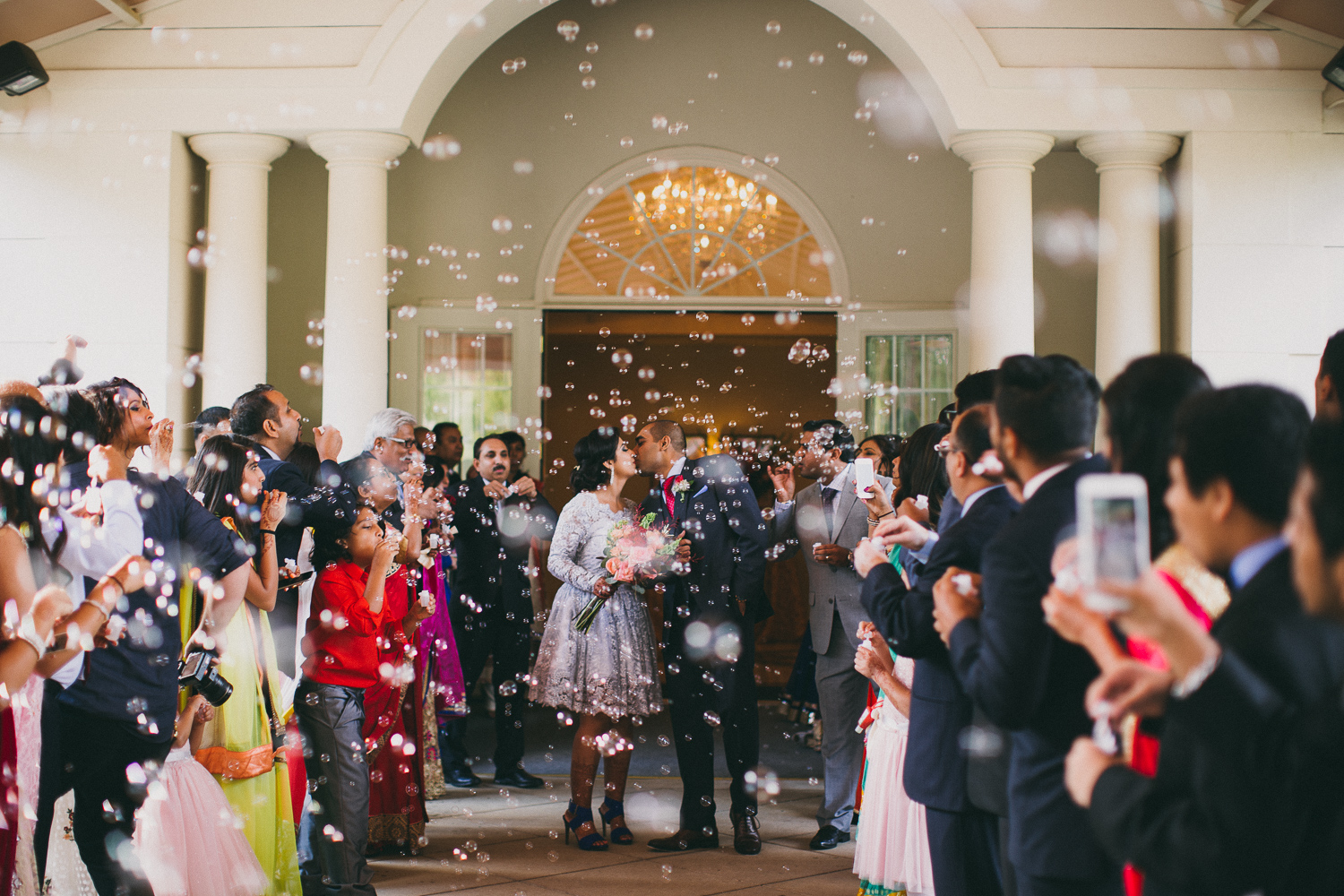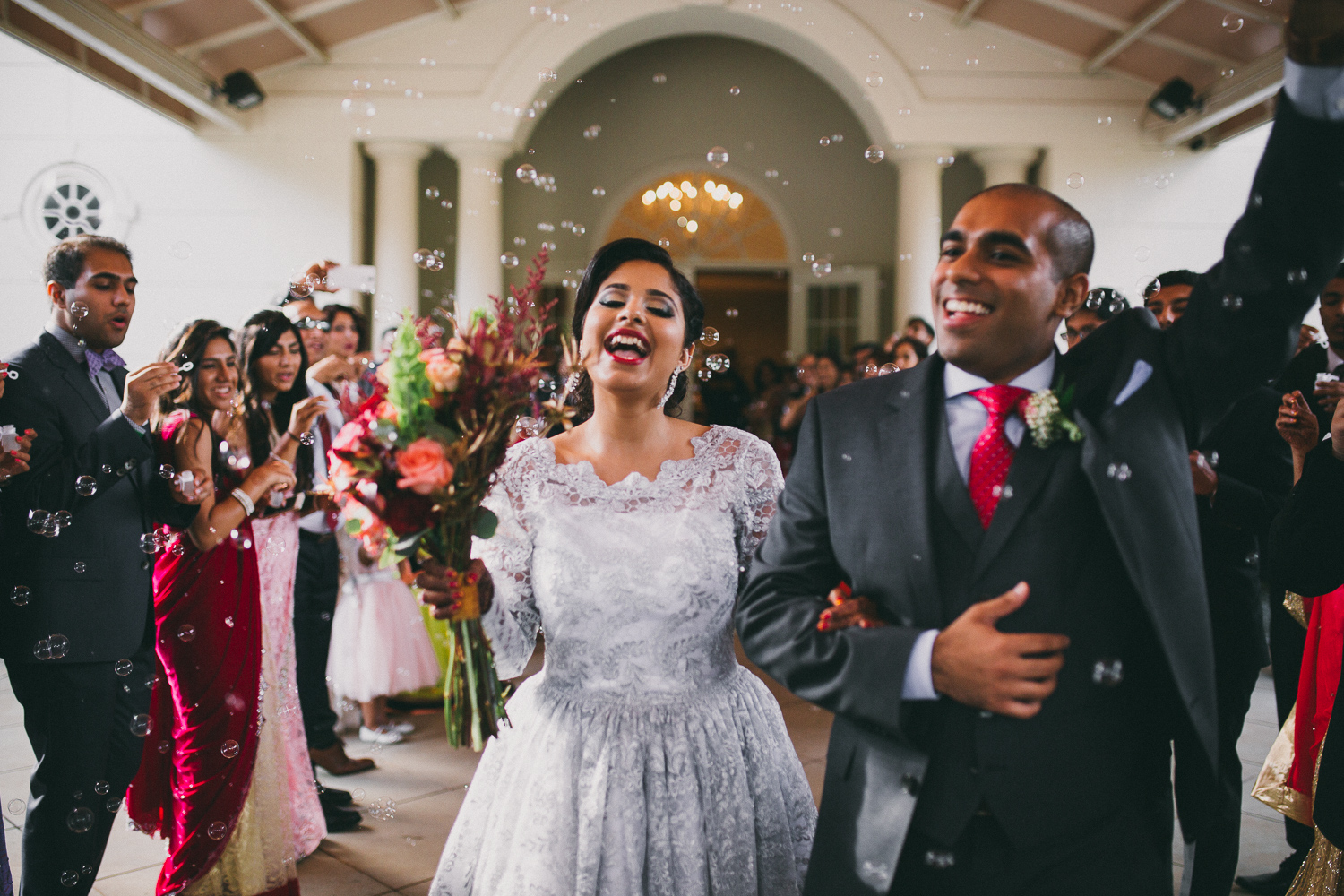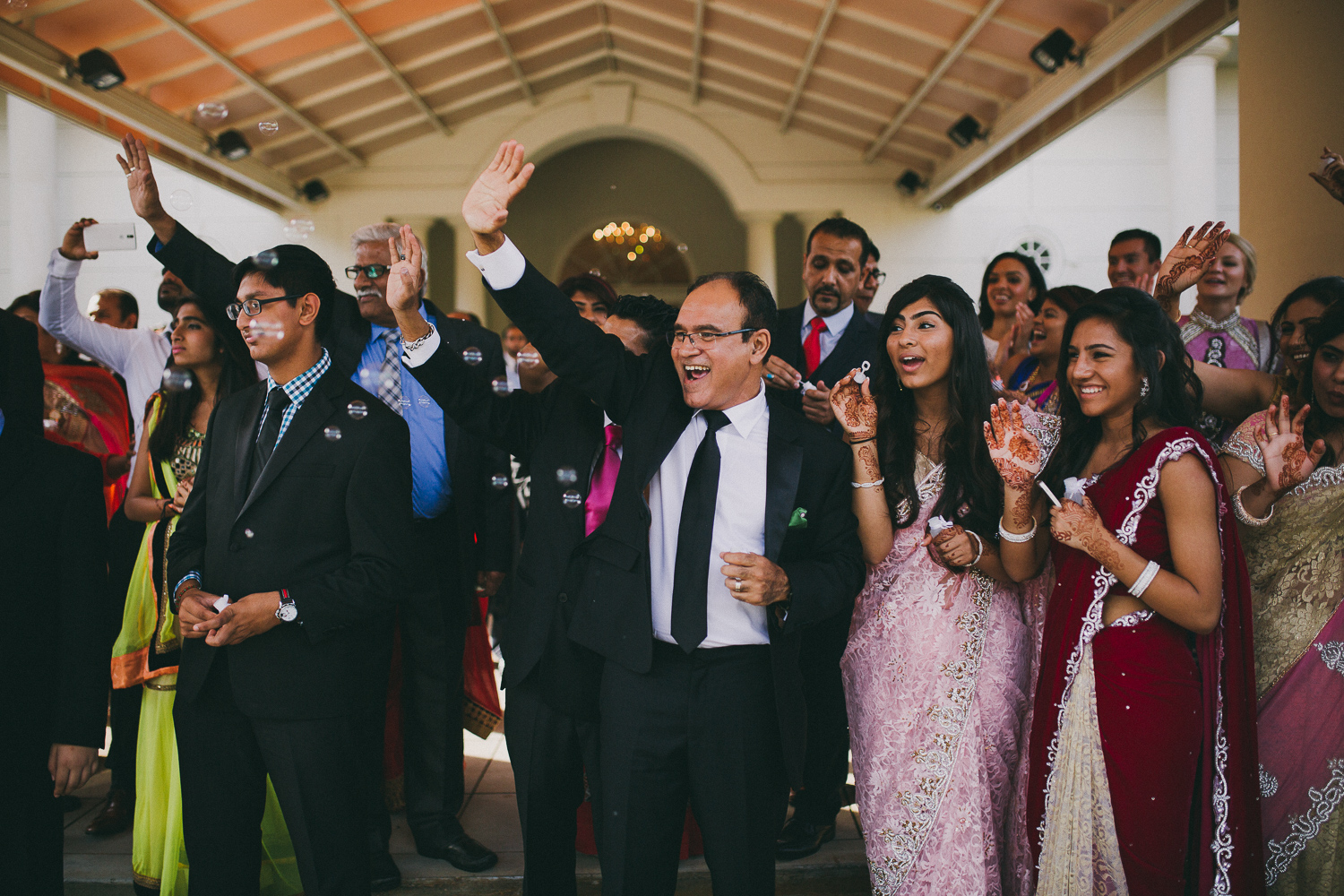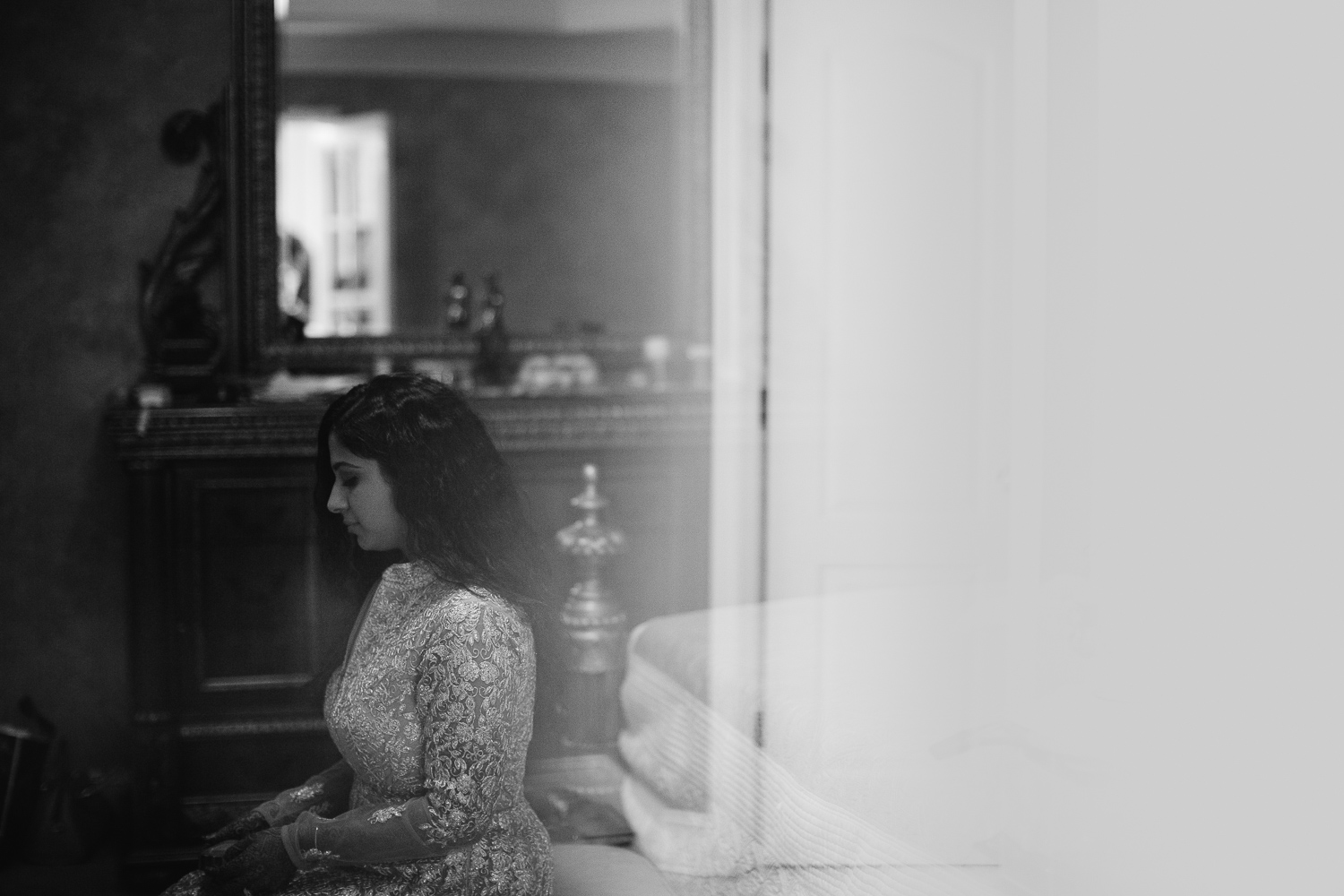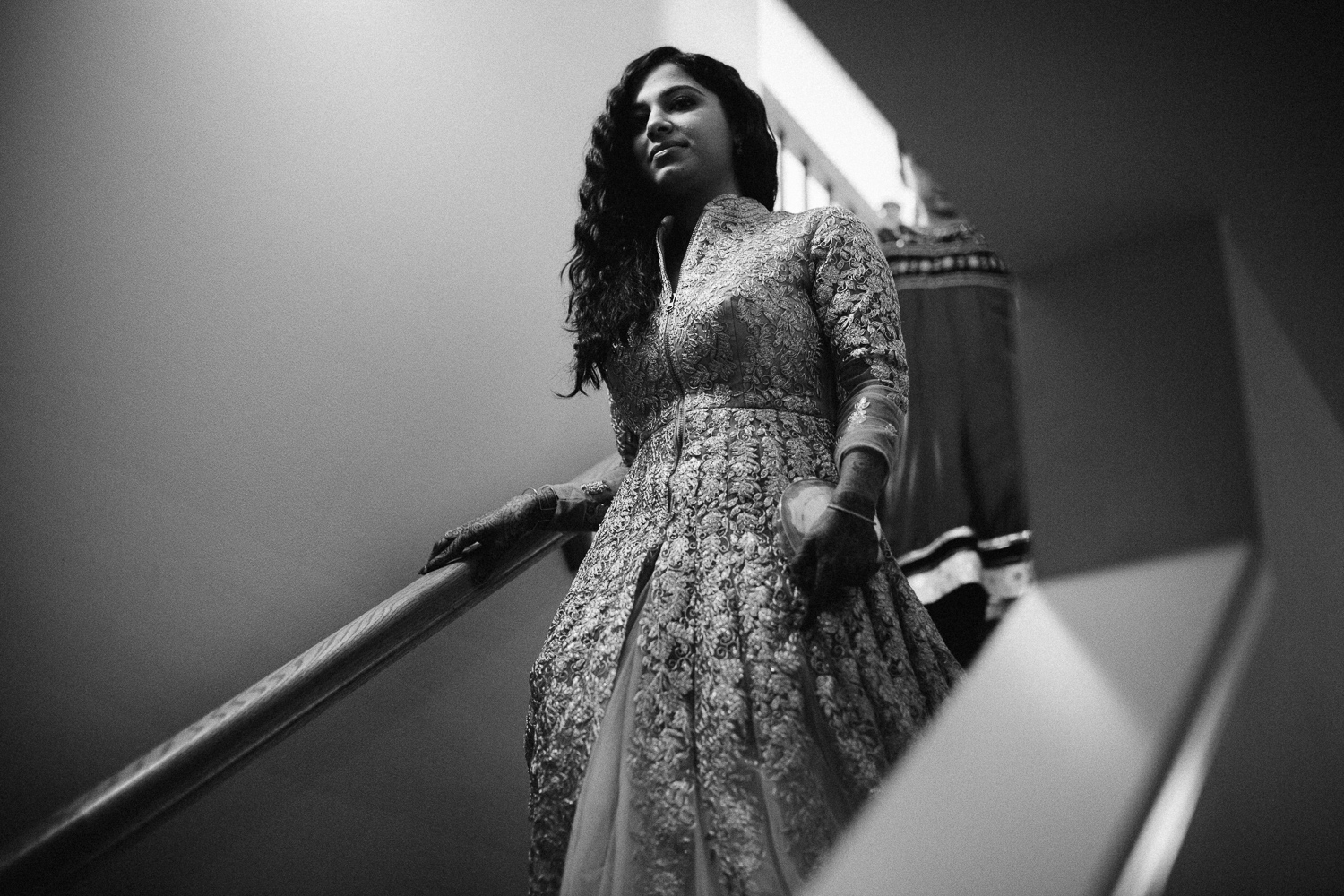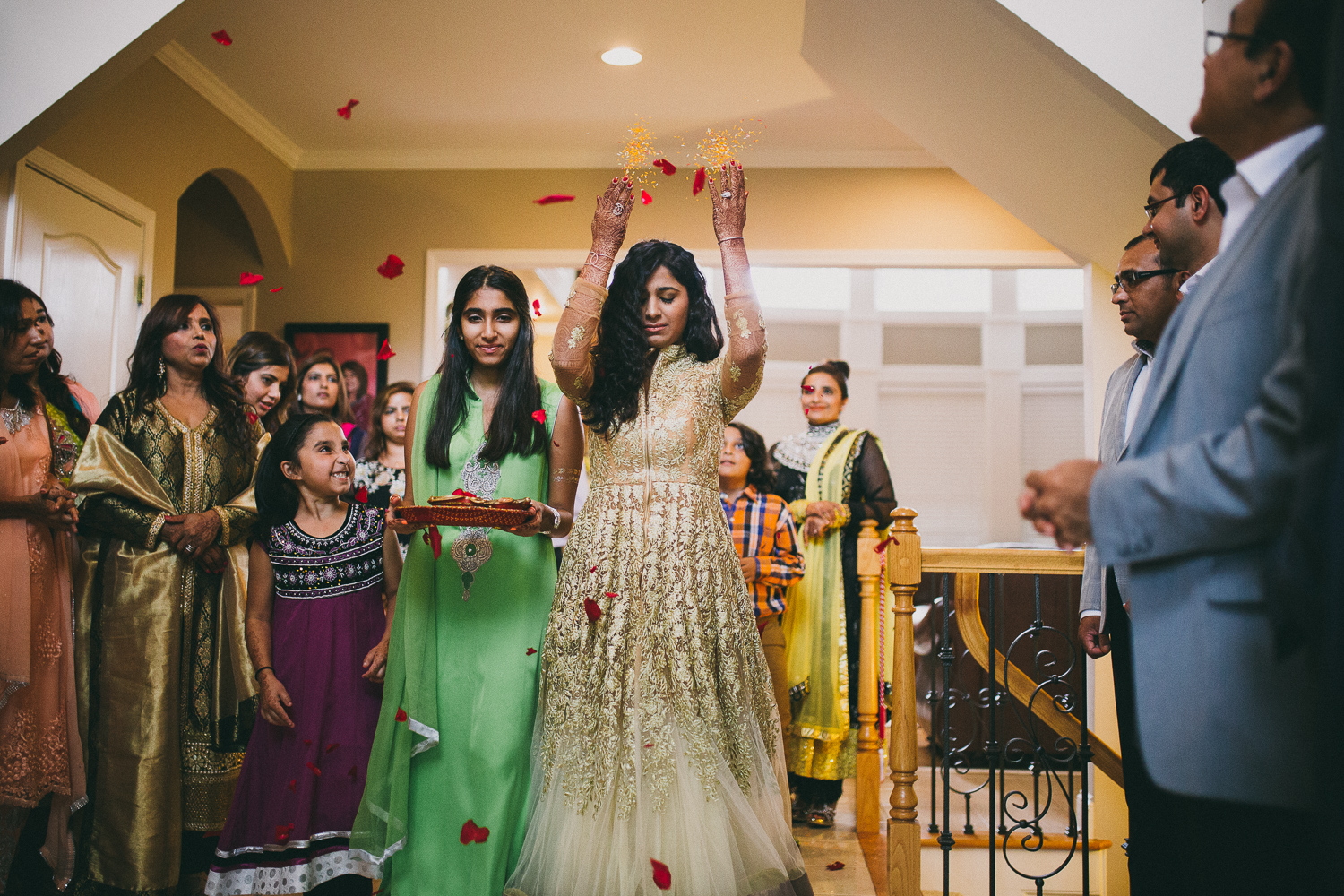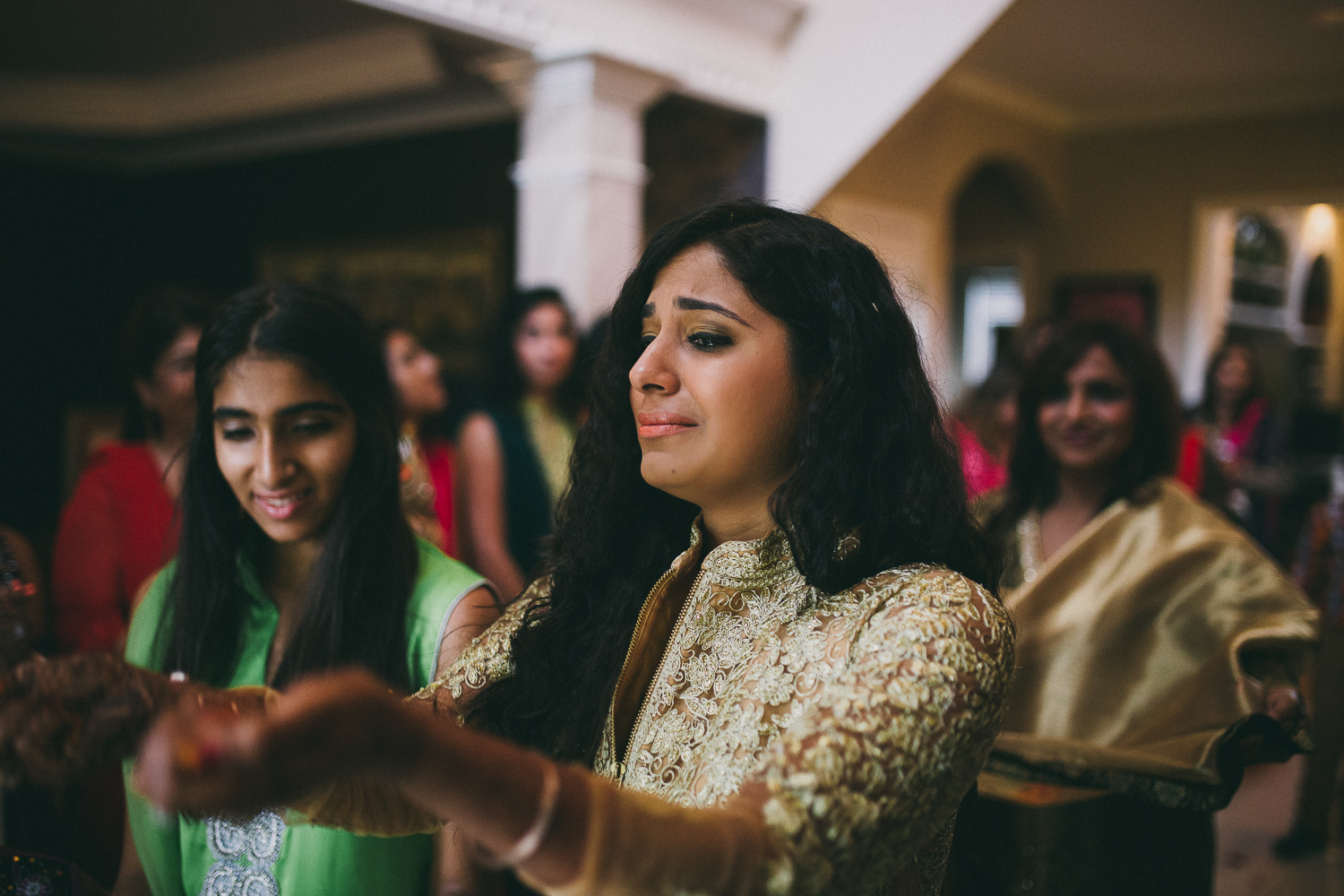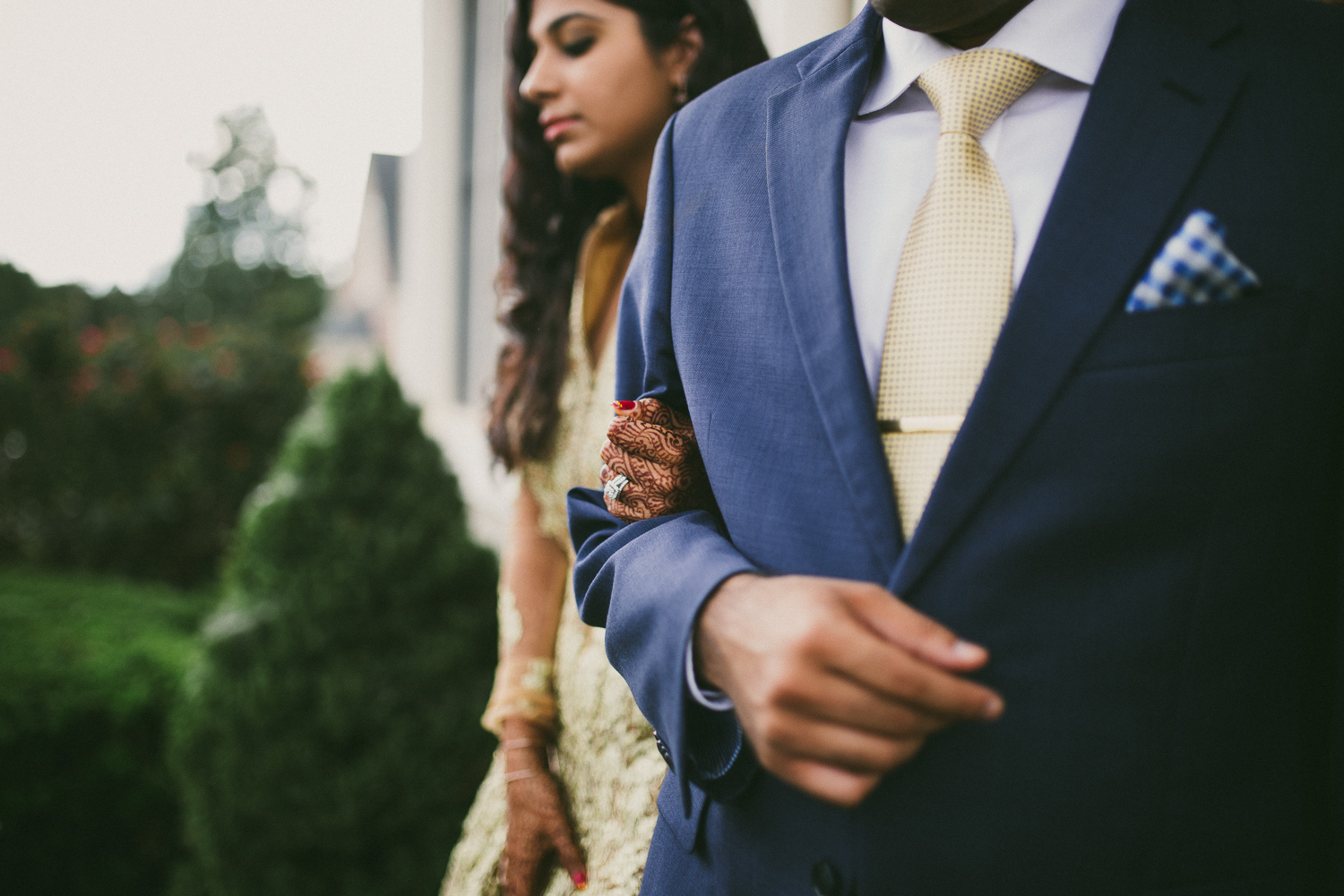DAY ONE - MEHNDI
Mehndi is the art of painting elaborate patterns on the skin with henna.
DAY TWO - PITHI & SANGEET
Pithi refers to a cleansing ceremony, in which the bride and groom are rubbed with turmeric paste in a beautification process. It is believed that turmeric softens and whitens the skin, so the purpose of this ceremony is to help the bride and groom be radiant for their wedding. The traditions continue with the men in the family showering the groom with eggs, flour, ketchup, mustard, maple syrup and anything else they can get their hands on. During the Sangeet, bride and groom's family and friends sang and performed dances as a tribute to the couple.
DAY THREE - NIKKAH & KHOBA KHOBI
In Arabic, marriage is called Nikkah. The religious ceremony consists of the recitation of Nikkah Nama (The Marriage Contract) in Arabic. After the ceremony, the family tied the ends of a scarf on Annie + Noordin in a sacred knot, symbolizing everlasting togetherness. During Khoba Khobi, Annie + Noordin sat in front of each other with a bowl of rice between them. A coin is dropped inside and they have to race to see who finds the coin first. The winner is considered the head of the household. Noordin cheated by hiding a coin in his lap. However, he didn't get away with it. They had a rematch and Annie was named head of household! After the rituals, we took them outside and let their friends throw rice on them for a few portraits.
DAY FOUR - CIVIL CEREMONY
This day was very similar to an American wedding, but with a lot more color and dancing!
DAY FIVE - SATADA (See Off Supper)
This day focused on the intimate tradition of Annie's family giving her away to Noordin.
As Annie walked out of the house for the final time, she threw back rice for her mother to catch symbolizing blessings for her previous household.


